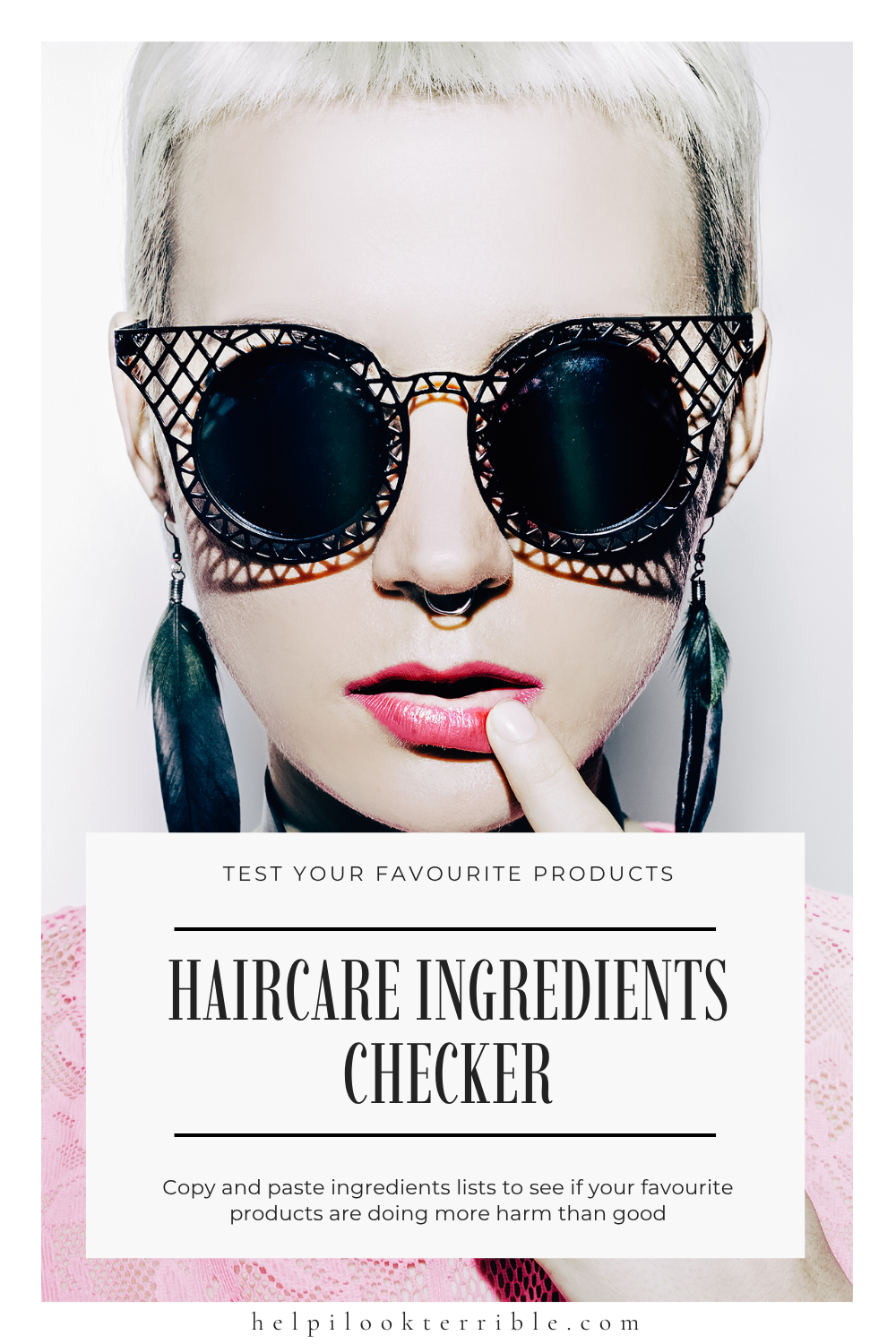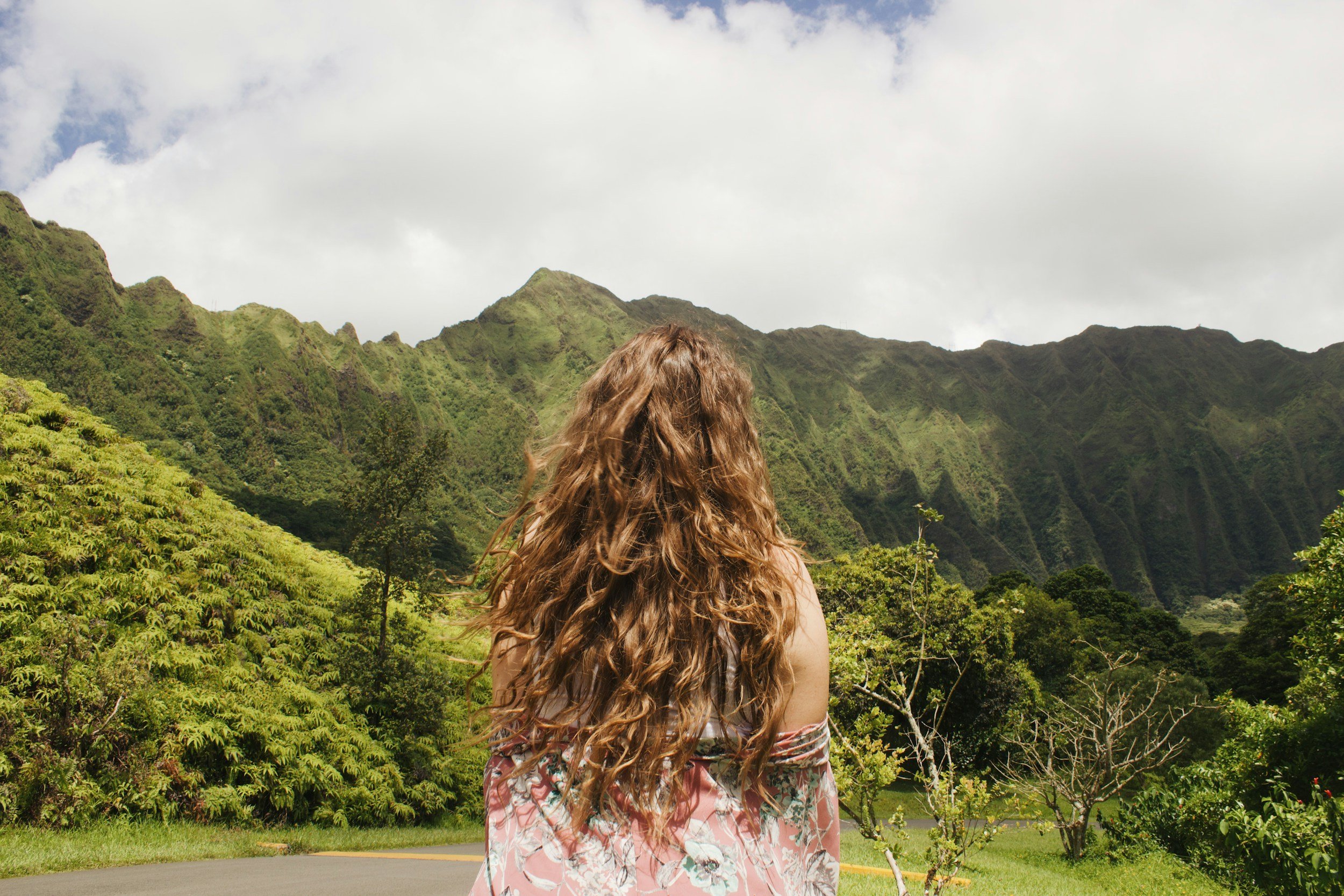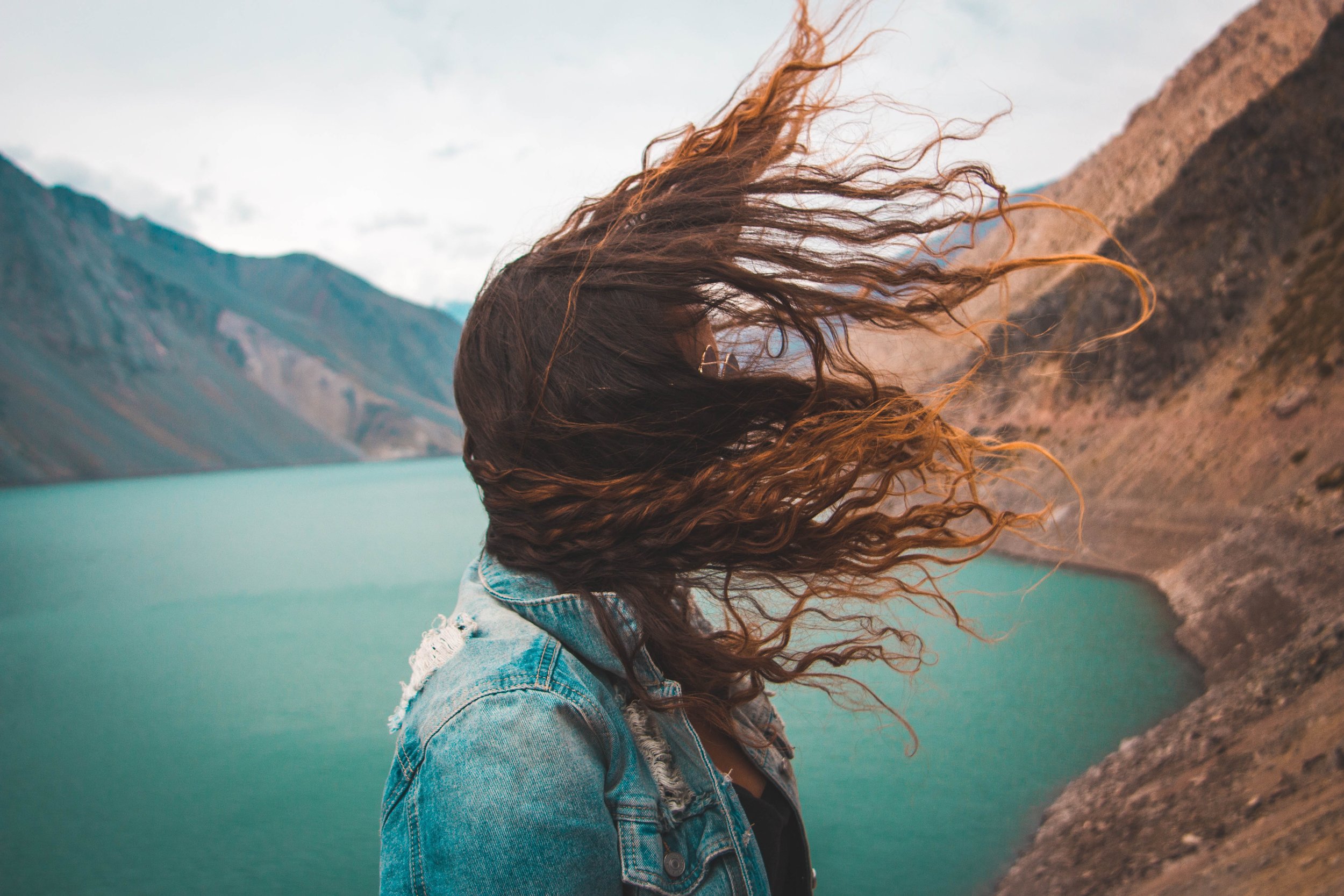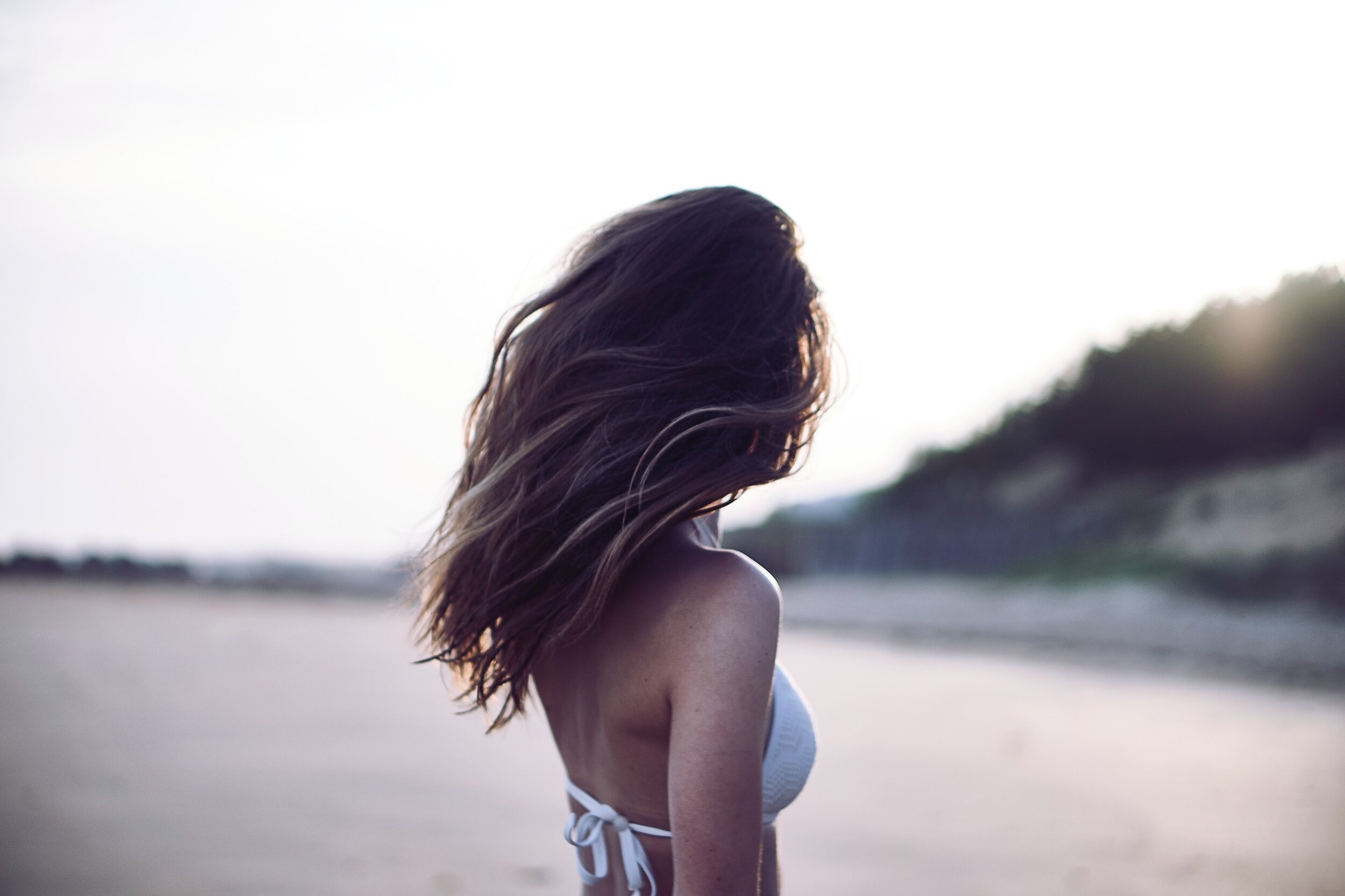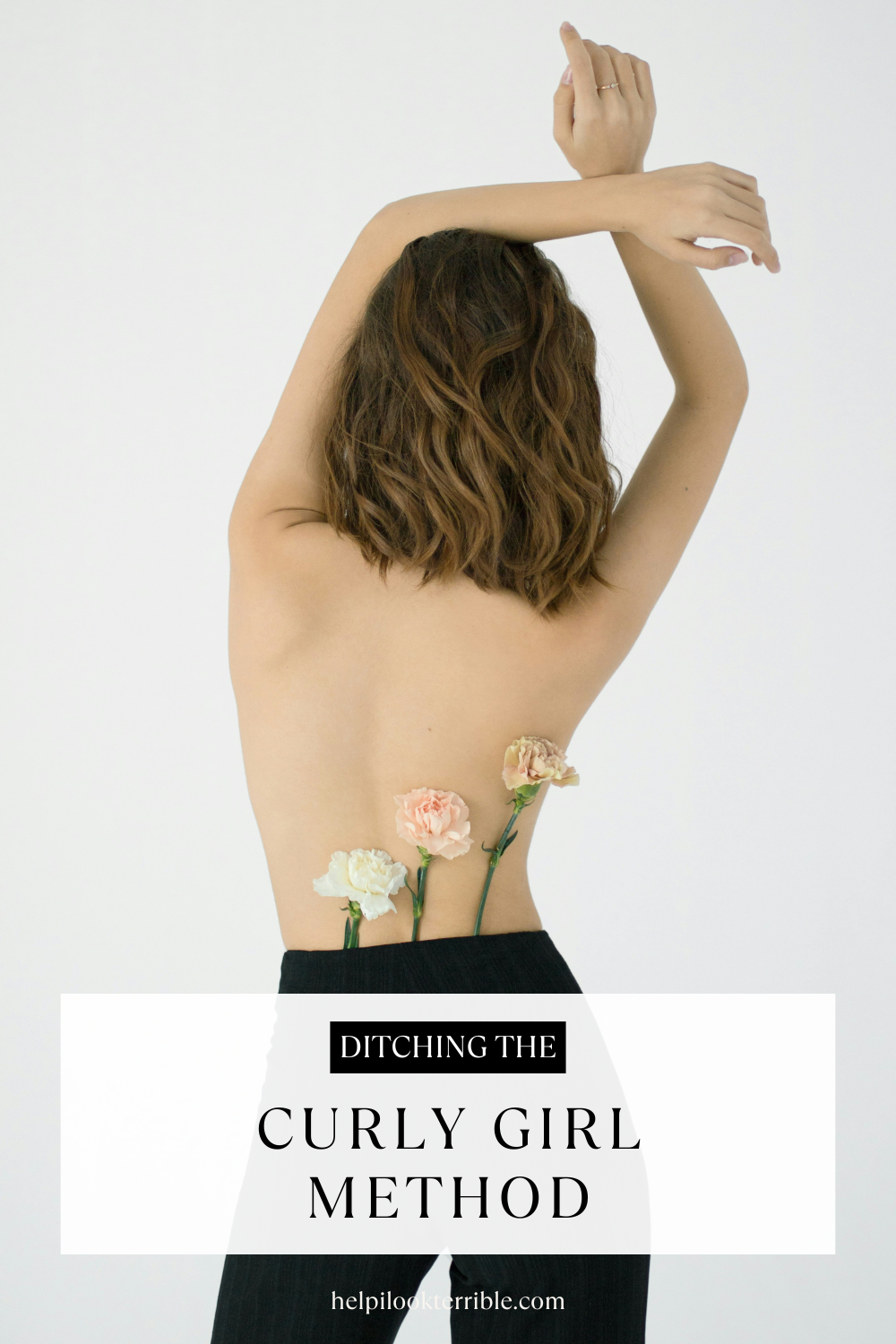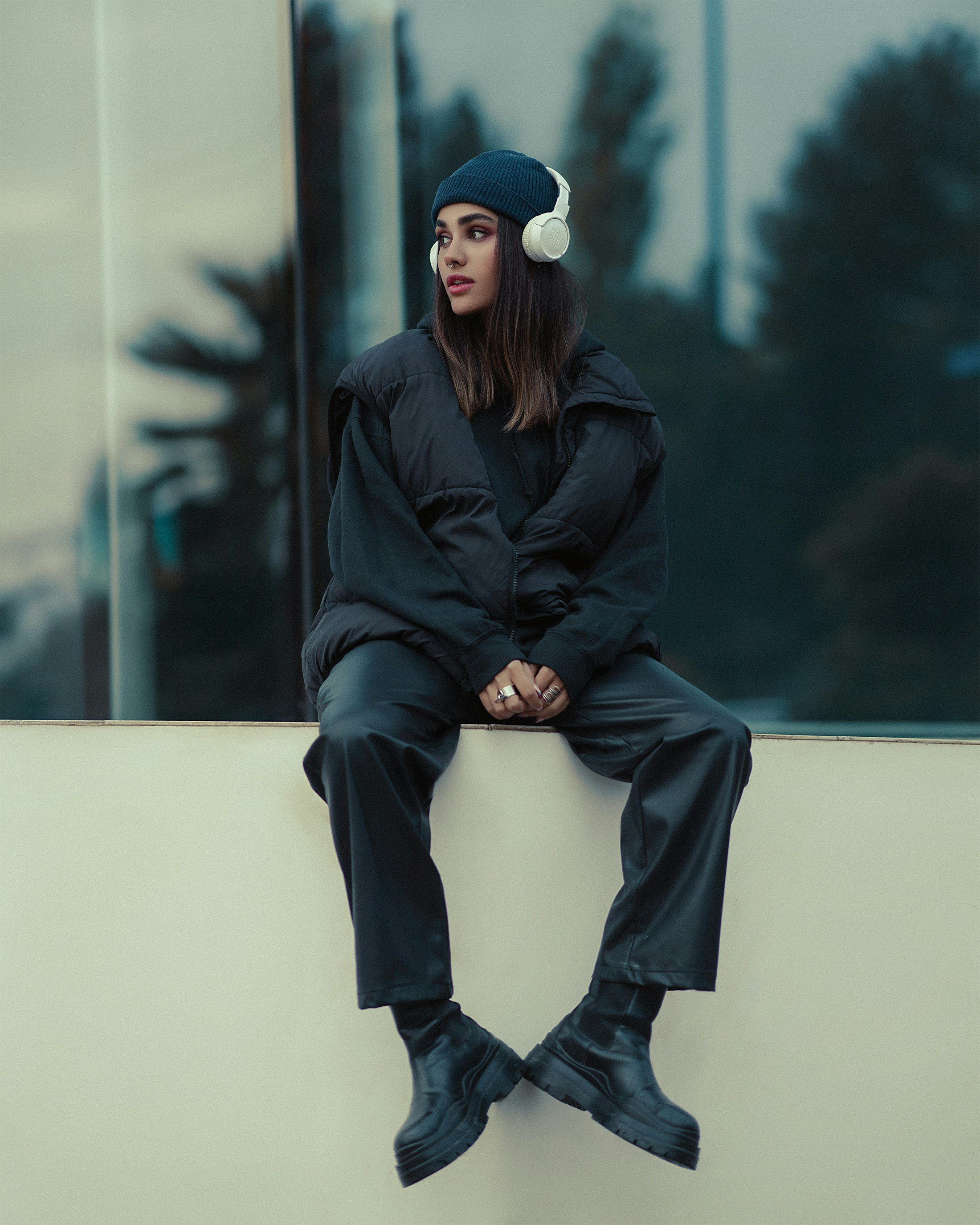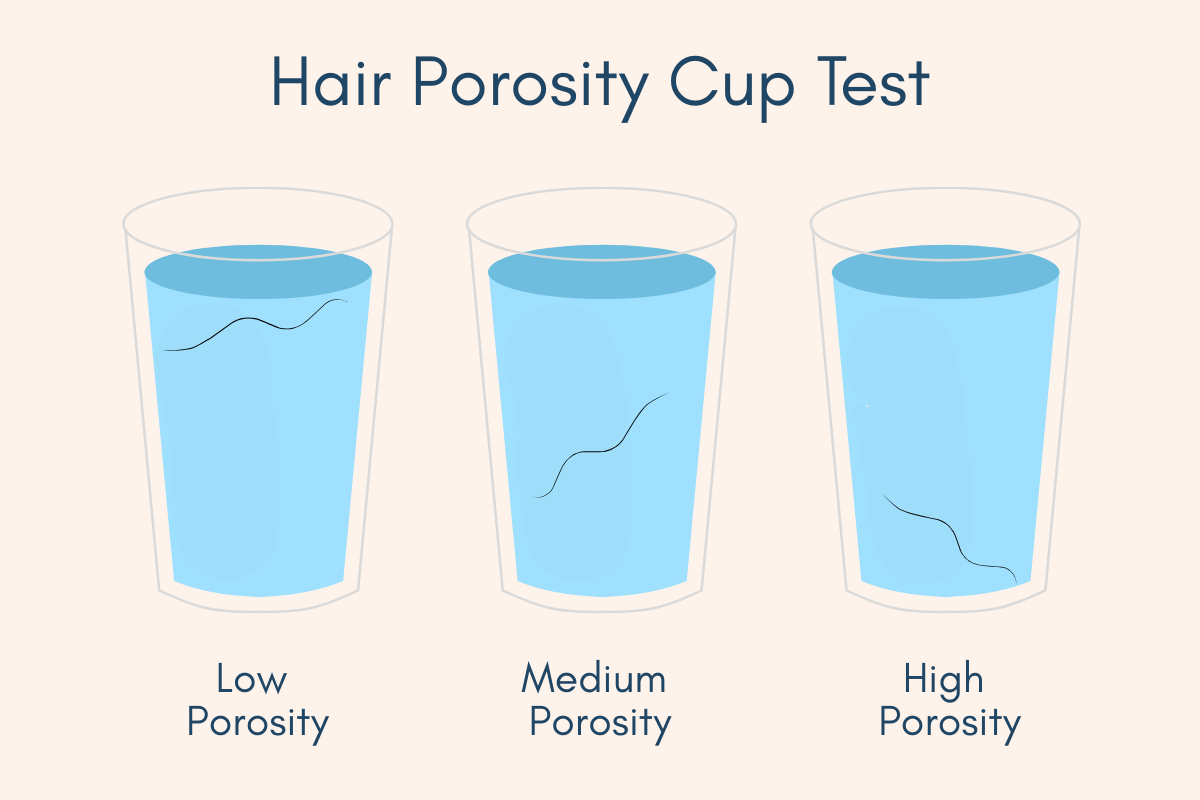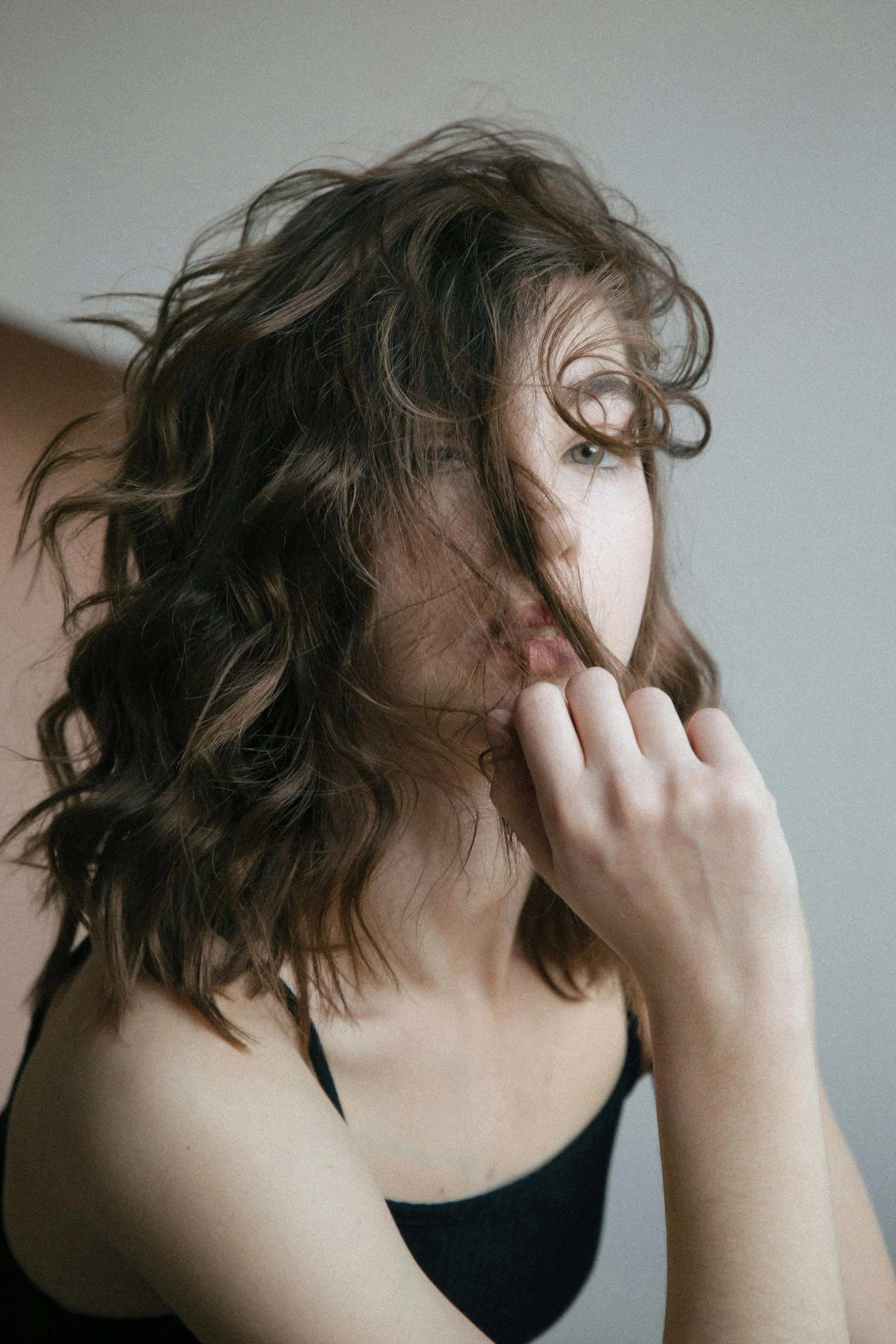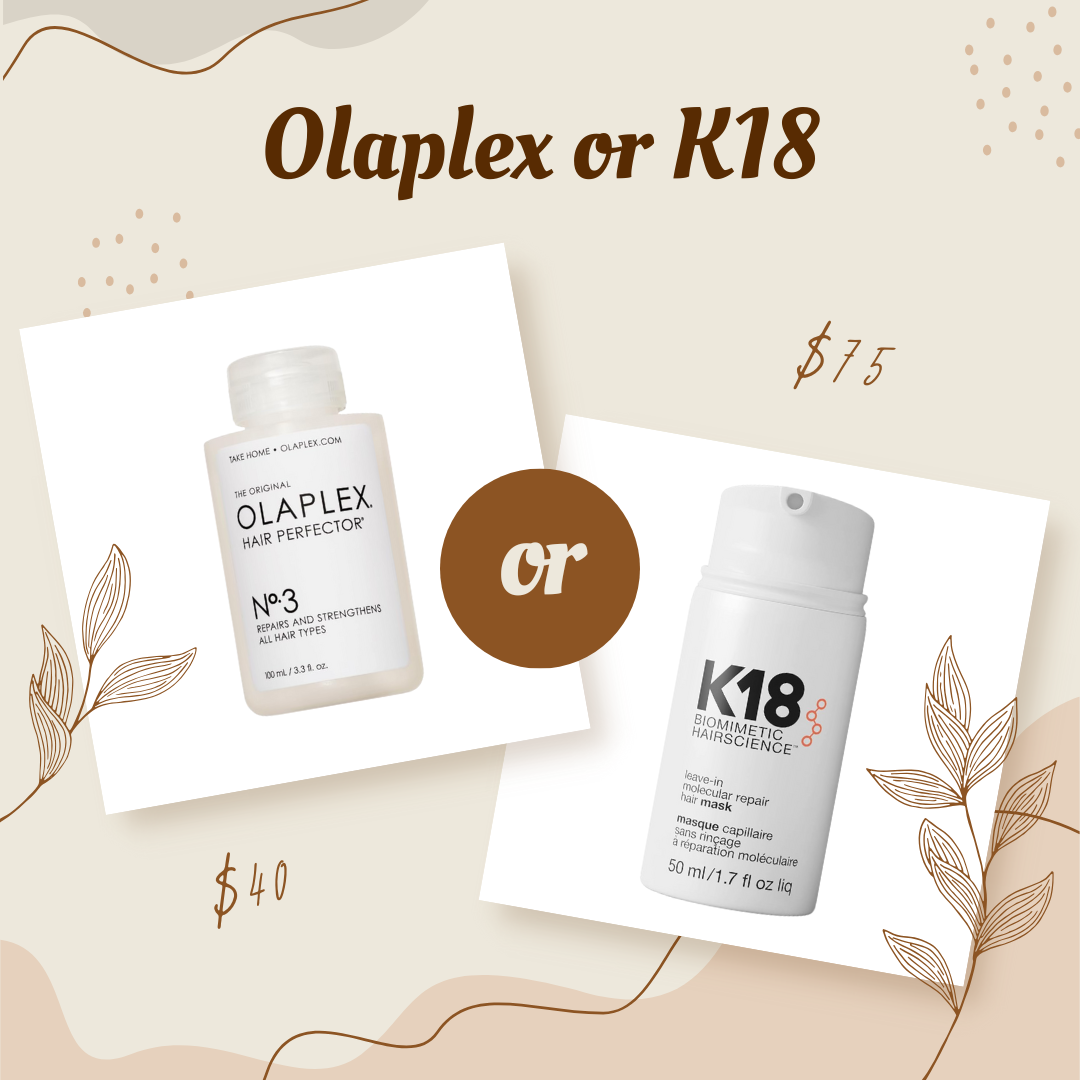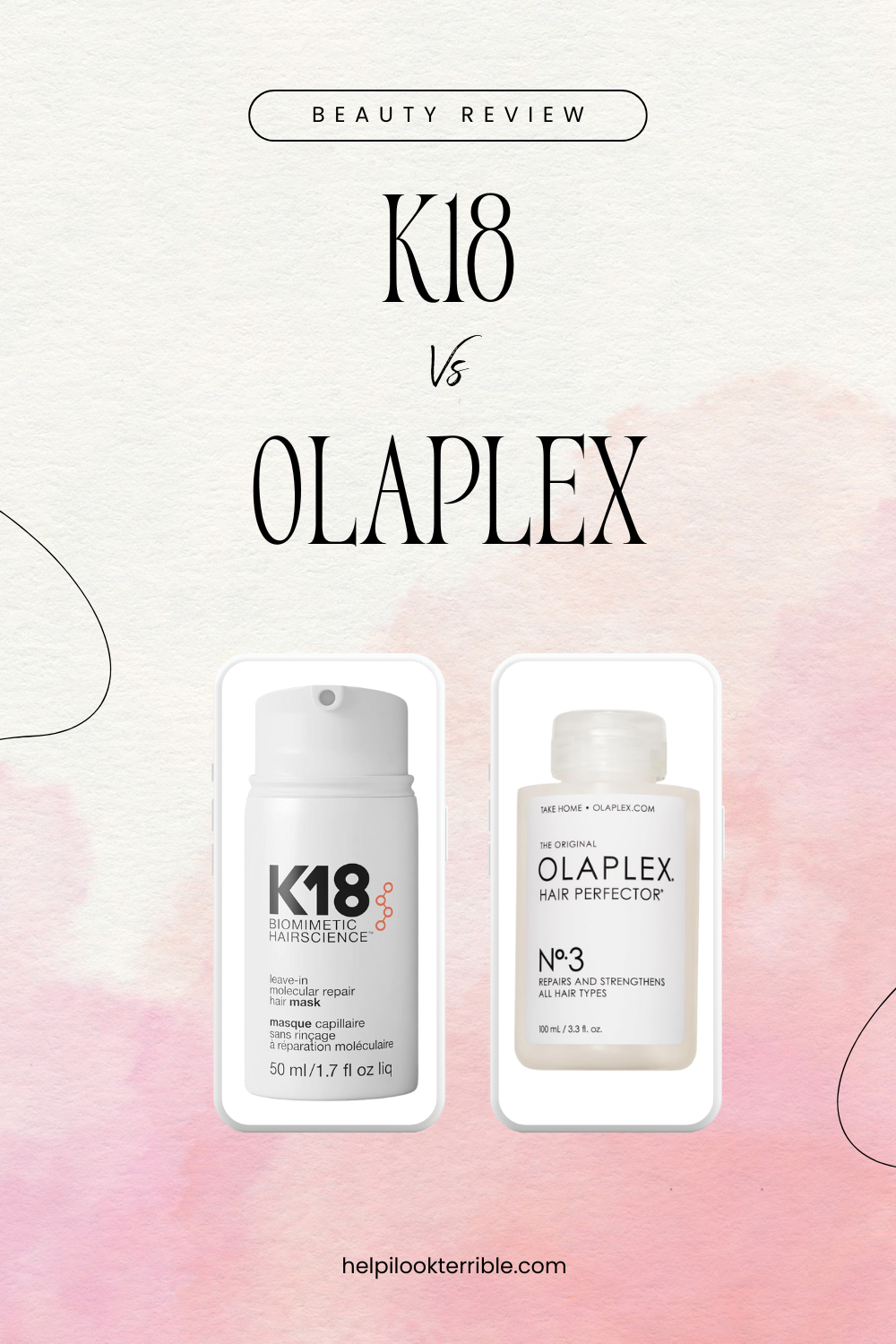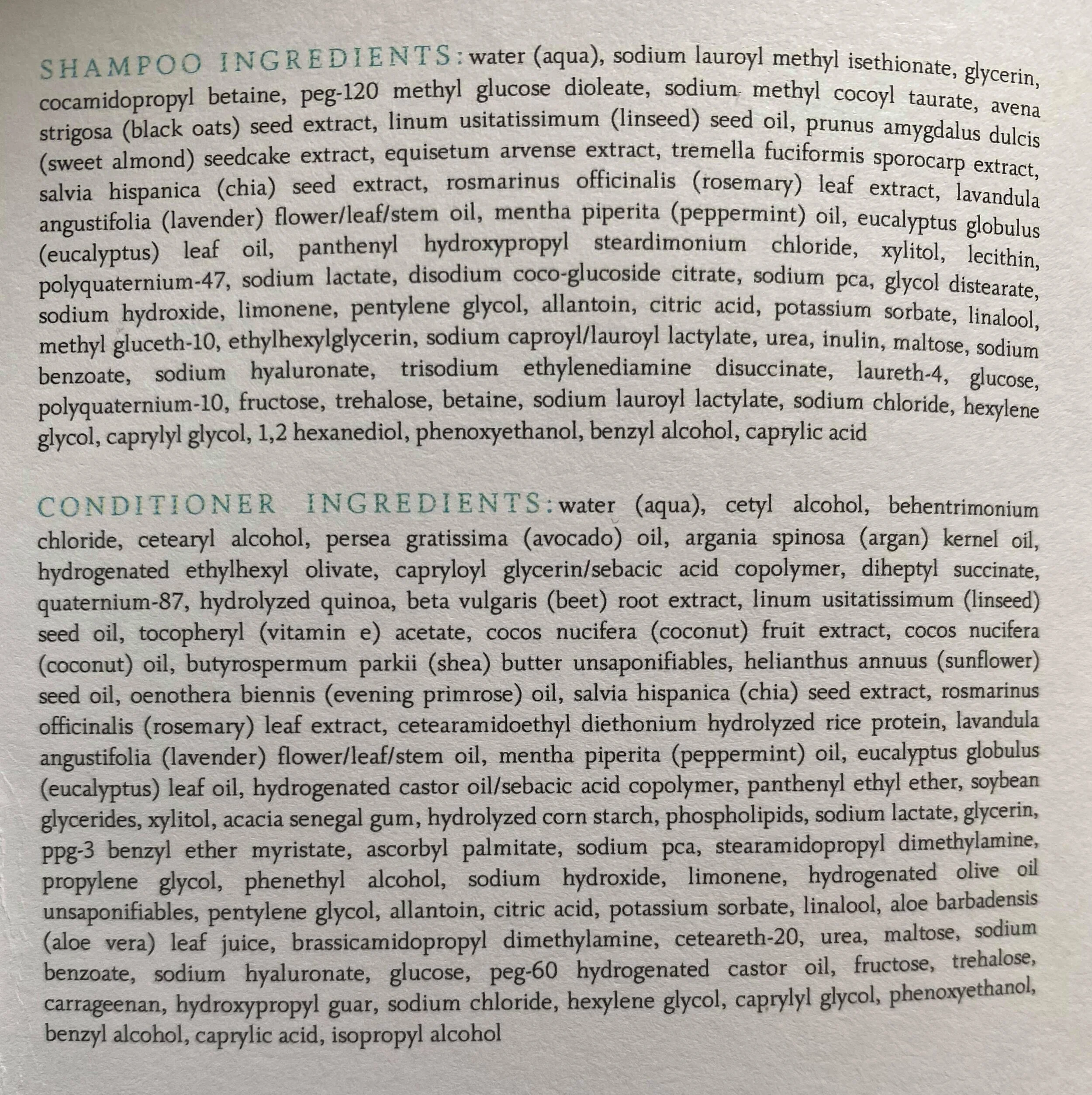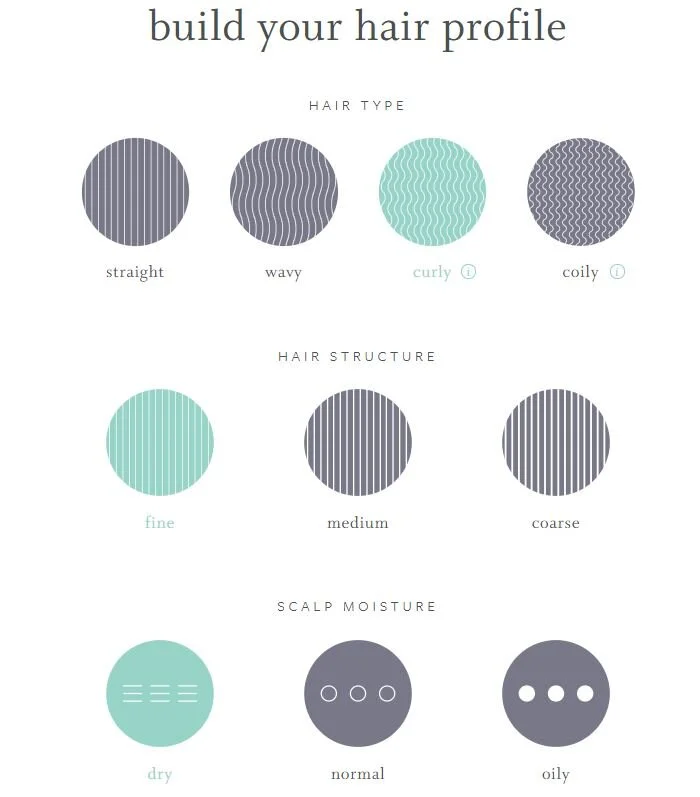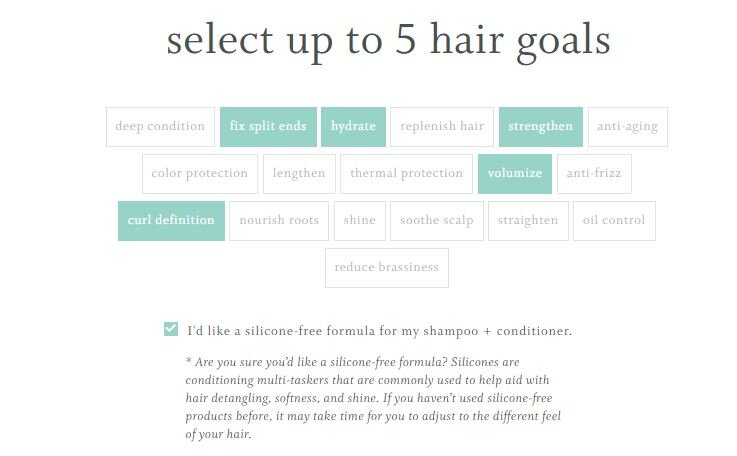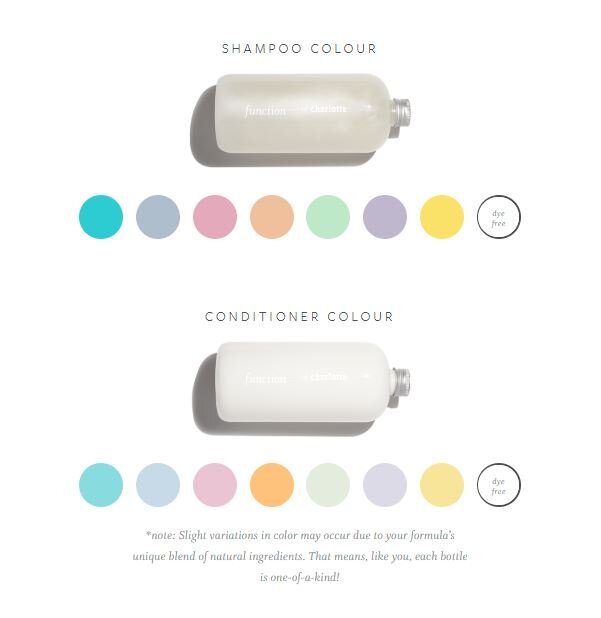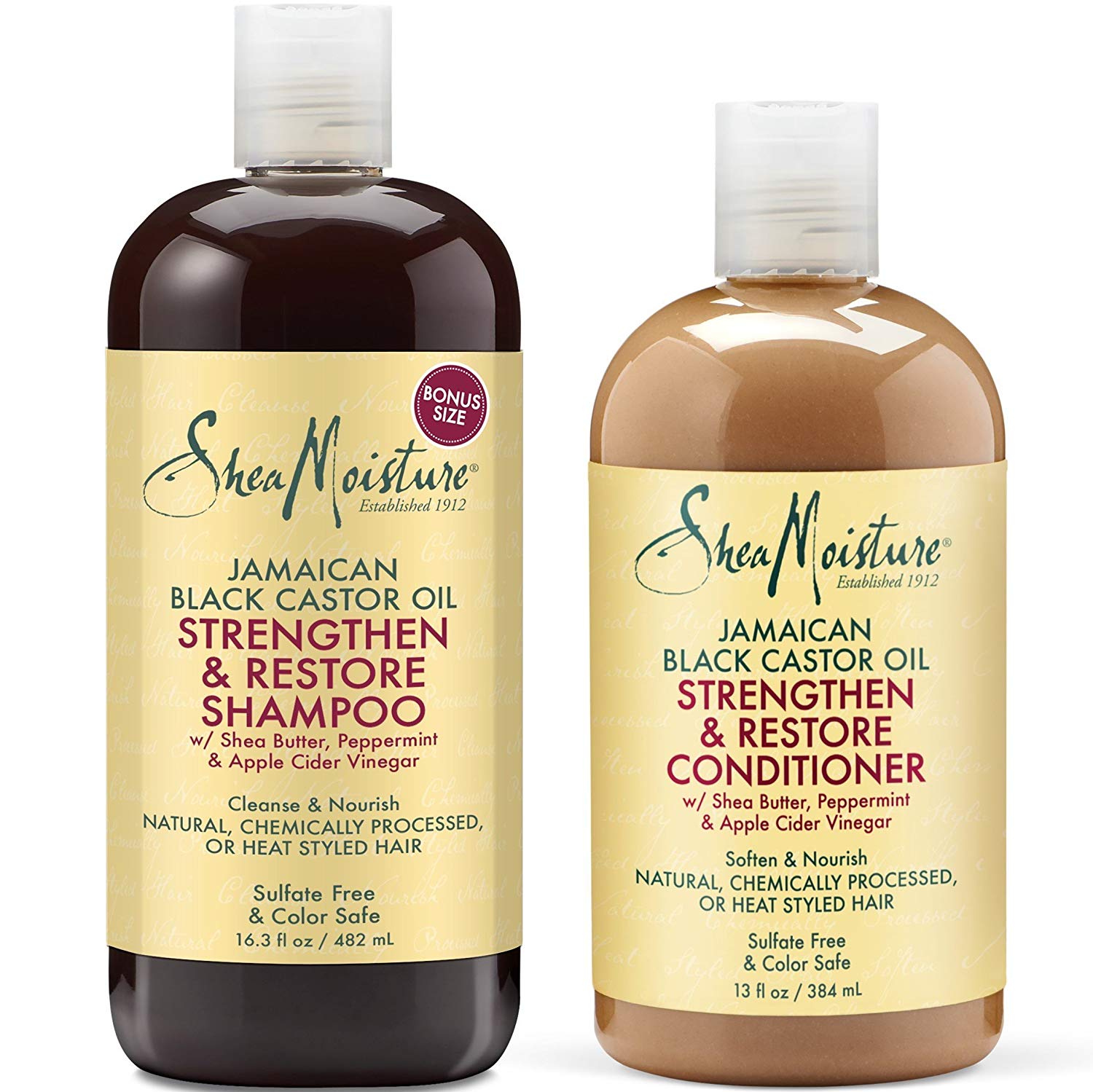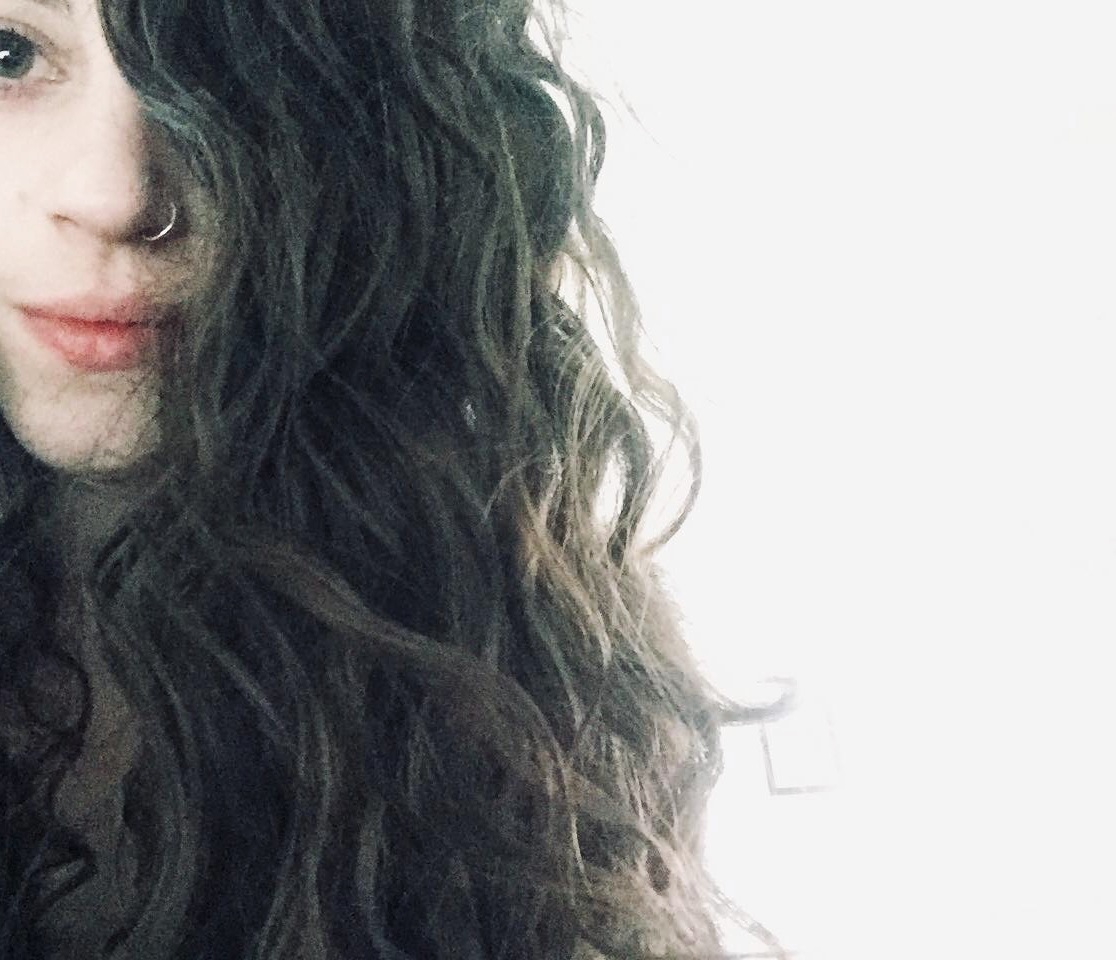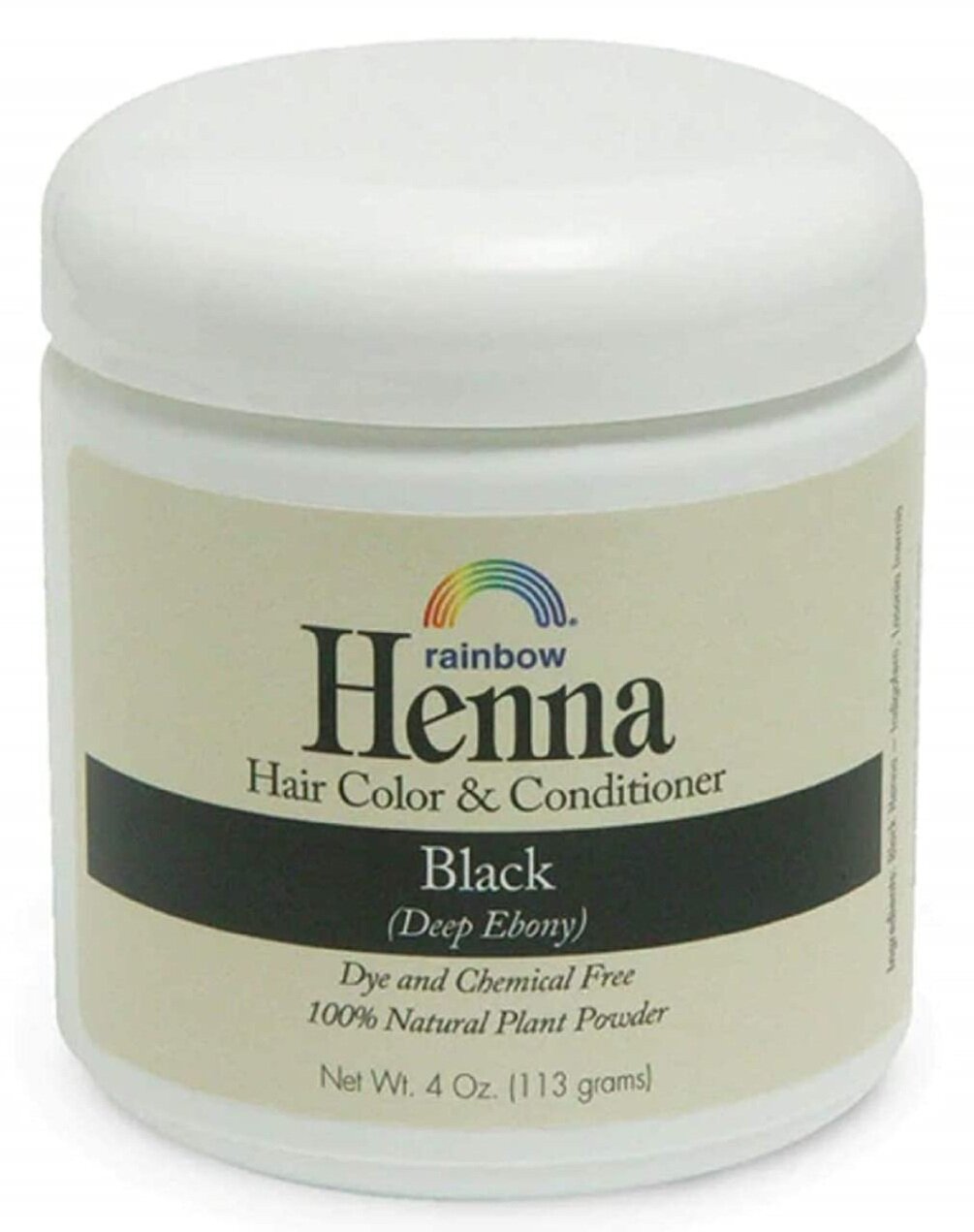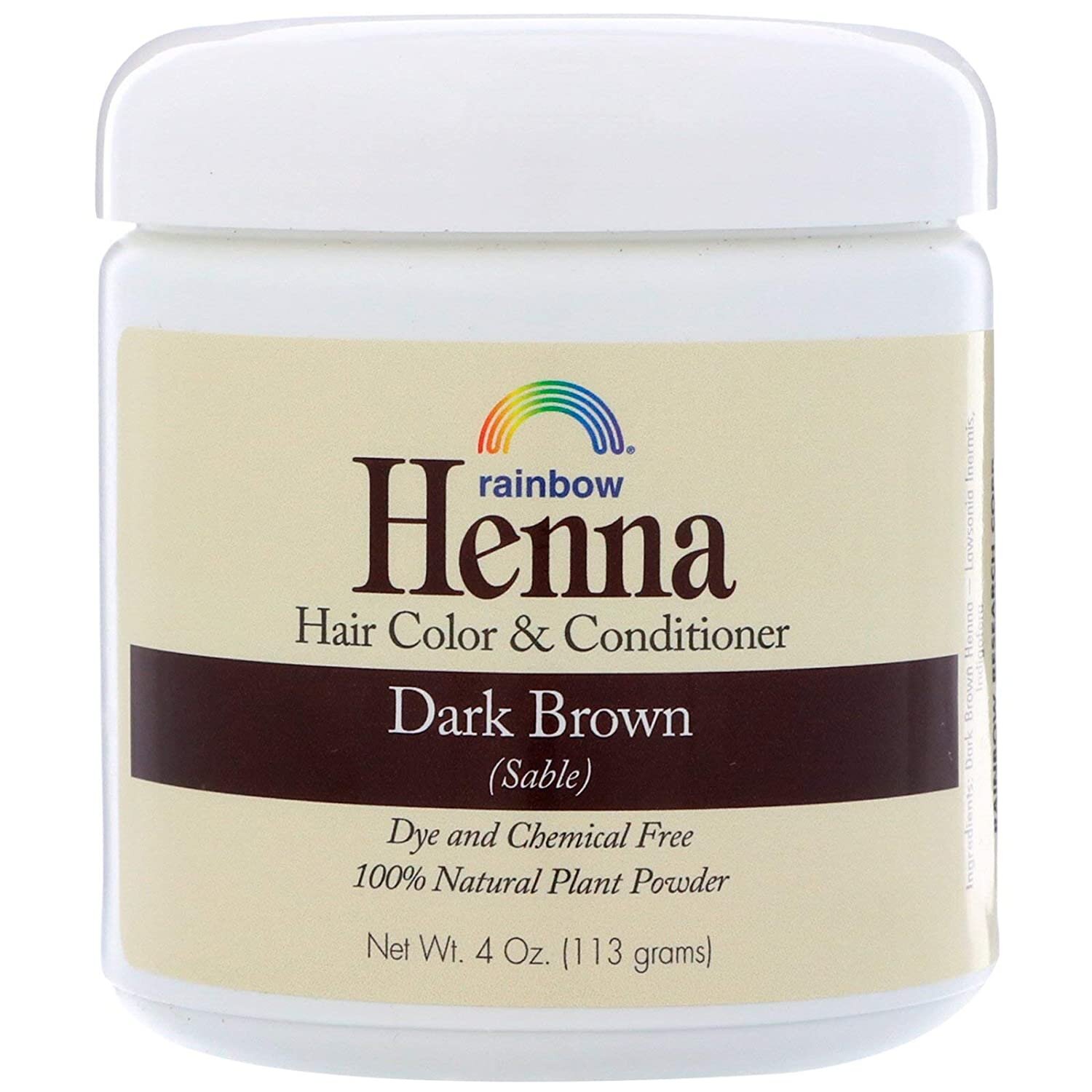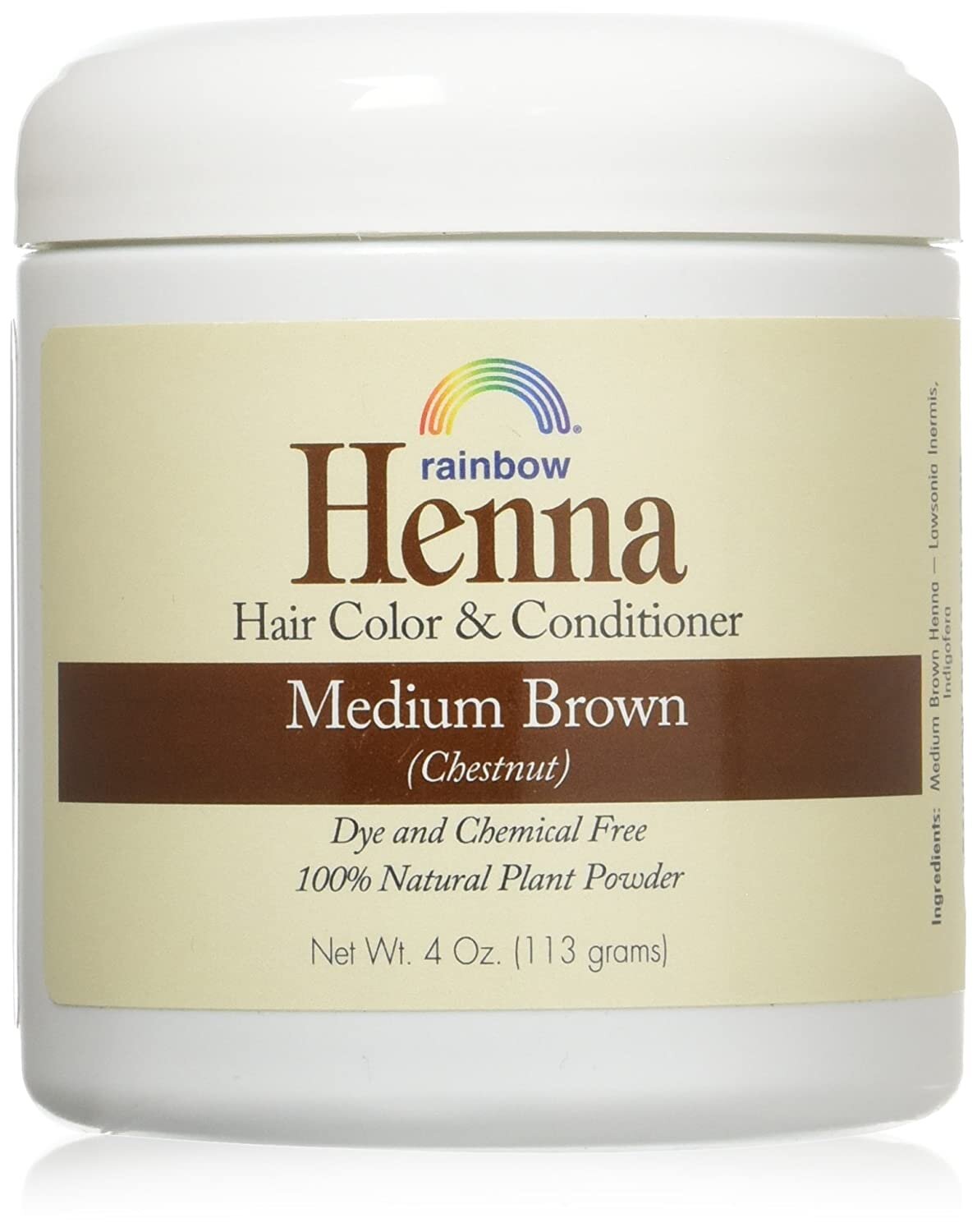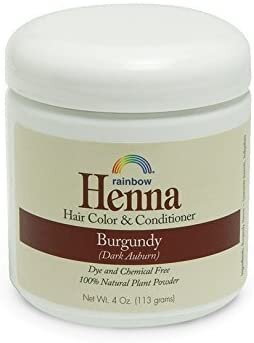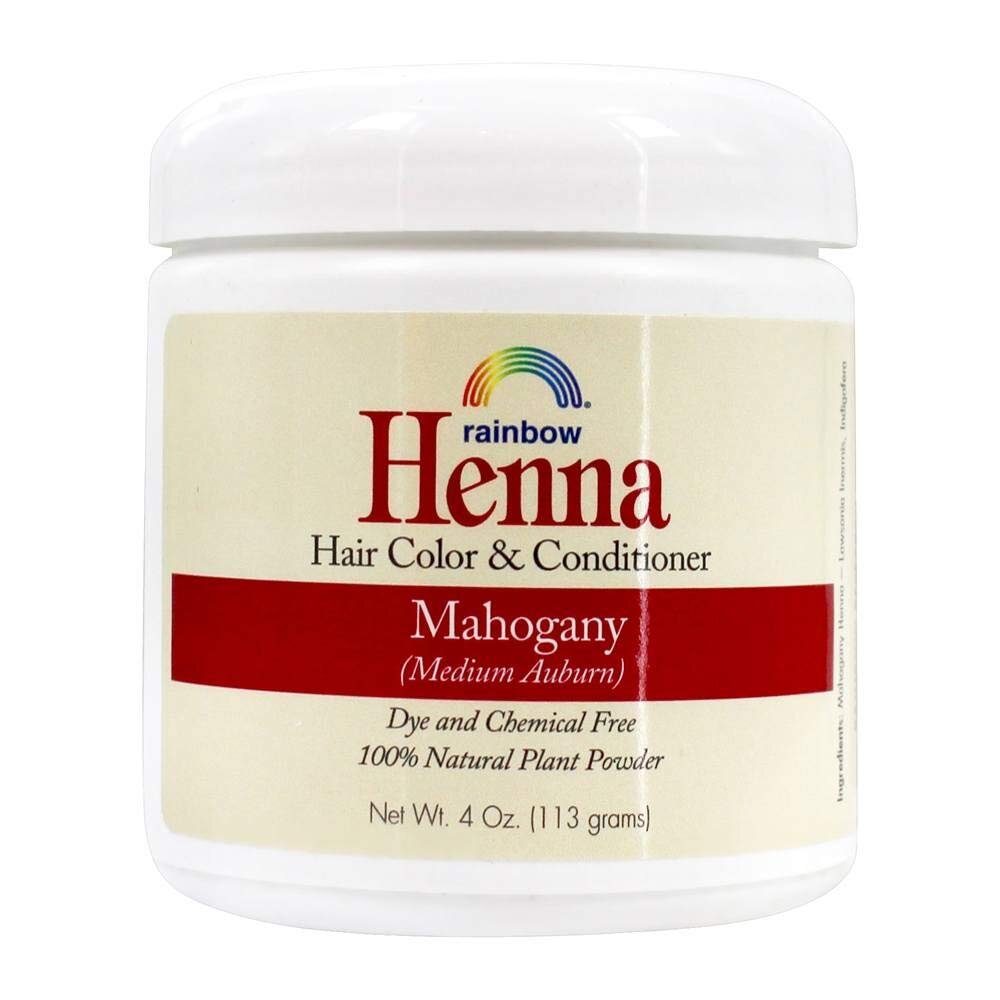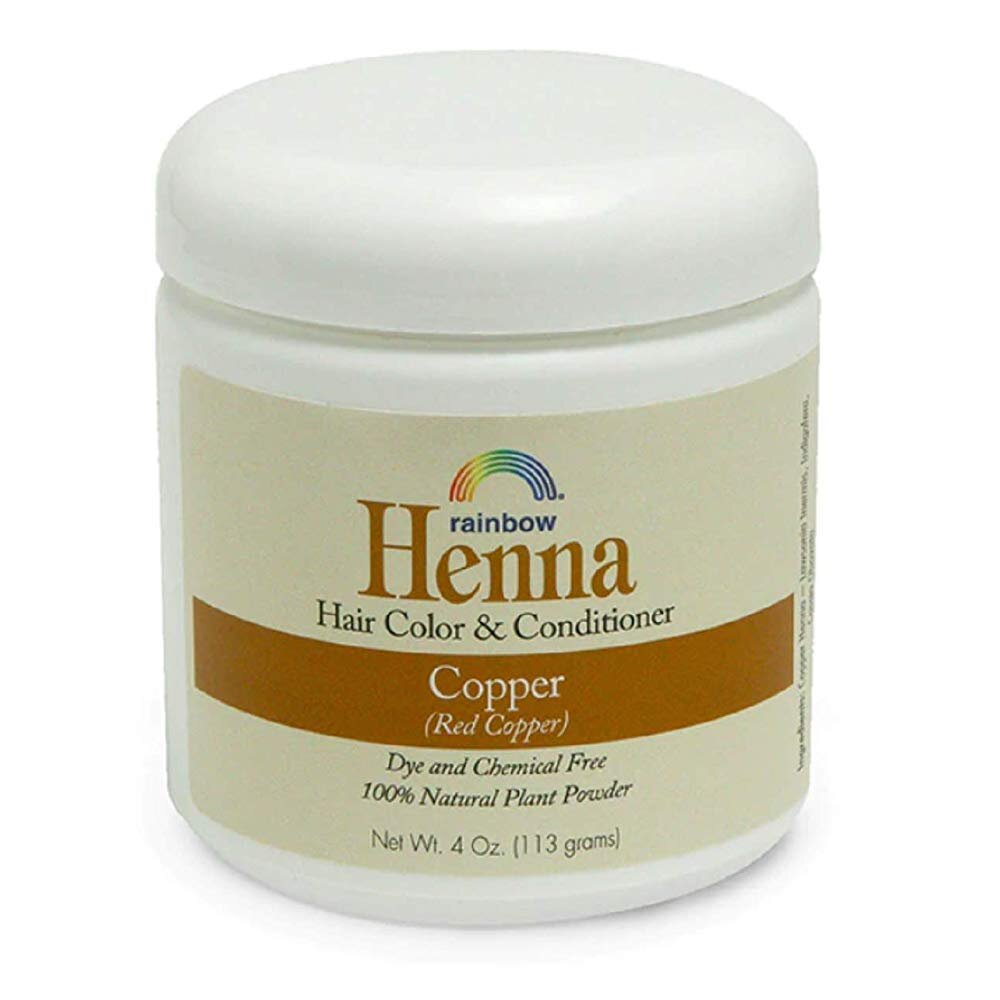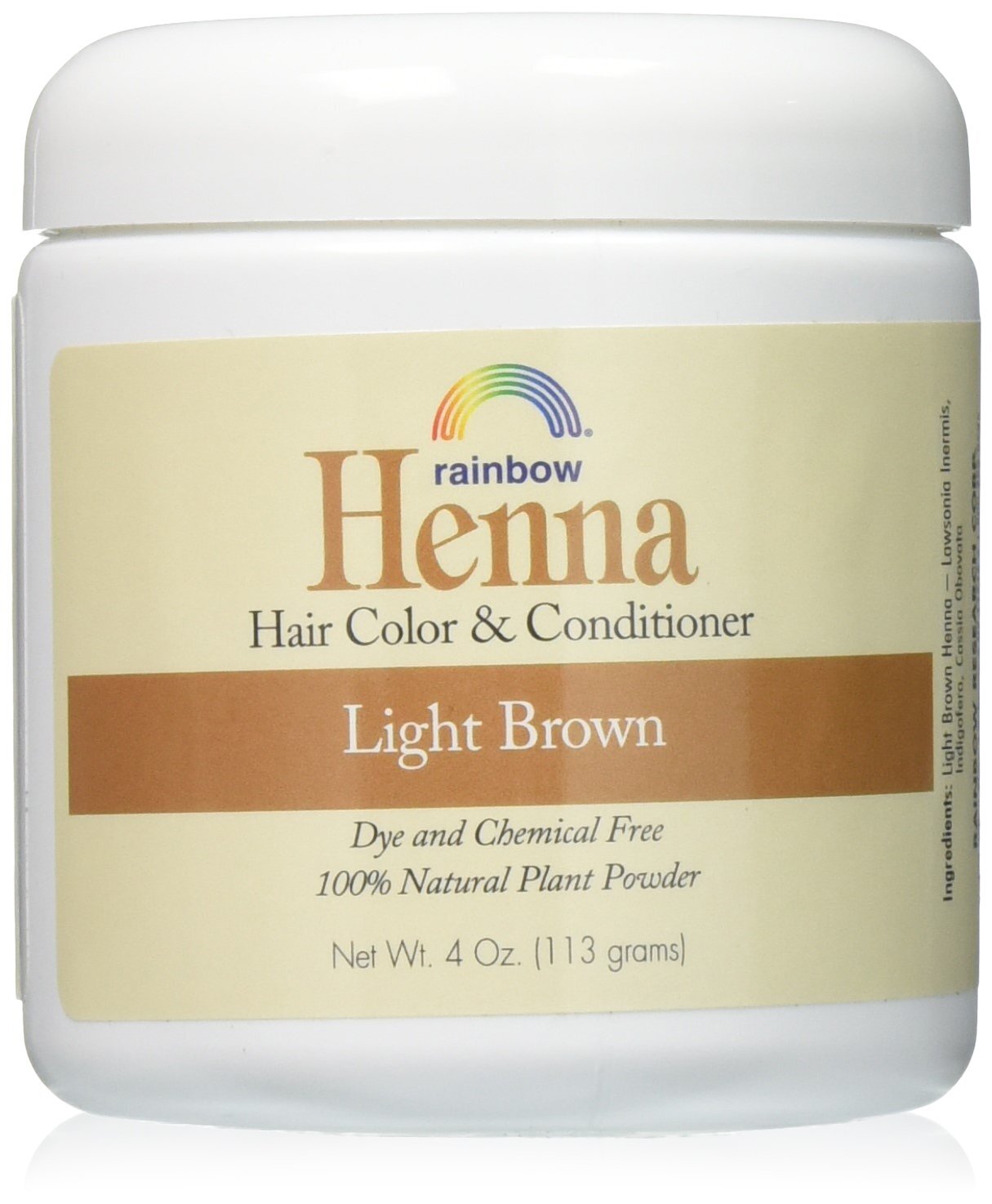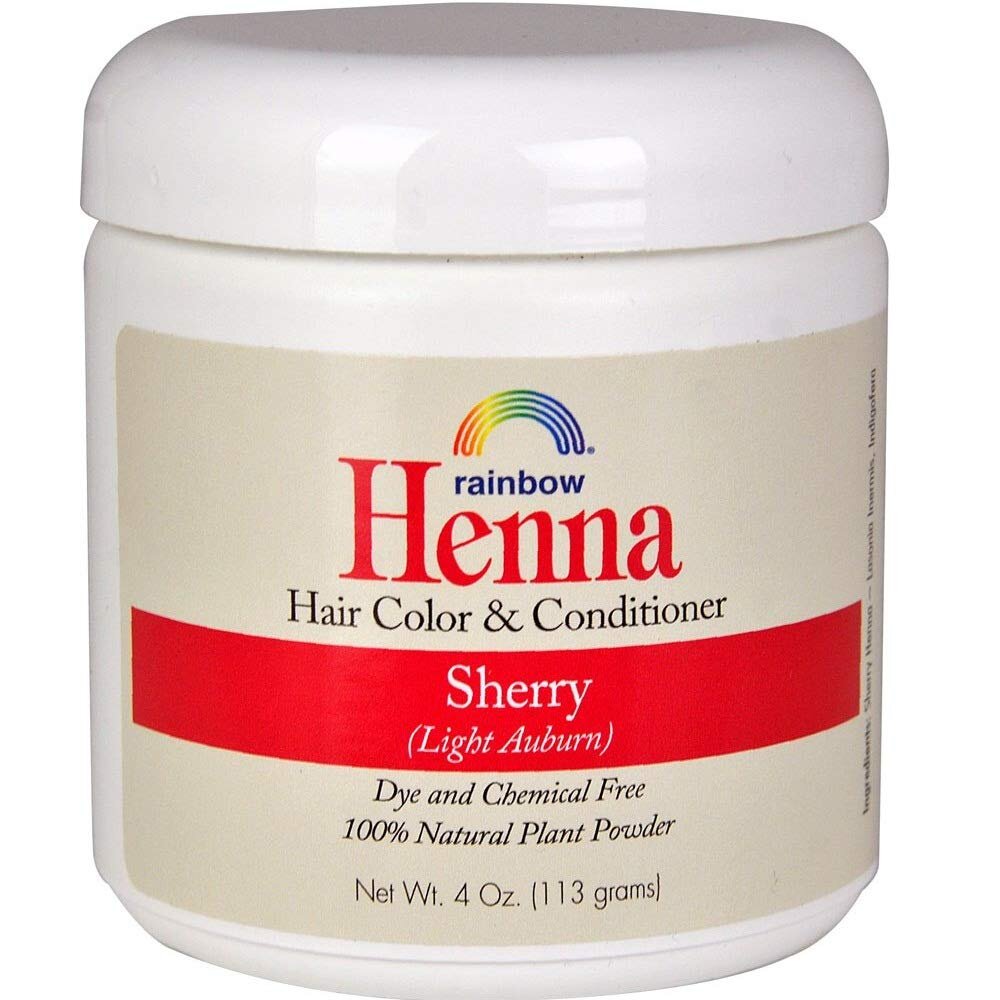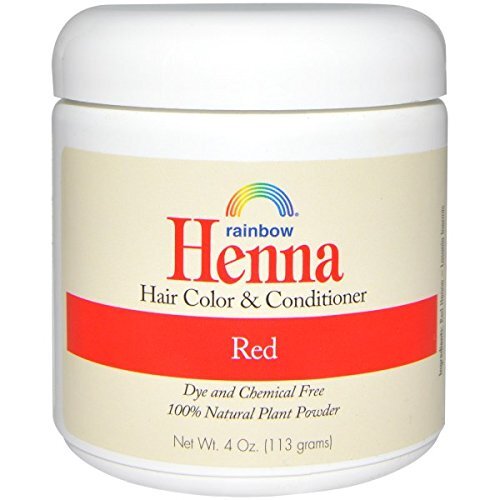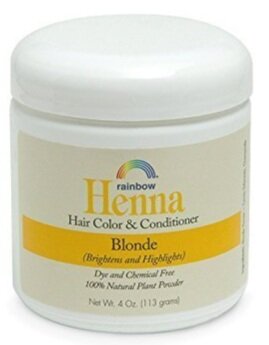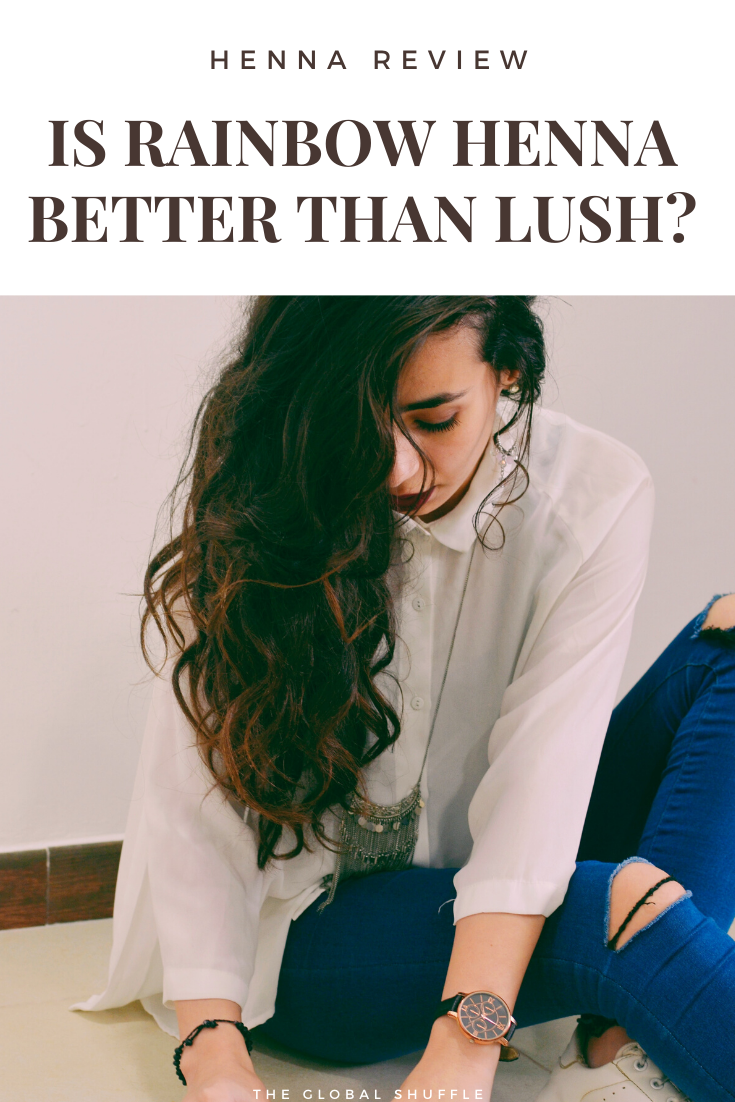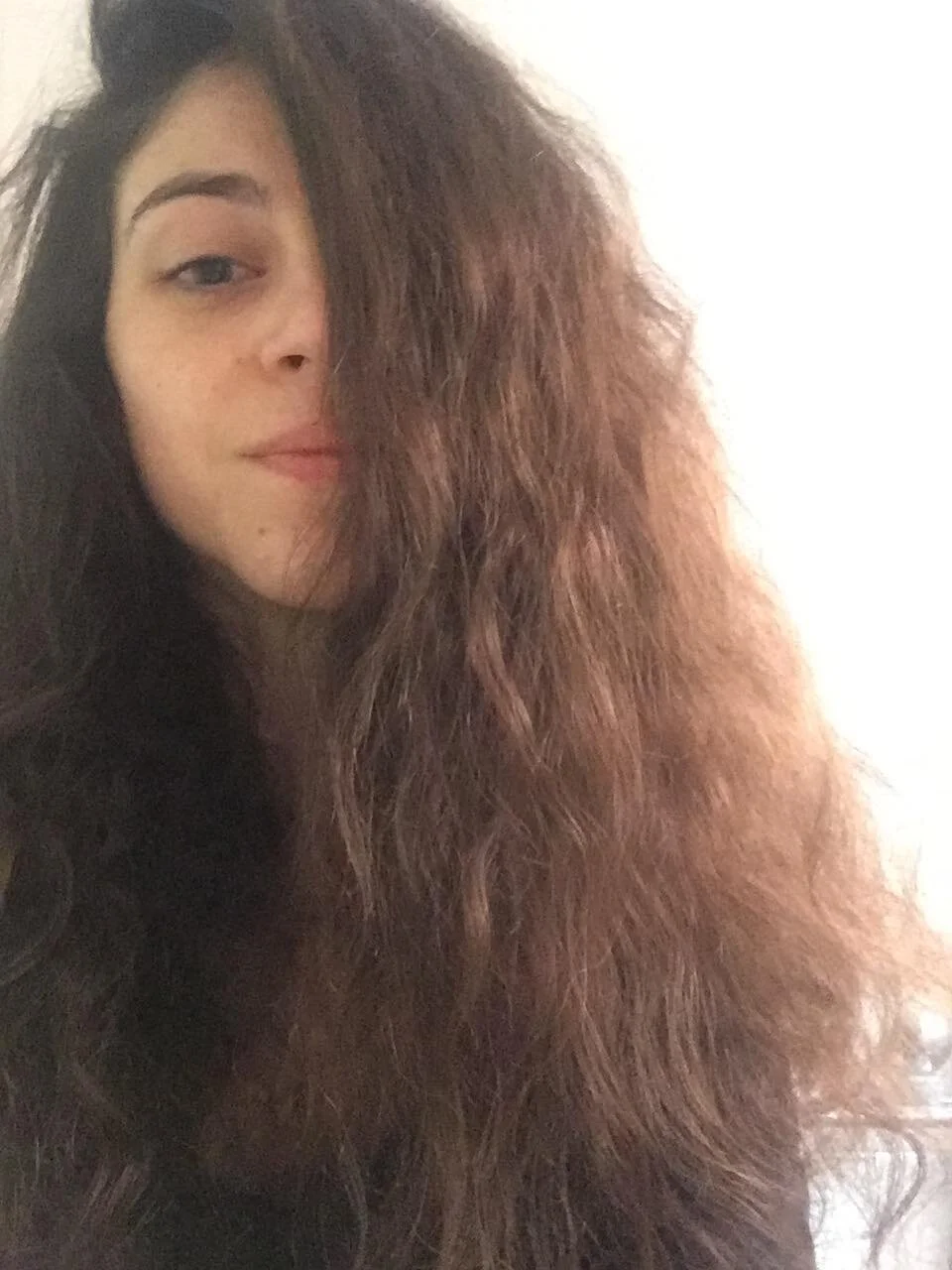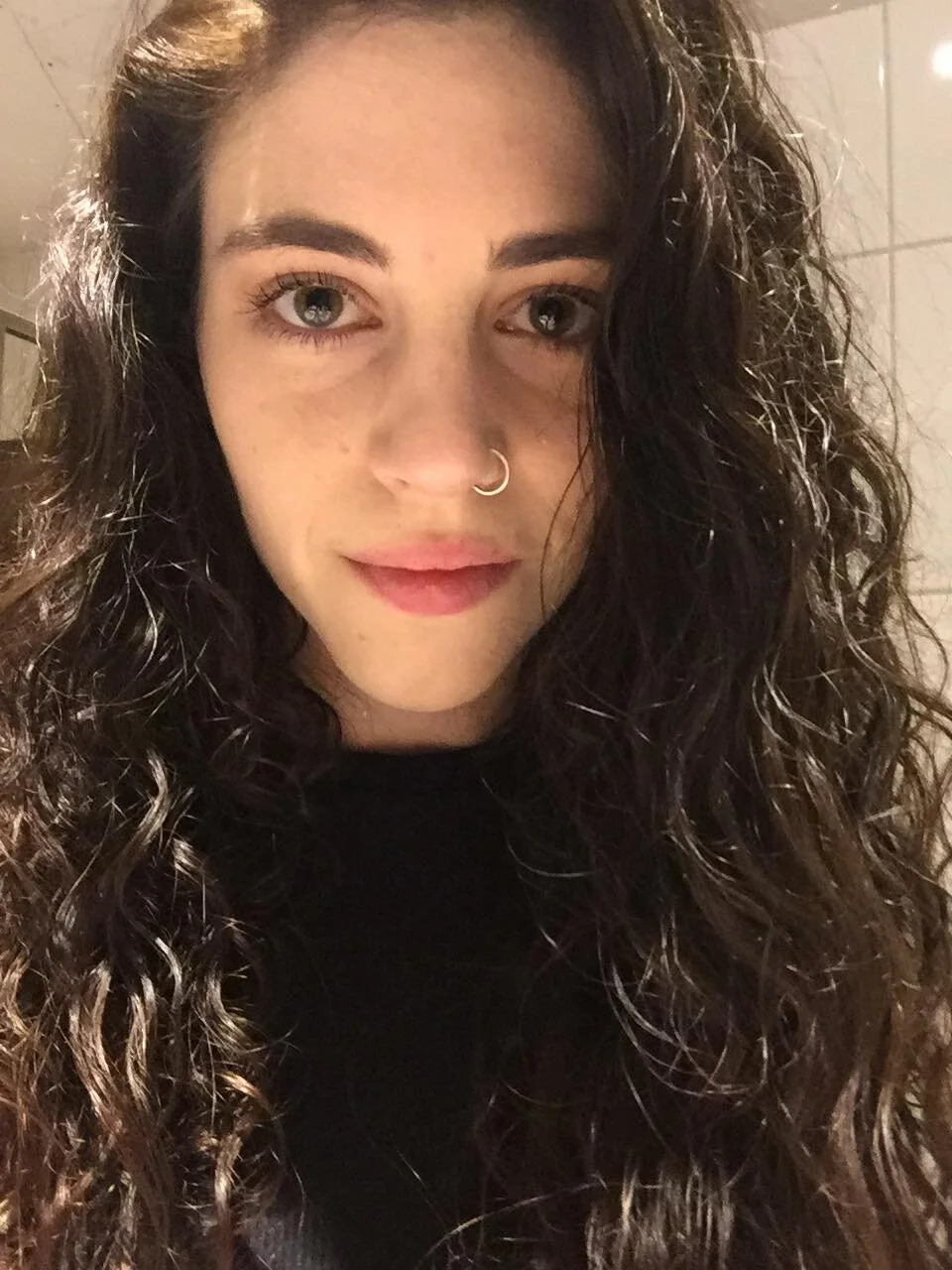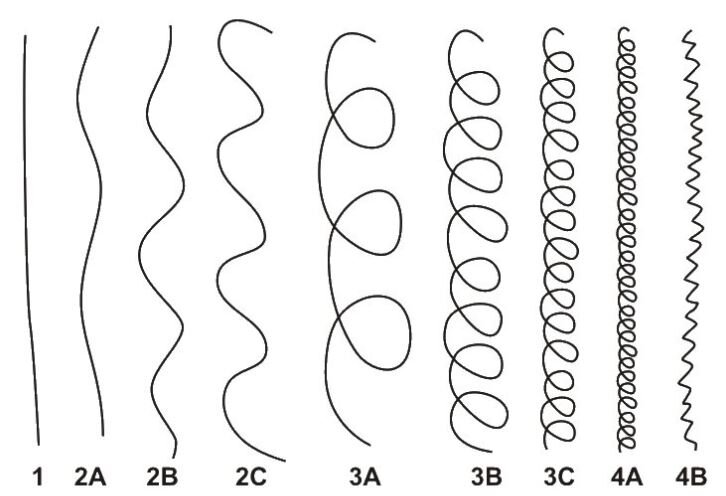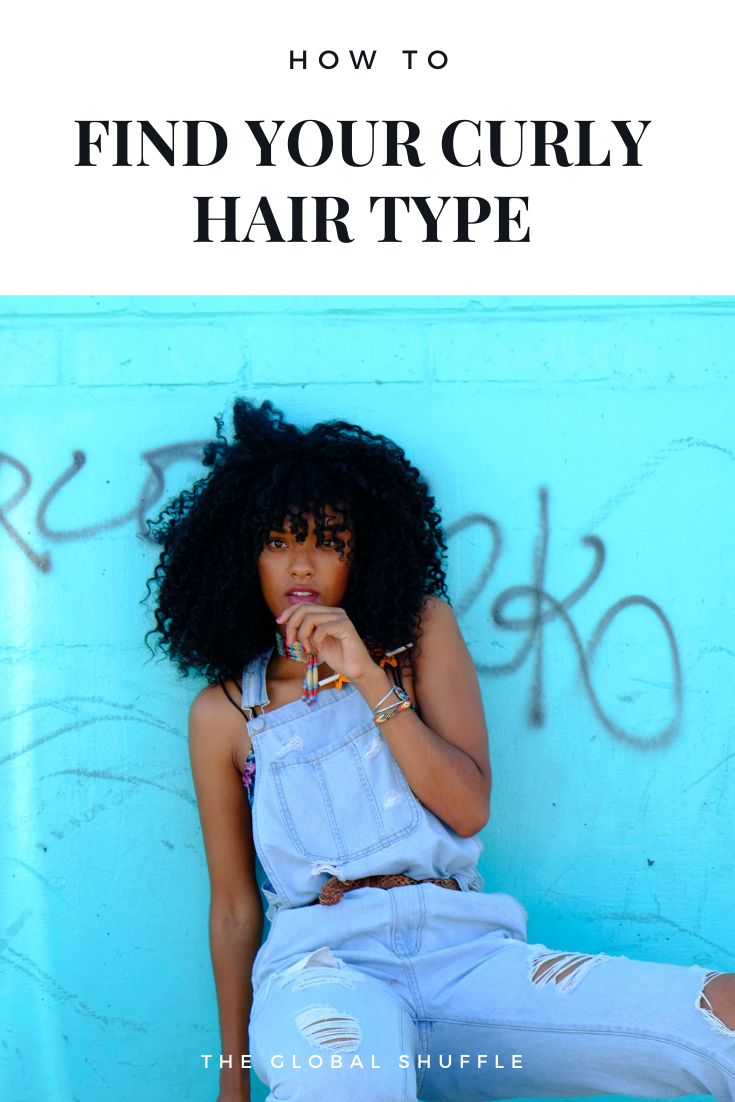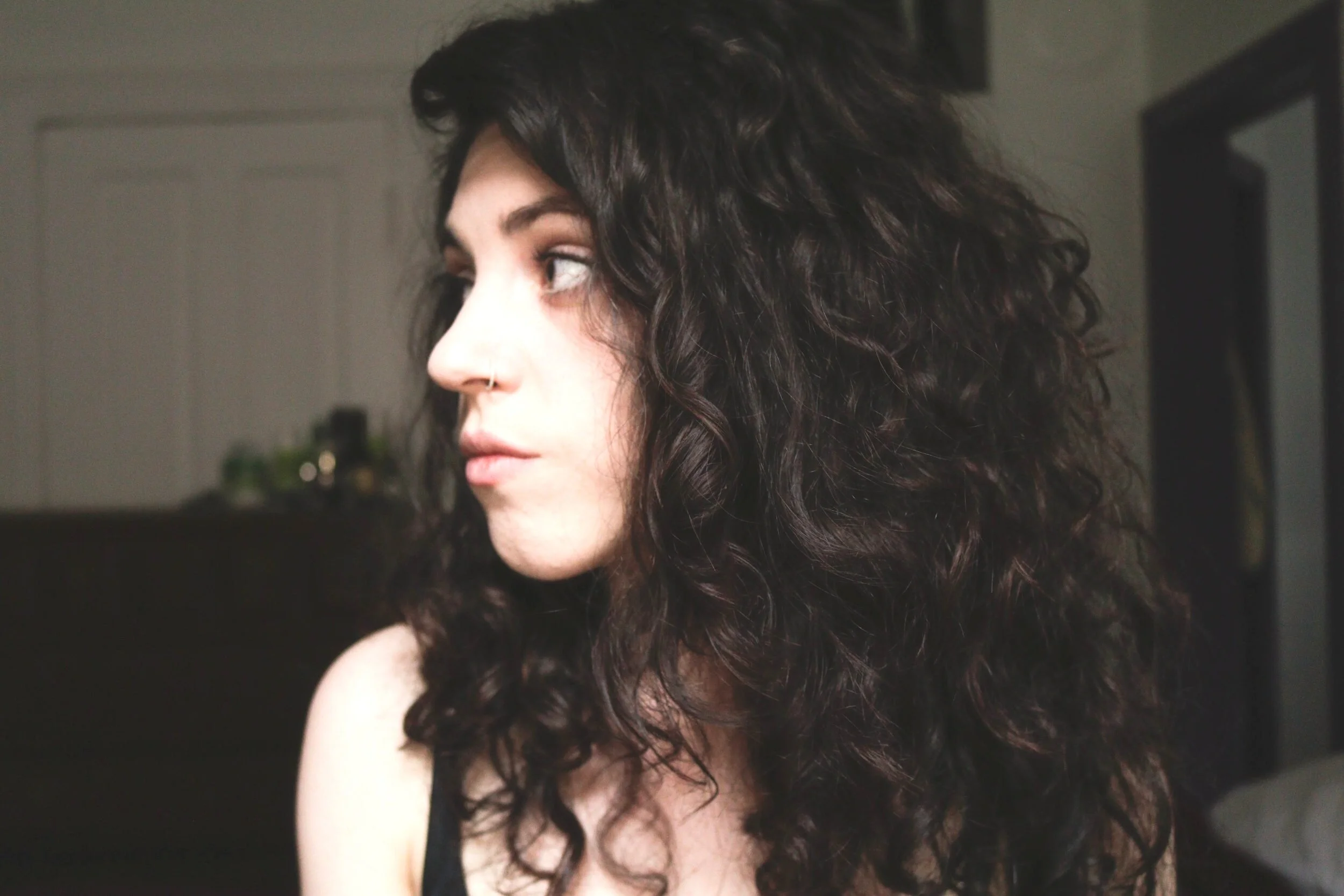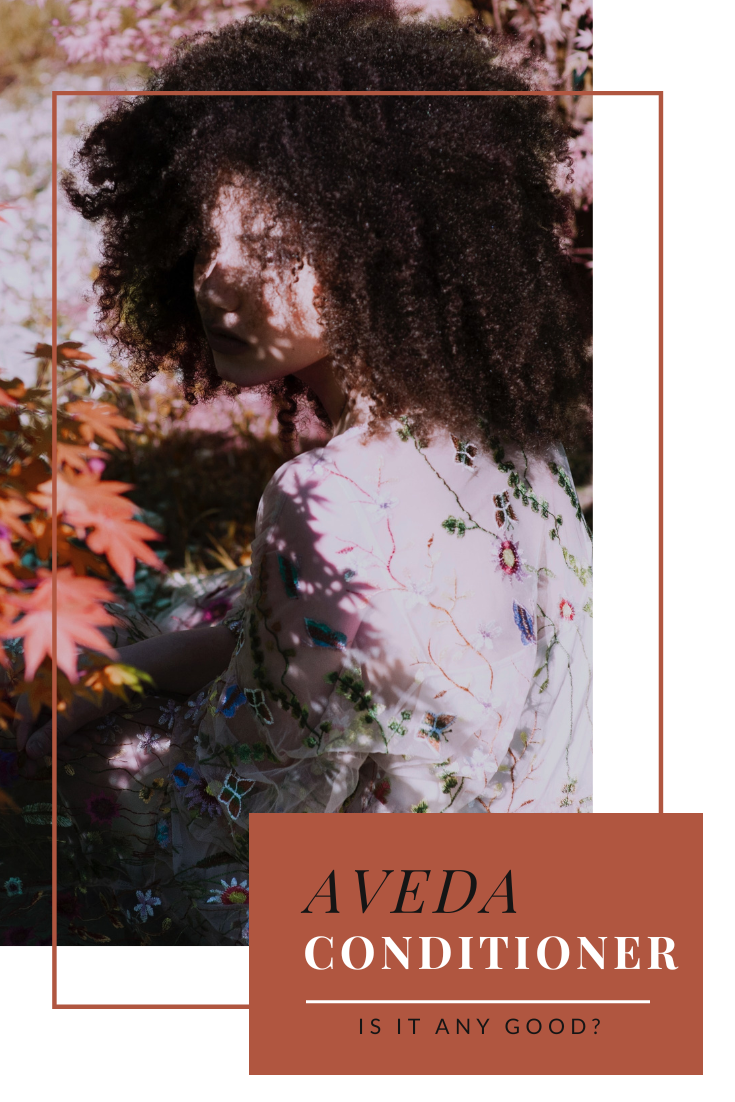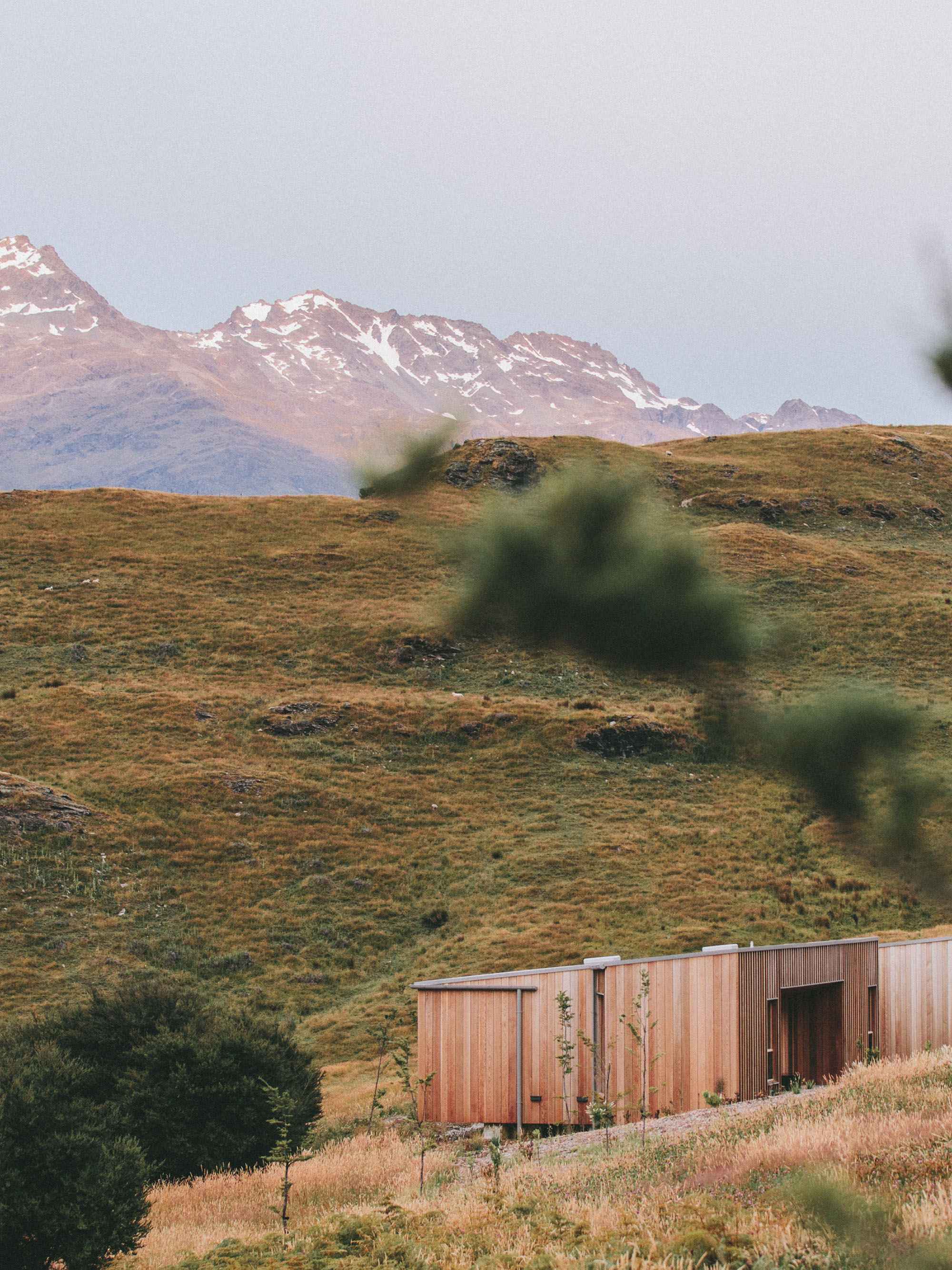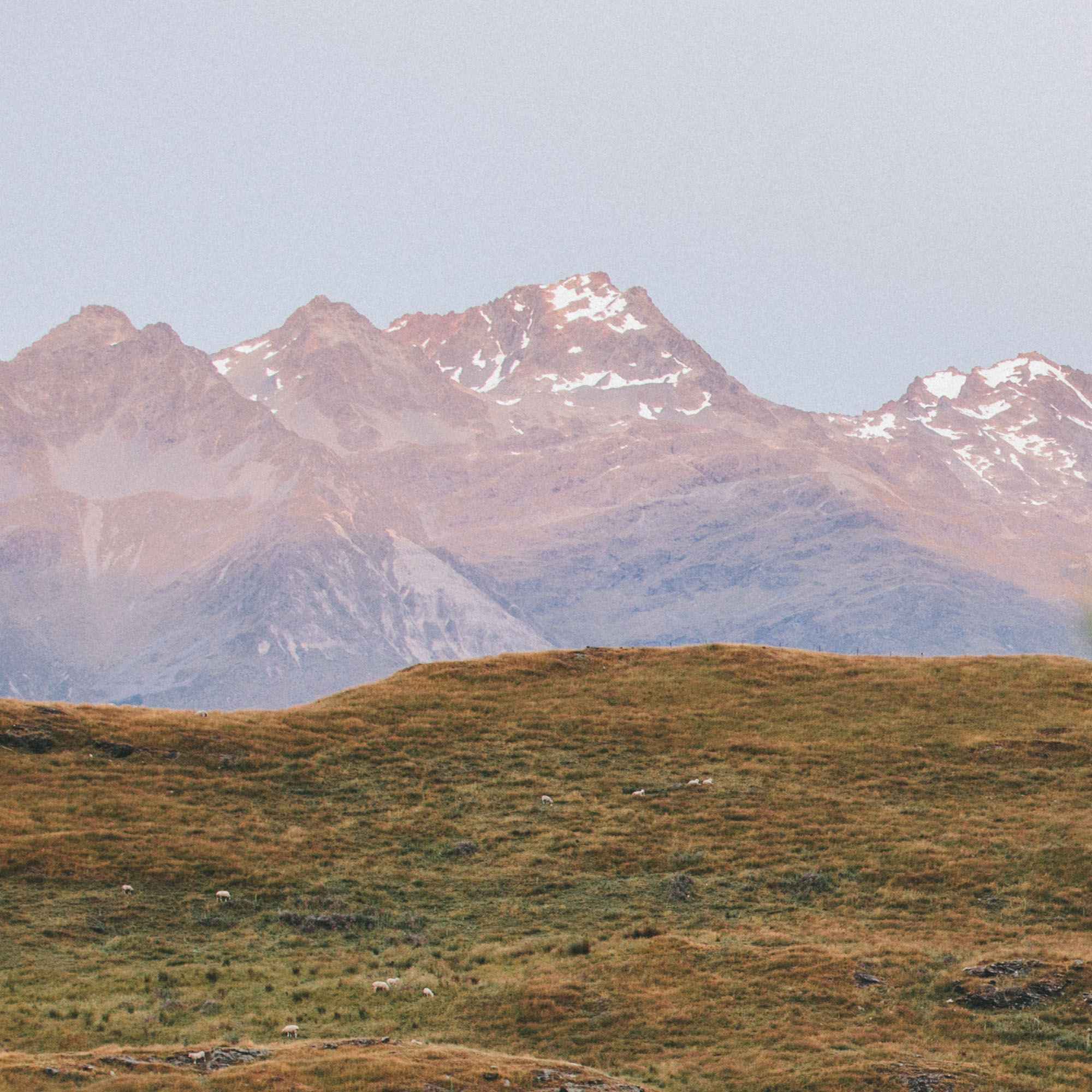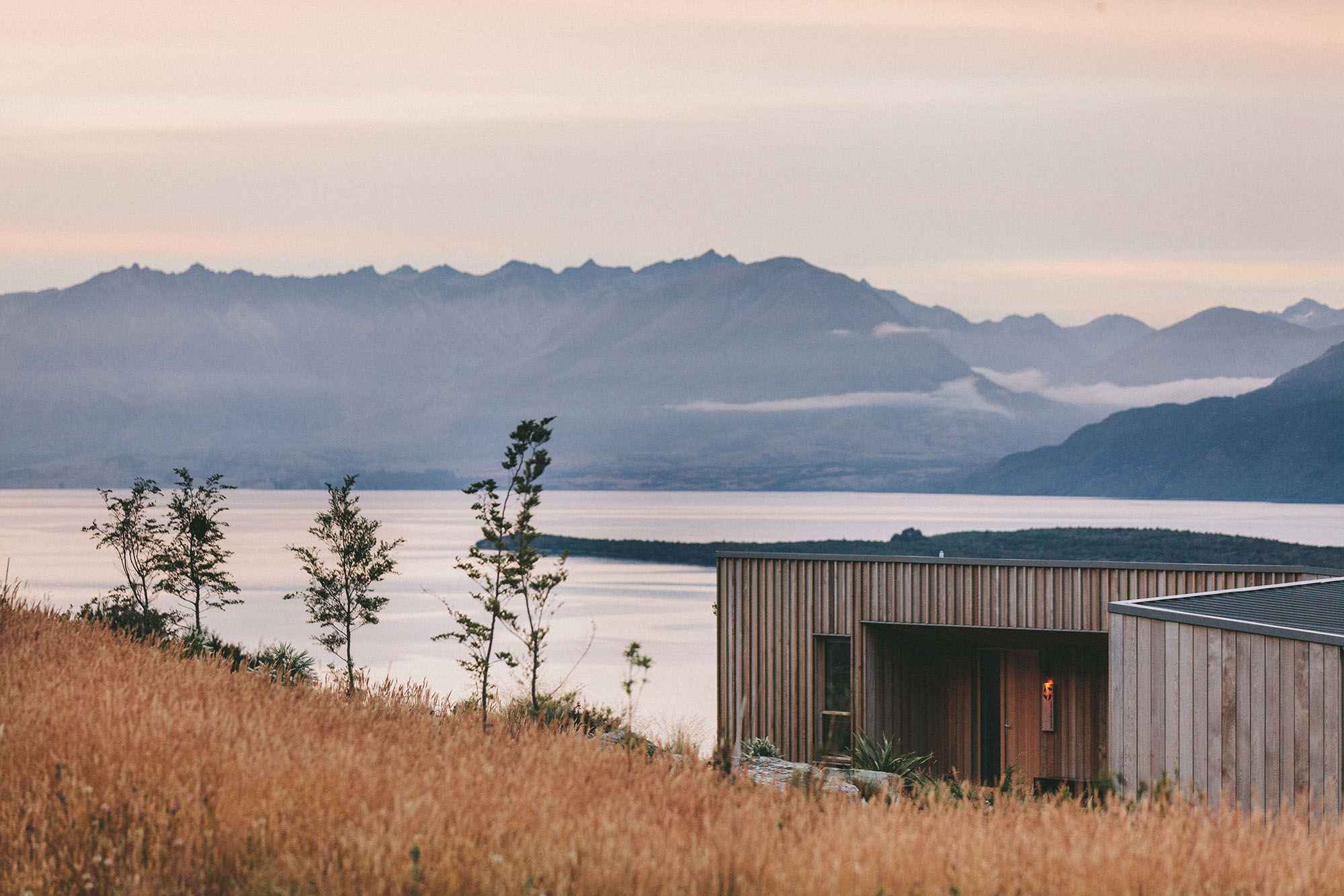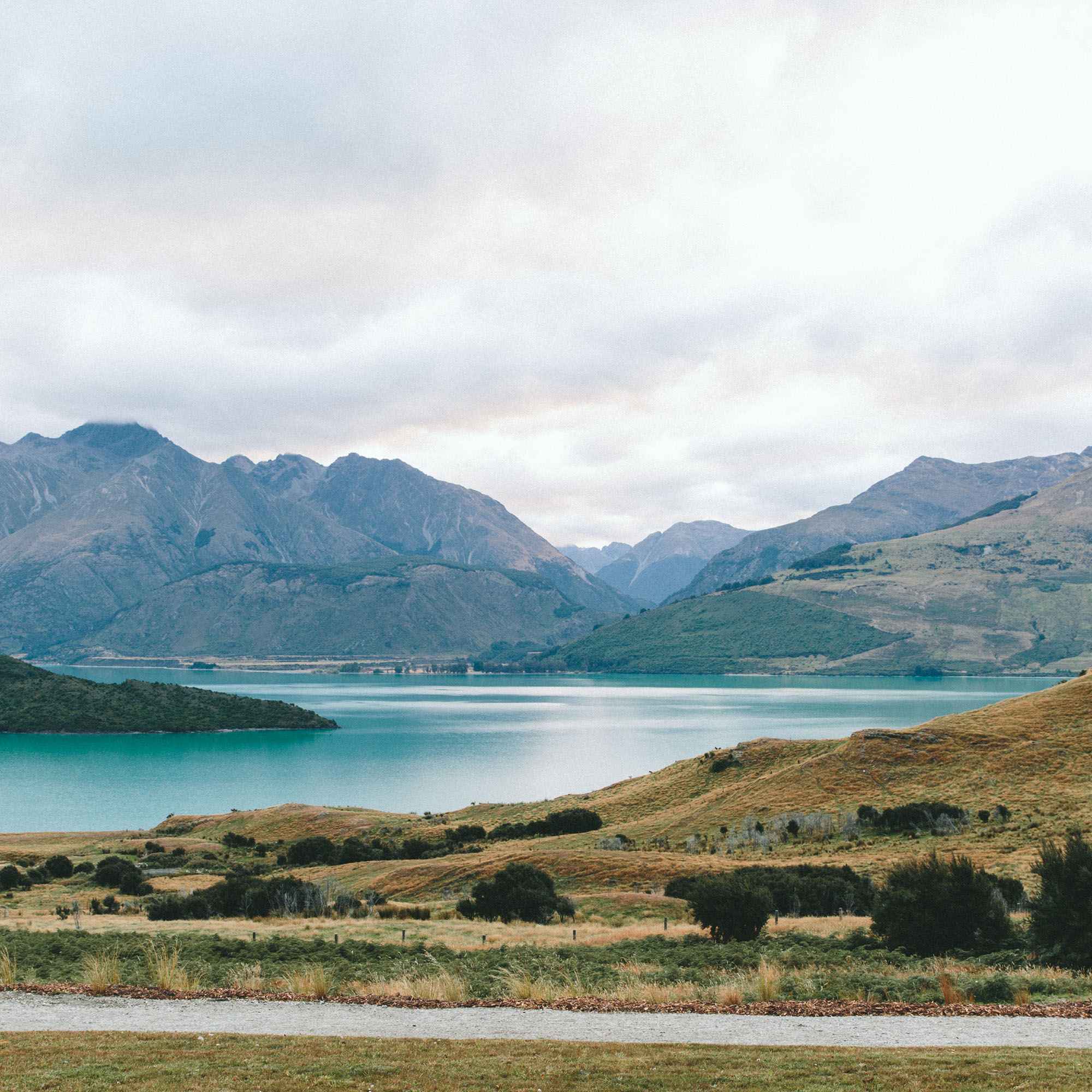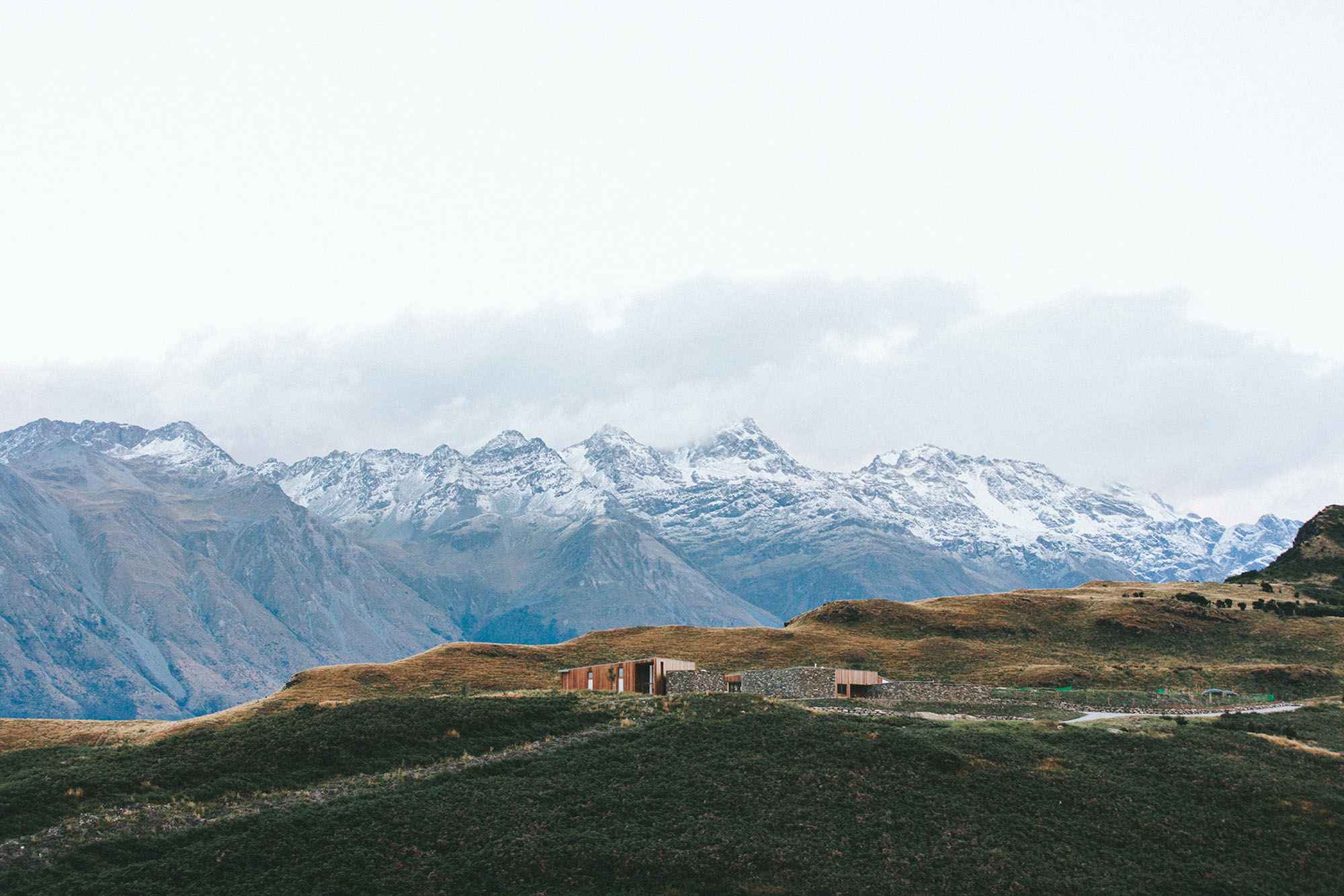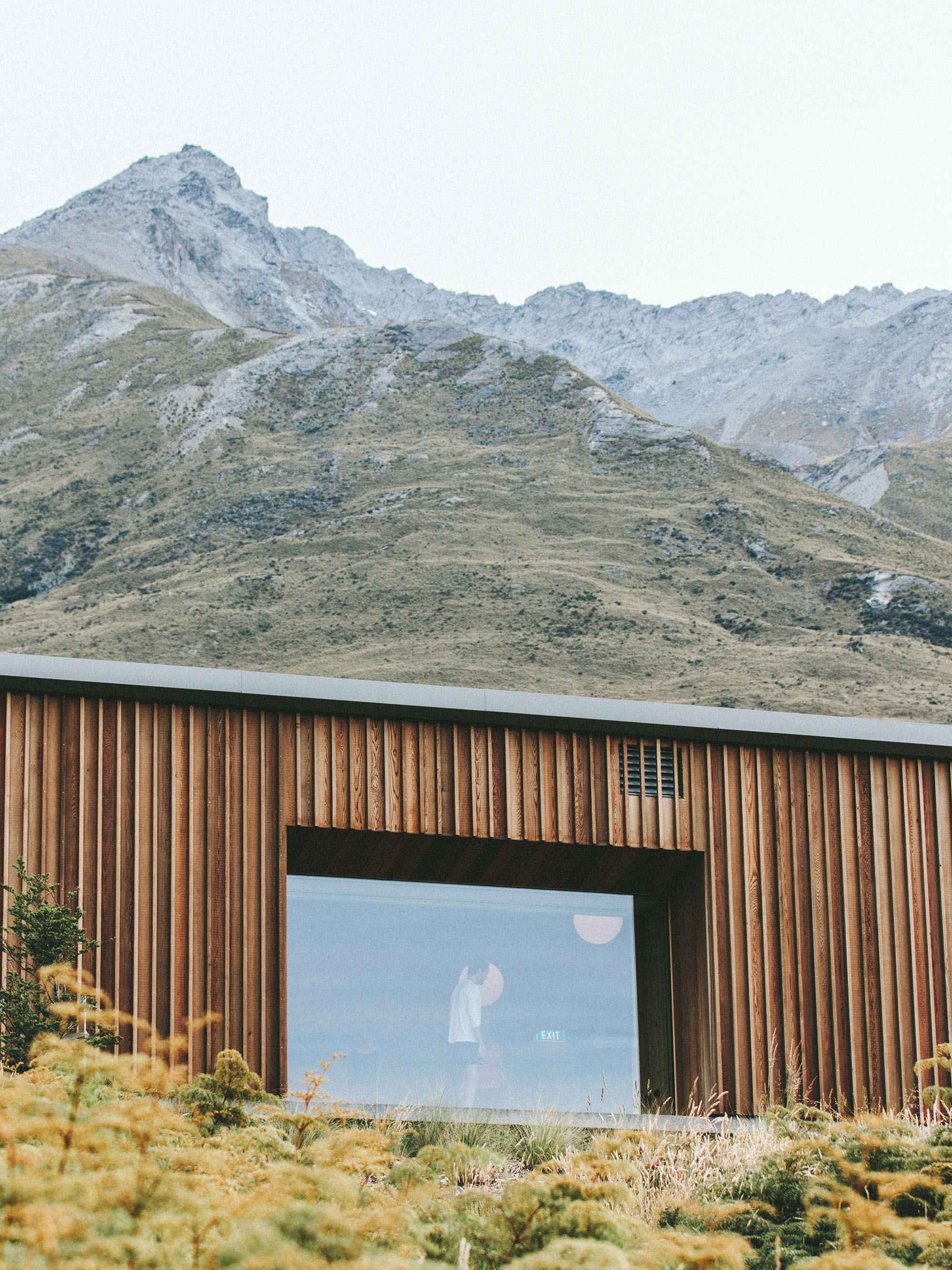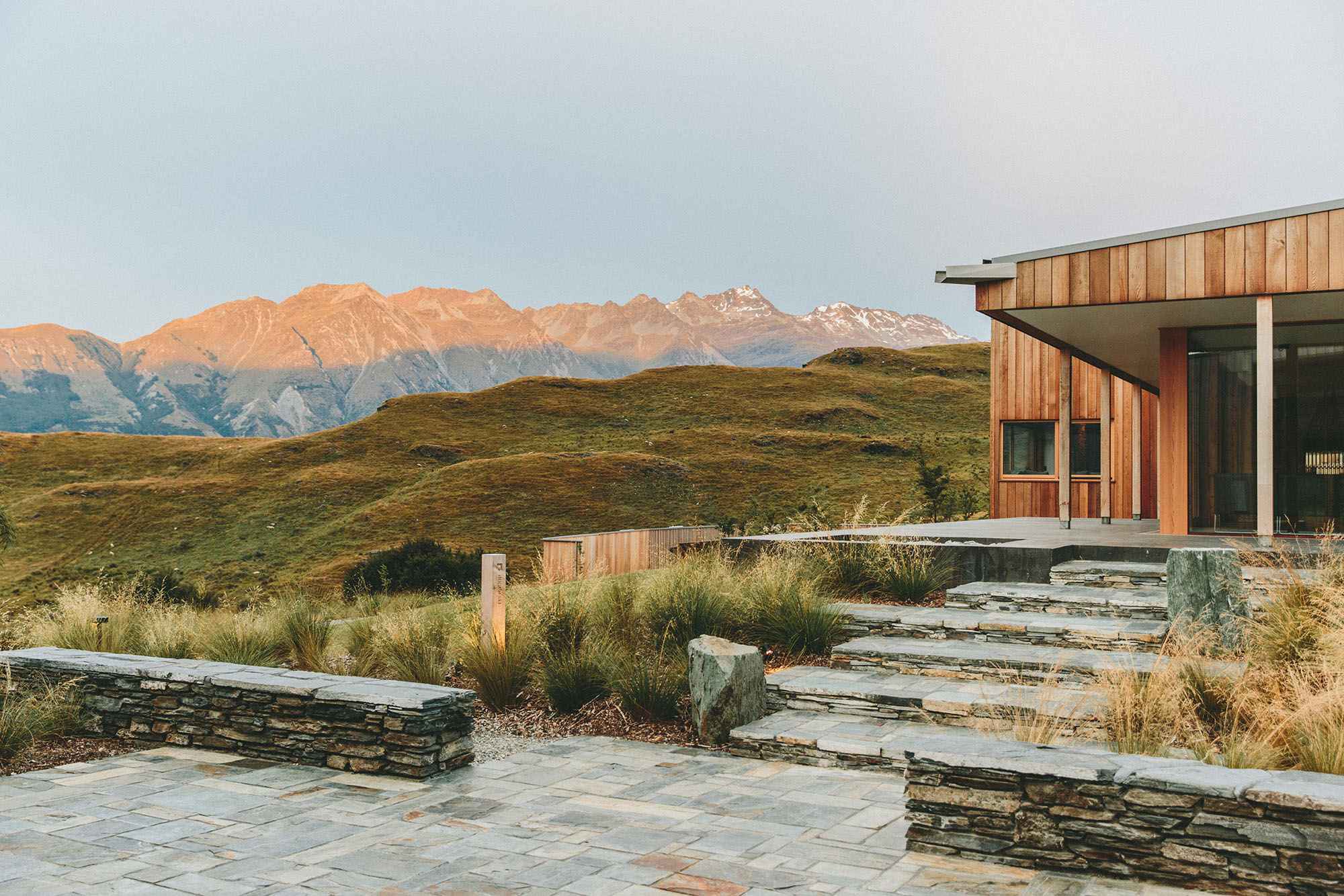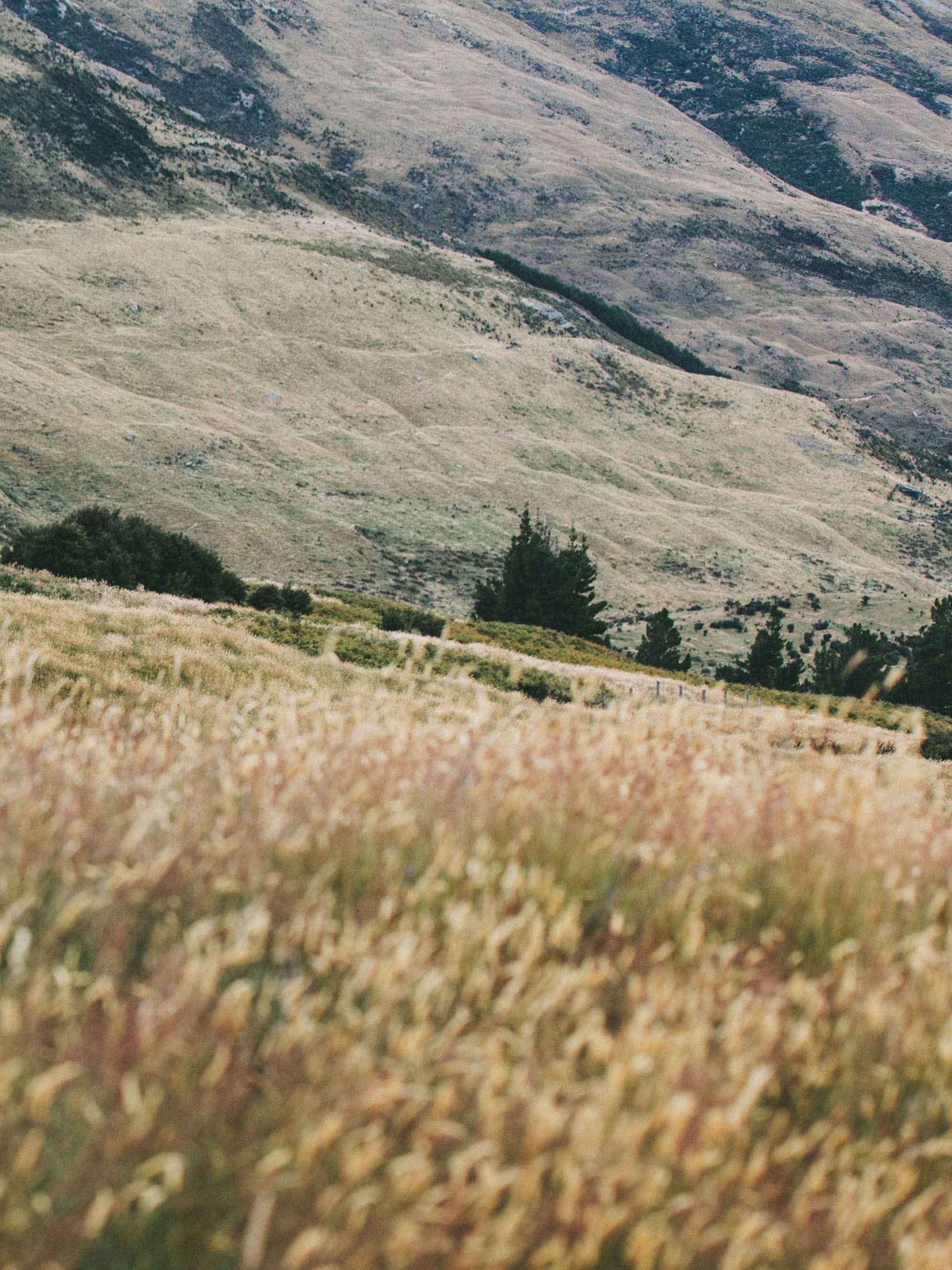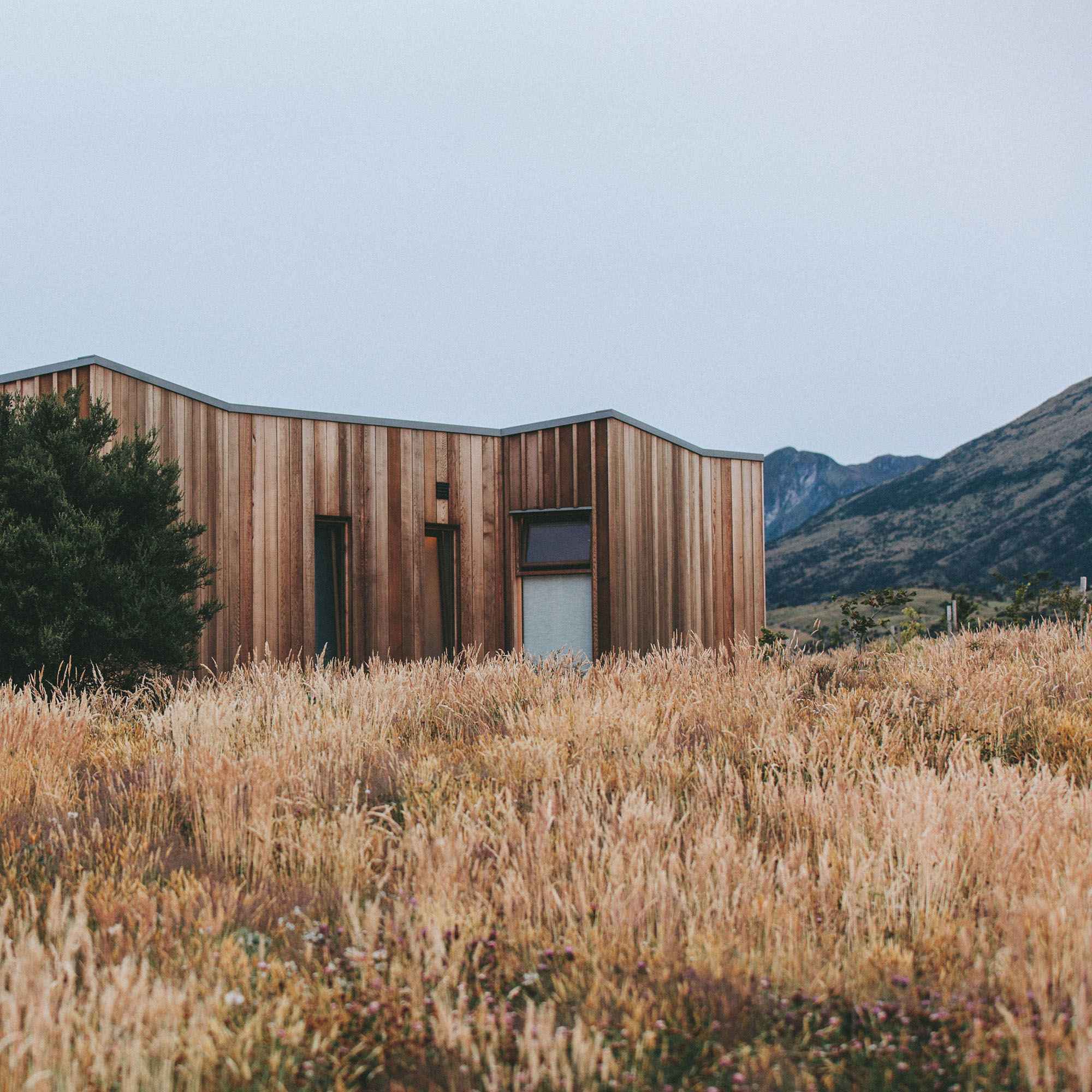Haircare Ingredients Checker: Find out if your favourite products are doing more harm than good
Paste in any ingredient list and the ingredients analyser will identify ingredients that don’t belong in a modern, functional haircare routine.
Most haircare products contain damaging ingredients that will harm your hair and scalp over time.
It doesn’t matter how expensive they are, who promotes them, or how ‘clean’ they claim to be — the vast majority will cause long-term damage.
I know that’s tough to believe when there’s so much conflicting information out there about what’s healthy and what’s harmful in haircare. One source says silicones are safe, another says they’re damaging. A product is labelled sulfate-free, but still strips your hair.
It’s overwhelming, and it’s hard to know what information to trust.
Ingredient names are technical, marketing claims are vague, and even brands that position themselves as clean or gentle often use the same problematic ingredients as everyone else.
I spent years wondering why my hair reacted really well to products in the first instance, and then it was like the product stopped working. I thought I just hadn’t found the right products for my hair.
Through a lot of research, trial and error, I figured out the problem was the preservatives, alcohols, harsh sulfates, and synthetic fragrances in every product. I cut them out of my haircare routine, and my hair has never been healthier.
That’s where the ingredients checker comes in.
Paste in any ingredient list — these are usually found on online store product listings — and the tool will identify ingredients that don’t belong in a modern, functional haircare routine.
It will flag:
Banned or restricted preservatives
Silicones that don’t rinse out
Drying alcohols
Film-forming quats and polymers
Anything that interferes with long-term hair health
You can also read a bit more below about the ingredients I’ve blacklisted, and why.
Most hair products are made to feel good, not to improve hair health
Haircare marketing is built around instant results — softness, shine, volume. But the ingredients that create those effects don’t always support the health of your hair.
Many formulas rely on:
Coating agents that block hydration
Harsh cleansers that strip the scalp
Preservatives with toxicity concerns
Fillers and film-formers that accumulate over time
You can’t spot that from the front of the bottle. You have to read the ingredients and understand what they actually do.
Has your hair ever felt great with a new product the first time you used it, but worse with the same product over time? This is probably why.
Ingredients to avoid in hair products
Here are just a few common ingredients found in everyday shampoos, conditioners, and stylers — including expensive and ‘clean’ brands — that cause more harm than good.
DMDM Hydantoin
A preservative that works by releasing formaldehyde. This ingredient has been restricted or banned in multiple regions. It’s unnecessary and inappropriate in any rinse-off or leave-in product.
Behenoxy Dimethicone
A heavy silicone that coats the hair in a film that resists rinsing. It blocks moisture, traps buildup, and leaves hair looking dull and feeling dry — even when it’s technically “clean.”
Phenoxyethanol
Commonly used in modern products as a preservative, but often overused. It’s drying, especially with repeat exposure, and not ideal in rinse-off formulations where safer alternatives exist.
Sodium Lauryl Sulfoacetate (SLSa)
A strong foaming surfactant. Despite being plant-derived, it strips the hair and scalp of natural oils and increases porosity over time.
Polyquaternium-7
A synthetic film-former. It clings to the hair and builds up with repeated use. It doesn’t moisturise — it masks. Once it accumulates, your hair will stop responding to other products.
Cocamide DEA
A foam booster linked to the formation of nitrosamines — compounds with known carcinogenic potential. Banned or restricted in many countries.
SD Alcohol 40 / Isopropanol / Ethanol
These solvents evaporate quickly, but they also draw moisture out of the hair. Long-term use leads to brittleness and rough texture — especially in leave-ins and sprays.
These ingredients are everywhere
You’ll find them in:
Supermarket brands
Professional salon ranges
Natural and organic lines
Leave-ins, sprays, masks, serums, gels
And they’re not always easy to spot. Many show up under unfamiliar names or are buried in a long list of compounds that sound safe to use.
Let me know how you go!
Once you know what to look for, it’s much easier to spot harmful products and build a routine that actually works for you.
If you’re unsure, try it out for a month and let me know what happens!
Like It? Pin It!
You Might Also Like…
I ditched the curly girl method and my hair has never looked better: How to use sulfates and silicones properly
I tried to follow the curly girl method for years, even though it wasn’t working. When I changed my approach, my hair completely transformed. Here’s what actually helped my fine, curly hair.
I tried to follow the curly girl method for years, even though it wasn’t working. When I changed my approach, my hair completely transformed.
If you’ve been following the curly girl method but still feel like your hair never really gets clean, or if your products seem to stop working — you’re not alone. The same thing happened to me, and I had no idea why.
Like a lot of people with waves or curls, I found the curly girl method when my hair was damaged and I was desperate for a solution. I couldn’t believe there was a whole routine designed for hair like mine. I was SO excited — and at first, it worked.
I was growing out bleach at the time, so I started with sulfate-free shampoos and thicker conditioners that worked wonders on my ends. My hair had ringlets for the first time in a long time. Detangling didn’t take as long, and I was paying attention to the ingredients in my products for the first time.
But over time, it stopped working. My hair felt limp, sticky, overloaded, and never clean — no matter how much cleanser I used, or how closely I followed the rules. I thought I wasn’t doing it right.
Turns out, the method wasn’t right for my hair type.
I changed my approach, and my hair has never looked better.
I’m going to write a whole post about harmful ingredients, so watch this space. But for now, here’s what actually helped my fine, curl-sensitive, easily overloaded hair feel clean and balanced again.
Note: There are some product recommendations with affiliate links below. Clicking on them does not cost you anything, it just helps me keep the site going :)
When the curly girl method does work
There is nothing wrong with the curly girl method — it helps a lot of people, especially those with:
Thick hair.
High-porosity strands.
Dense curls or coils.
Hair that can absorb a lot of moisture and product.
For those hair types, moisture-rich routines, co-washing, and styling creams can work wonders. But it’s a different story if your hair is fine, low-density, or easily weighed down.
Why it didn’t work for me
My hair is fine with a mixed curl pattern, and is easily overloaded. I was following product recommendations from people with hair that looked like mine — but they could layer mousse, gel, leave-ins, and sulfate-free shampoos without any issue. I couldn’t.
Even when I used lightweight stylers, my hair felt coated. Limp at the roots, crunchy or sticky at the ends, and it never felt like it was actually clean.
The problem with sulfate-free shampoo
Sulfate-free cleansers seem like the obvious choice for fine or fragile hair. But in reality, they’re often packed with:
Conditioning agents (like polyquats or esters)
Humectants (like glycerin or sorbitol)
Plant mucilage (like aloe or flaxseed)
These ingredients can be great, in moderation. When you’re using them to clean your hair, they tend to layer, not lift. If your hair is fine or low porosity at the roots, like mine, they don’t rinse off easily.
Instead of removing buildup, they add to it.
That’s where sulfates came in.
Not all sulfates are created equal
I now use sulfates with every wash, but I’m very careful with what I use.
Once I introduced sulfate shampoos into my routine, everything changed. My hair finally felt clean again — soft, light, and responsive to stylers. I started using it every second wash, then every wash. I haven’t looked back.
But not all sulfates are the same.
What I avoid:
Sodium Lauryl Sulfate (SLS): too harsh, can strip the scalp and cuticle.
What I use:
Sodium Laureth Sulfate (SLES): milder but effective, helps remove natural oils and buildup.
Sodium Coco-Sulfate: stronger, but necessary when I’ve oiled my hair prior to washing.
Gentler surfactants, like Cocamidopropyl Betaine.
With the right shampoo, I can use curl creams, gels, oils, and wash them out properly when I need to.
-
Ethique Solid Clarifying Shampoo Bar
Contains sodium coco-sulfate for true clarifying — removes oils, gloss bars, and buildup.
Only essential oils, no damaging fragrances.
No damaging silicones or preservatives — clean, biodegradable, and non-coating.
NOT!CE Hair Co “The Stimulator” Thickening Shampoo Bar
Uses sodium coco-sulfate for strong, rinse-clean cleansing — ideal for fine or oily hair.
Naturally scented with peppermint and rosemary oils — no synthetic fragrance.
Free from film-formers and damaging preservatives — minimal, scalp-supporting formula.
5. Neal’s Yard Remedies - Invigorating Seaweed Shampoo
Contains sodium coco-sulfate for strong cleansing — ideal for removing oils, butters, and buildup.
No synthetic parfum — scented only with essential oils like peppermint, rosemary, and lemon.
Free from damaging silicones and preservatives — lightweight formula that won’t coat fine hair.
-
Zion Health Intense Repair Hair Mask
Lightweight formula with amodimethicone, a rinse-friendly silicone that smooths without buildup.
Naturally scented with essential oils like lavender, lemon, and ylang ylang — no synthetic fragrance.
Preserved with sodium benzoate and potassium sorbate, making it gentle on sensitive scalps.
Contains a blend of safe, lightweight silicones (including cyclopentasiloxane) for softness and detangling.
Fragrance-free and dermatologist-developed — ideal for sensitive, reactive skin.
Free from harsh preservatives.
Mild By Nature, Thickening Conditioner
Formulated with amodimethicone, a smart silicone that targets damaged areas without coating healthy strands.
Lightly scented with natural essential oils, with no synthetic fragrance.
Balanced with soothing botanical extracts and free from harmful preservatives.
What about silicones?
Silicones get a bad rap for coating the hair, but not all silicones are equal. Some are stubborn and cause build-up and dryness. Others are lightweight, rinse-off, and protective — especially for fine hair that tangles easily or reacts to weather.
The important thing is to make sure you’re washing it out with Sodium Laureth Sulfate every three or four days. If you leave it longer than that, your hair will probably become dry.
If you’re using products with silicone, your hair will not absorb any other products until you wash the silicone out. If you’re using a silicone conditioner, any curl cream or leave-in you use afterwards will not be able to get into the cuticle.
I still use silicones, but I’m careful with the types of silicone I use.
What I avoid:
Behenoxy Dimethicone
Cetyl Dimethicone
Stearyl Dimethicone
Trimethylsilylamodimethicone
These are harsh silicones that don’t rinse out easily.
What I use:
Dimethicone (rinse-off products) — adds slip, reduces friction.
Amodimethicone — deposits only where hair is damaged.
PEG-modified silicones (e.g. PEG-12 Dimethicone) — water-dispersible and low buildup.
If a silicone adds slip, reduces breakage, and rinses clean — I’m not going to rule it out just because it’s synthetic. I care more about function and outcome than sticking to blanket bans.
Key takeaway: it's not about following rules
For a long time, I felt like I was breaking the curly girl rules by using sulfates.
The curly hair community can be pretty intense. I was in Facebook groups that would remove posts that mentioned a product that was not curly hair-approved. Even if it was an accident, the entire post would be deleted. It was wild. Even now, I feel like the curl police will come after me for writing this post.
But in truth, the method just didn’t work for me. And I’m sure I’m not alone.
I’ve stopped following haircare rules written for someone else’s hair. I use what works. I read ingredient labels. I avoid what harms my hair, and I keep what helps it thrive — even if the ingredients are on the curly hair blacklist.
Do what works for you
Sulphates and silicones aren’t the enemy. They’re tools. And when used selectively, they solve real problems — especially for fine, buildup-prone, curl-sensitive hair.
I still avoid:
Harsh sulphates like SLS
Film-forming silicones that don’t rinse clean
Irritating preservatives and drying alcohols
But I’m no longer avoiding ingredients just because a rulebook said so. I use what works, based on how my hair responds.
Do you use sulfates and silicones? Let me know in the comments below!
Like It? Pin It!
You Might Also Like…
Hair Porosity Test: When the ‘cup test’ doesn’t work
Tried the hair porosity cup test and got confusing results? You’re not alone. The ‘cup test’ often doesn’t work — here’s why, how you can find your hair’s true porosity, and the best products for low and high hair porosity to build a routine that works.
Hair porosity test didn’t work for you? Don’t worry, it didn’t work for me either. I tried the ‘cup test’ over and over, without success. Here’s why, and what you can do insted.
Hair porosity is important because it determines how your hair absorbs and retains moisture.
It determines:
Which products work best for you.
How well your hair responds to hydration.
How long your styles last.
How prone your hair is to frizz, breakage, or buildup.
Basically, it’s key if you want to develop a routine that actually works for your hair type — especially for curly, dry, damaged, or colour-treated hair.
If you Google ‘hair porosity’, you’ll probably come across several videos and links to the cup test — drop a clean strand of hair into a glass of water. If it sinks, you have high porosity hair. If it floats, you have low porosity hair.
But that’s not necessarily correct. In my case, it was dead wrong.
Note: There are some product recommendations for different hair types in this post. I have not tested them all out because they won’t all work for my hair type, but I have checked the ingredients of each one to make sure they’re quality products. There are also some affiliate links below — clicking on them does not cost you anything extra, it just helps me keep the site running :)
What is hair porosity?
Porosity refers to how open or closed your hair’s cuticle layer is — that’s the outermost layer made of overlapping cells (like roof shingles).
Low porosity hair has tightly packed cuticles. Moisture takes longer to get in, but it also stays in longer.
High porosity hair has raised or damaged cuticles. It absorbs moisture quickly, but loses it just as fast.
Medium porosity falls somewhere in the middle — a balance between absorption and retention.
Hair porosity can also change. Cuticles can open with age, which means you might need to start using heavier products.
Damage from bleach and dye can also cause your hair to become high porosity — this can usually be reversed by growing the dye out and going back to natural hair, or using low-damage colour. It’s always best to ensure your hair is healthy and in good condition before you use colour.
What happened when I tried the cup test
I have fine hair that is quite dry at the ends, but hydrated closer to the root. Every time I tried the cup test, the strand floated on top of the water. Every. Single. Time. According to the cup test, that means I have low porosity hair that does not absort moisture easily.
Except I don’t have low porosity hair. It has never struggled to absorb moisture, but it does get overloaded with product easily.
I’ve tried the cup test a number of times over the years with long strands, short ones, dyed ones, even grey ones. I once washed a solo strand of hair and dried it to ensure the cuticles were not sealed when I dropped it ino the cup.
It didn’t matter what I did, the strand aways floated. The last time I tried it, I decided to break the surface tension of the water by poking the hair just under the surface. The strand became a bit waterlogged and didn’t reach the surface again. It stayed where I poked it, hovering just below the surface.
I knew the strand test was’t working for me, but I didn’t know why.
Low porosity hair - tighly packed cuticles, retains moisture.
Medium porosity hair - tends to stay hydrated with regular washing.
High porosity hair - dry appearance, needs heavy products.
The problem with the cup porosity test
It measures water density, not cuticle structure.
Whether the hair strand sinks or floats can be influenced by:
Whether the strand has product or oil residue.
The temperature and type of water.
Air bubbles clinging to the hair.
The thickness or length of the hair strand.
Clean, healthy hair can sometimes sink. Damaged hair can sometimes float. The results are too inconsistent to be useful.
In my case, my strands are too fine to do anything but float on the surface. Even if they were high porosity, my strands were never going to sink.
A better way to test hair porosity
You don’t need a glass of water to understand your hair. You just need to look at how it responds to moisture and product.
Wet feel test
After you wet your clean hair:
If water seems to sit on the surface, or beads, and takes a while to absorb, you may have low porosity hair.
If your hair drinks up water quickly but still feels dry soon after, it may be high porosity.
If it absorbs water easily but doesn’t feel overly dry or saturated, it’s probably medium porosity.
Drying time test
Pay attention to how long your hair takes to dry without any product:
Low porosity hair takes a long time to dry.
High porosity hair dries quickly, often unevenly.
Medium porosity dries relatively evenly, in a moderate amount of time.
Drying time is one of the easiest and most reliable ways to assess porosity at home.
Product absorption test
How your hair reacts to leave-ins, oils, or conditioners can also reveal clues:
Product sits on top or takes forever to absorb? Likely low porosity.
Product disappears quickly but doesn’t feel moisturised for long? Likely high porosity.
Holds styles well and reacts predictably to products? Likely medium porosity.
The stretch test
Take a wet strand and gently stretch it:
If it stretches and returns: balanced moisture and elasticity
If it stretches and breaks easily: often a sign of high porosity or damage
If it barely stretches and feels stiff: may be low porosity, protein overload, or dehydration
I worked out my hair is mostly medium porosity, but it turns into high porosity at the ends. I know that because the first 3/4 of the length reacts predictably to product and naturally remains pretty moisturised.
The ends can be wirey - they quickly absorb oils, unlike the rest of my hair, they dry much faster than the rest of my hair, and they lose moisture quickly.
-
No, it’s not a reliable method. It doesn’t reflect how your hair behaves or how your cuticle layer is structured.
-
Use real-world observations: how your hair dries, feels when wet, and absorbs product. These are much more accurate indicators of porosity.
-
Yes. Many people have mixed porosity — especially if parts of their hair are coloured, damaged, or exposed to more sun or heat than others.
What to do once you know your porosity
Once you’ve identified your hair’s porosity, you can tailor your routine to support it.
For low porosity hair
Use lightweight, water-based products.
Apply heat (like a warm towel or steamer) to help open the cuticle during deep conditioning.
Avoid heavy butters and oils that may sit on the surface.
Clarify gently every few weeks to prevent buildup.
For high porosity hair
Focus on moisture retention: rich conditioners and sealing oils.
Use protein-based treatments (in moderation) to help strengthen and fill cuticle gaps.
Try layering techniques like LOC (liquid, oil, cream) to lock in hydration.
Be gentle when detangling and avoid harsh heat or chemical treatments.
For medium porosity hair
Use a gentle shampoo and lightweight conditioner regularly.
Moisturise as needed, but avoid heavy layering unless your hair feels particularly dry.
Incorporate deep conditioning occasionally (every two to four weeks).
Use protein treatments only as needed — for example, after colouring, heat styling, or seasonal changes.
Watch for signs of buildup or imbalance, especially if your routine changes.
-
Lightweight hydration, low buildup, cuticle-friendly:
1. Flora & Curl – Organic Rose & Honey Leave-In Detangler
Lightweight, glycerin-balanced formula
Contains Aloe Vera Juice, Rose Flower Water, Camellia Oil
No heavy butters or waxes
2. Ethique – The Guardian Solid Conditioner Bar
Mild, eco-friendly conditioner bar
Behentrimonium Methosulfate + Cetearyl Alcohol base
Contains Coconut Oil and Cocoa Butter (use sparingly on fine textures)
3. Innersense – Sweet Spirit Leave-In Conditioner
Lightweight mist for moisture and slip
Aloe-based with natural essential oils
Fragrance from natural sources only
-
Balanced moisture, flexibility, and occasional strengthening:
1. Odele – Moisture Repair Conditioner
Salon-quality at drugstore price point
Contains amino acids, rice protein, jojoba oil
Free from silicones, sulfates, and synthetic fragrance
2. Innersense – Color Radiance Daily Conditioner
Perfect for medium porosity or colour-treated hair
Quinoa protein + shea + avocado oil (balanced, not heavy)
COSMOS-level clean, biodegradable
3. EVOLVh – UltraShine Moisture Conditioner
Balanced conditioner with sunflower seed oil and hydrolyzed quinoa
Helps retain hydration without weight
No harsh preservatives, no fragrance allergens
-
Deep moisture, protein support, strong sealing oils:
1. Bouclème – Intensive Moisture Treatment
Shea butter, marula oil, wheat protein
Designed for dry, porous curls
Rinses clean but leaves softness and strength
2. Innersense – Hydrating Hair Masque
Tamanu oil, flaxseed, quinoa protein
Weekly treatment for dry, processed, or porous hair
High slip, rich texture — apply with steam or warm towel
3. Alodia – Deep Conditioning Masque
Ayurvedic-inspired formula with coconut oil, avocado oil, and silk amino acids
Rich but non-waxy
Final thoughts
The float test for hair porosity is popular online, but it’s not reliable. While it seems like a quick fix, it often leads to confusion — and the wrong product choices.
Instead, observe your hair:
How long it takes to dry.
How it feels when wet.
How it reacts to products.
Those everyday cues are much more useful than watching a hair strand in a glass of water. By tuning into your hair’s real behavior, you’ll build a routine that actually works.
Did the cup test work for you, or do you have a different method? Let me know in the comments below!
Like it? Pin it!
You Might Also Like…
How to use Ayurvedic hair tea: DIY hair growth serum recipe
Ayurvedic hair tea is a herbal rinse made with spices and herbs used in traditional Indian medicine. It reduces breakage, shedding, and scalp irritation—like a natural DIY hair growth serum for stronger, healthier hair. The best part? You’re going to make it yourself, and I’m gong to show you how.
Ayurvedic hair tea is a herbal rinse made with spices and herbs used in traditional Indian medicine. It reduces breakage, shedding, and scalp irritation—like a natural DIY hair growth serum for stronger, healthier hair.
If you’ve been around a while, you’ll know I’ve experimented with Lush henna, Rainbow henna, and natural hair dyes—they’re mainstream Ayurvedic remedies that allow you to dye your hair with no damage. I started incorporating range of Ayurvedic herbs for hair growth into my regular routines.
The result? It makes a huge difference to the overall quality and density of my hair.
Unlike synthetic hair treatments made in a lab, Ayurvedic treatments are a gentler, long-term approach to scalp health and stronger, denser hair.
The best part? You know exactly what goes into every batch because you’re making it yourself. And I’m going to show you how.
Before we crack on with the recipe, it’s important to understand this isn’t a quick fix—your hair troubles won’t vanish overnight. You’ll need time, patience, and consistency. But it’s worth it.
If you stick with it, you will see results.
Real talk: I’ve really struggled to stick with long-term routines. The way I see it, time is going to pass anyway—you may as well spend it doing something your future self will thank you for. It’s better than getting to the end of the year wondering what your hair could’ve looked like if you’d started earlier.
There are loads of ways to use Ayurvedic hair tea—it’ll eventually form the base for masks, shampoos, conditioners, oils, tonics, and more. Sign up to my newsletter for more info.
🌿 Ayurvedic Herbs For Hair Growth
The recipe is a fusion of Ayurvedic and western ingredients that work together to promote scalp health and hair growth.
-
A cornerstone of Ayurvedic hair care, amla is incredibly rich in vitamin C and antioxidants. It has traditionally been used to strengthen hair roots, support scalp health, and prevent premature greying. Amla enhances circulation to the scalp, stimulates growth, and adds a natural shine and softness to the hair.
-
Fenugreek seeds are loaded with protein, iron, and nicotinic acid, all essential nutrients for healthy hair. The seeds swell in water, releasing mucilage, which makes them an excellent conditioner. In Ayurveda, fenugreek is used to reduce hair fall, improve texture, and treat dandruff. It is especially helpful for dry, frizzy hair.
-
Though not a traditional Ayurvedic herb, lecithin can be found in modern Ayurvedic-inspired hair treatments. It's a natural emollient rich in fatty acids that nourishes and coats the hair, helping to retain moisture and improve softness. It's also used as an emulsifier in homemade oil and water blends.
-
Licorice root is a cooling and anti-inflammatory herb used in Ayurveda to calm the scalp and reduce itchiness or inflammation. It creates a healthy scalp environment, which supports better hair growth. It can also help soothe conditions like eczema or psoriasis of the scalp.
-
Known for both its flowers and leaves, hibiscus is used in Ayurvedic formulations to thicken hair, reduce shedding, and balance the scalp. Its naturally slippery texture adds hydration and makes detangling easier. It also helps maintain the hair's natural pigment, potentially delaying the onset of greys.
-
Cloves are antimicrobial and warming. In Ayurveda, they are sometimes used in hair oils to boost blood circulation to the scalp, potentially stimulating dormant follicles. They can also help purify the scalp and reduce dandruff.
🌼 Western Herbs
-
A powerful detoxifier, burdock root is traditionally used in Western herbalism to support liver and skin health. On the scalp, it's believed to reduce scalp buildup, treat itchiness, and support circulation. It also contains phytosterols and essential fatty acids that may nourish the hair follicle.
-
Horsetail contains silica, a mineral essential for strong, healthy hair. It's believed to improve hair strength, reduce breakage, and support faster growth. Used in both internal supplements and external rinses, horsetail also contains antioxidants that protect the hair follicle from damage.
-
Nettle is rich in iron, silica, and sulfur. It is thought to block DHT, a hormone associated with hair thinning. Nettle can be used in tea rinses or hair masks to stimulate growth, strengthen strands, and reduce excess oil production on the scalp.
-
Gentle and soothing, chamomile is used to reduce inflammation of the scalp, calm irritation, and condition the hair. It is particularly good for those with lighter hair tones for its brightening properties. It also provides mild conditioning and enhances shine.
-
These parts of the dandelion plant are nutrient-dense, containing vitamins A, C, and E, as well as iron and magnesium. Dandelion root helps detox the body and may support hormone balance, indirectly benefiting hair health. The leaves are often used in infusions to soothe and nourish the scalp.
-
Rosemary has strong circulation-boosting properties. It's one of the most studied herbs for hair growth and is sometimes compared to minoxidil for its ability to stimulate follicles over time. It's also antifungal and antibacterial, making it great for a flaky or inflamed scalp.
-
Incredibly mucilaginous, marshmallow root provides intense slip, making it ideal for detangling curly or textured hair. It softens the hair, soothes dry or itchy scalps, and hydrates parched strands. It's often used in herbal hair teas or infusions.
-
A non-herbal supplement, MSM (methylsulfonylmethane) is a sulfur compound found in some plants. It supports collagen and keratin production, potentially lengthening the hair's anagen (growth) phase. Often taken internally, it can also be added to topical treatments for strengthening purposes.
-
Cooling and invigorating, peppermint improves blood flow to the scalp and creates a tingling sensation that many associate with follicle stimulation. It's used to relieve scalp itchiness, improve hair density, and refresh the scalp.
-
Honey is a humectant, meaning it draws moisture from the air into the hair. Honey adds shine and softness while also having mild antimicrobial benefits. It forms the base of many DIY conditioners and hair masks.
Ayurvedic Hair Tea: Recipe
To make the hair tea, you’ll need:
Glass jar with a lid, 700ml to 1L capacity. If your jar is too large, your tea will be weaker;
Boiling water;
Dessert spoon or silicone spatula;
Large jug or bowl. I prefer a jug so I can tip the tea into another container without spillage;
Optional: Spray bottle (not fine mist).
All my Ayurveda herbs. Not a great picture, but you get the idea. I keep them in their original packets and store them in a cool, dark place to preserve potency.
Method
Boil some water using the kettle.
2. In a glass jar, add one tablespoon of all ingredients.
3. Fill the jar to the top with boiling water, stir to ensure all ingredients are saturated, and put the lid on tight. By this point it will look brown and unappetising, and it will smell quite strong. Trust the process.
4. Leave to infuse for at least eight hours, or overnight. Optionally, gently tip the jar every few hours to ensure the herbs are infusing.
5a. If using a sieve: Put a fine mesh sieve over a bowl or jug and tip the tea into the sieve, capturing the liquid in the bowl or jug. Using the back of a spoon or a silicone spatula, press the herbs down into the sieve to squeeze any excess tea into the bowl.
5b. If using cheesecloth: Cut a large square of cheesecloth and fold it in half to double the thickness. The square needs to be big enough so that it covers the inside of a bowl or jug. The aim is to strain as much of the herbs out of the tea as possible, so it’s important the tea can’t spill over the edges of the cloth and into the bowl.
Pour the tea into the cheesecloth slowly to avoid overflow. If it starts to spill, stop and wait for it to drain. If it’s too full to drain, grab each corner of the cloth using both hands and lift it slightly out of the bowl to allow the tea to drain. Get another bowl and repeat the process with the remaining tea. Once strained, grab all four corners of the cloth and squeeze the herbs into a ball to release excess tea into the bowl.
6. Pour the strained tea back into your glass jar, close the lid and refrigerate.
7. After an hour or two, you’ll see layer of powder settled at the bottom of the jar. Very carefully take the jar out of the fridge and pour the top layer of tea into a jug or bowl, making sure you stop before the powder layer. We don’t want the excess powder in our final product.
Hair tea, before the powders settle at the bottom of the jar.
Hair tea, just before straining. The clear liquid in the middle is what you want to keep.
8. Optional: If you want to make sure you get every scrap of tea, you can get a coffee plunger and press the remaining powder down into the jar to release the remaining liquid.
9. Rinse the leftover powder from the jar and pour your strained tea into a spray bottle or return it to the jar and seal it.
10. Optional: Scoop the leftover herbs into a ziplock bag and freeze for later use. I recommend pushing the air out and flattening the herbs in the bag so you can pull smaller pieces out easily, once frozen.
Recipe Notes
You don’t have to strain the tea as vigorously as described above, but I find it makes for a much cleaner application experience. For example, you can’t put chunky or heavily powdered tea into a spray bottle because it’ll clog the nozzle and you’ll never be able to use the bottle again. Trust me, I’ve tried.
Well-strained tea also means you don’t have to deal with excess powder on your scalp and in your hair. If you have very thick, curly, or dense hair, you might struggle to get the powder out.
If using a spray bottle, make sure it’s not fine mist—even if you strain all the powder out of the tea, you still might destroy the bottle.
One batch will last about two weeks if refrigerated when not in use. Alternately, you can pour the excess into soap molds, freeze them and defrost before use.
The smell of the hot tea is quite strong, but it decreases in intensity once properly strained. If you want, you can try adding a few drops of essential oil. I’d go with something earthy like rosemary, peppermint, or sandalwood. Anything too floral might not mix well.
To learn how to preserve your tea for up to a year, sign up to my newsletter and keep an eye out for updates.
How To Use Ayurvedic Hair Tea
There are so many ways you can incorporate hair tea into your routine. I use the raw tea on its own, without masks or oils, about once a week.
Overnight pre-poo treatment
I like to use hair tea as an overnight pre-poo treatment before wash day.
Before bed, use a root comb applicator bottle, a spray bottle, pipette (I use glass pipettes from empty skin serum bottles), or your hands, apply a thin layer of tea to your scalp. Make sure tea covers your entire scalp, without saturating it—you don’t want to go to sleep with a really wet head.
Dampen the rest of your hair, raking the tea through to ensure all strands are covered. Again, we don’t want your hair to be wet—just damp. From there, you can tie it up with a loose scrunchie, use a claw clip, silk bonnet, or microfibre towel.
I like to pin it in a top knot and plop with a microfibre towel. I then put another towel over my pillow to ensure the tea doesn’t soak through the towel on my head and into the bed—this is only for precaution, it has never soaked through the towel because I don’t saturate my hair.
In the morning, I rinse the tea out thoroughly, wash and condition as normal.
With other products
Another way to use the hair tea is by mixing it with your existing products to give them a nutrient boost. I would opt for leave-in treatments or hair masks to optimise the time the tea has to work its magic. You can absolutely mix it in with shampoo, but keep in mind shampoo is washed out almost immediately and reduces the amount of time the tea has to work.
A way to ensure the tea spends the maximum time on your head is to incorporate it in with your regular hair or scalp oil. You can also mix a bit in with a deep conditioner— leave it in for 10-20 mins before rinsing it out.
Refresh
Some people use hair tea when refreshing their hair, in place of water. The tea does not behave or feel like conditioner—there is no slip, and your hair won’t feel silky or smooth on application. It can actually make your hair feel a little crunchy.
My hair hates being refreshed in general—I have a lot of hair but it’s quite fine with medium porosity, so it doesn’t absorb products super well. But if you have thicker or higher porosity hair that likes to be refreshed, this might be a good option for you.
Ayurverdic Hair Tea Benefits
After the first few applications, I noticed:
My scalp felt noticeably calmer. My skin is prone to dryness and I have a few patches of mild psoriasis on my scalp. After use, my skin felt noticeably less irritated.
Less tanlges: My hair is sometimes notoriously difficult to detangle. Using Ayurvedic remedies has reduced the knots by about 90 per cent.
Less shedding. Not zero, but I noticed significantly less hair in my brush after the first two hair tea applications.
My roots felt a little fuller. I didn’t have loads of new hair overnight, but something about the overall texture felt denser.
No stickiness or buildup. It washed out well and didn’t interfere with styling.
Have you tried Ayurvedic hair tea? Let me know in the comments below!
Like it? Pin it!
You Might Also Like…
K18 vs Olaplex Review: Which bond builder is better?
K18 and Olaplex are powerful hair bond builders widely touted as the most effective on the market. Both promise to repair damaged hair, but they work with different active and in very different ways. So which one is better value? Here’s a detailed comparrison.
K18 and Olaplex are powerful hair bond builders widely touted as the most effective on the market. Both promise to repair damaged hair, but they work with different active and in very different ways. So which one is better value?
I’ve put both to the test, you can read the Olaplex review here and the K18 review here, but this is more of a side-by-side analysis so you can work out which one might be better for you.
What do bond builders actually do?
Olaplex No. 3 Hair Perfector is part of the larger Olaplex hair treatment range and works to temporarily repair disulphide bonds in the hair. These are the bonds that break when you bleach, dye, or heat-style your hair to death. Olaplex’s ingredient, Bis-Aminopropyl Diglycol Dimaleate, works on a molecular level to restore strength and structure.
K18 Leave-In Molecular Repair Hair Mask claims to go deeper than surface-level fixes. It uses a bioactive peptide, the K18Peptide, designed to reconnect broken keratin chains—essentially repairing hair from the inside out. It's marketed as a lasting, progressive treatment that apparently reverses damage in just four minutes.
Does K18 fix split ends?
The only thing that repairs split ends is scissors. Repairing a split end is a bit like tearing a blade of grass through the middle and trying to put it back together. It won’t work. However, you can nourish your hair properly to prevent split ends. This is where bond builders come in.
K18 helps strengthen and smooth hair, which can reduce the appearance of split ends—but it won’t glue them back together. For true split-end removal, a trim is still your best bet. That said, K18 can help prevent future splitting by making the hair stronger and less prone to breakage.
Does Olaplex fix split ends?
Similar story. Olaplex No. 3 Hair Perfector doesn’t fix split ends, but it helps improve the overall integrity of the hair. The bond-building action may reduce how often split ends occur, especially with regular use.
Does K18 help hair grow?
K18 doesn’t stimulate hair growth directly. What it does do is strengthen hair so it breaks less, meaning you keep more of the length you already have. If your ends tend to snap off, K18 might help you hold on to inches longer.
Does Olaplex help hair grow?
Same deal. Olaplex hair treatment isn’t a growth serum, but it can support length retention by reducing damage and breakage. Healthier hair equals less trimming and more visible growth over time.
Is K18 a protein treatment?
Not in the traditional sense. While K18 works similarly to protein treatments by reinforcing the hair structure, it doesn’t contain actual protein. Instead, it uses a patented peptide to mimic and repair keratin chains from within. It’s designed to avoid the stiffness that can come from traditional protein overload.
Is Olaplex a protein treatment?
Nope. Olaplex 3 Hair Perfector is not a protein treatment either. It works on broken disulphide bonds—different from keratin or protein bonds—so you can use it even if your hair is sensitive to protein-heavy formulas.
How to use K18 and Olaplex
Olaplex No. 3 Hair Perfector: Apply to damp, towel-dried hair before shampooing and conditioning. Leave it on for 10 minutes or longer, rinse, then follow with your regular wash routine. It’s CG-friendly and safe for all hair types.
K18: Shampoo, do not condition, towel-dry until damp, then apply 1–3 pumps of the mask from roots to ends. Wait four minutes, then style as usual. Do not not rinse. In all honesty, this was problematic for me.
Which one lasts longer?
Olaplex isn’t permanent, but the effects stick around longer than one wash. With consistent use, it builds on itself and really helps improve the health of your hair over time.
K18 markets itself as a long-term fix that fixes your hair from the inside out, particularly with regular use.
Price breakdown
Olaplex No. 3 (100ml): Around $30–$40.
K18 Leave-In Mask (50ml): Roughly $75, with a 5ml trial size around $16.
When I tested them both out, I needed to use more Olaplex to properly detangle my hair and get a brush through it, but not a huge amount. With the comparatively lower cost, that’s justified.
You’re not supposed to use a huge amount of K18, but I found it incredibly difficult to use on hair that was not conditioned. To try and get a brush through it, I needed to use more product. For the price, I didn’t think the amount I had to use was justified.
K18 v Olaplex: A Comparison
| Feature | Olaplex No. 3 | K18 Leave-In Mask |
|---|---|---|
| Best for | Bleached, dyed, heat-damaged hair | Bleached, chemically treated, or heat damaged hair |
| Application | Rinse-out treatment | Leave-in treatment |
| Slippage | High slip, detangles easily | No slippage |
| Key Ingredient | Bis-Aminopropyl Diglycol Dimaleate | K18Peptide (bioactive peptide) |
| How long does it take to work? | 3-10 minutes, rinse out | 4 minutes, leave in |
| Where is it made? | USA | USA |
| Split ends? | Helps prevent, doesn't fix | Helps prevent, doesn't fix |
| Hair growth? | Helps retain length | Helps retain length |
| Protein treatment? | No | Not technically, but similar effect |
| Price | $30–$40 | $75-$120 |
| Bottle Size | 100ml | 50ml-100ml |
My experience
Olaplex No. 3: This one made my hair feel smoother, shinier, and way easier to detangle after the first try. It didn’t magically heal my hair overnight, but after a few weeks of using it every other wash, I noticed less breakage and frizz. My hair held moisture longer and didn’t feel like straw by day four. There was also significantly less hair in the brush.
K18: This did not start off well. The first time I tried it, I followed the instructions exactly—no conditioner, damp hair, four-minute wait. My curls were flat, dry, and felt like hay. Detangling was awful. Three days later, I had to wash again because my hair was so matted.
I gave it another go a few months later—this time after conditioner, applied to soaking wet hair. And honestly, that worked better. My hair felt good that day. But the more I used K18, the more I noticed my hair getting dry and brittle again. You can read more about that in my K18 review.
Verdict
If I had to pick between K18 and Olaplex, Olaplex easily wins. It’s more affordable, the bottle is larger, it detangles your hair, and works with your regular hair care routine. It actually made my hair feel healthier. K18 might work wonders for some, especially those with extreme chemical damage, but for me it wasn’t worth the hassle or the price.
But everyone’s hair is different. Some people swear by K18. If you’re curious, I’d say start with the sample size.
Have you tried a different bond builder? Let me know in the comments below!
Like it? Pin it!
You Might Also Like…
K18 hair mask review: Does it actually work?
K18 leave-in molecular repair mask has been touted as the holy grail of bond builders, repairing your hair from the inside out. But does it work? Here’s my honest review.
K18 leave-in molecular repair mask has been touted as the holy grail of bond builders, repairing your hair from the inside out. But does it work?
Unlike many other bond builders on the market that apparently repair the outside of each strand, the K18 leave-in mask is supposed to be best for internal hair care. Basically, it’s meant to reach right through to the keratin bonds and heal them, giving you healthier and more resilient hair.
I was after a bond repair product because I have curly hair tangles very easily and I wanted to know if the issue stemmed from inside the hair strand. I read a lot of positive reviews, mostly from people with bleached hair and visible damage. I was spending about half an hour detangling my hair with conditioner every wash day and I was pretty desperate to fix that problem (here’s how I actually fixed the problem).
According to the K18 hair product website, your hair will be ‘like new’. It’s also meant to be for all hair types and works its magic in just four minutes.
I was sceptical, but I love a popular product and a bold claim so I decided to give it a crack. Here’s what happened.
K18 hair mask review
The first thing I noticed about K18 bond repair mask was how expensive it was, particularly when I didn’t know if it would work or not. I bought a 5ml sample size tube which still costs about AU$16, but I figured it was better than buying a full-price 50ml bottle for $120. Since I only had a small amount, I didn’t have much to experiment with so I followed the instructions carefully.
According to the instructions, you’re supposed to wash your hair with shampoo but don’t condition it. Towel dry hair until it’s damp and rake one pump of the K18 treatment through your hair, adding more as needed, working from the roots to the ends. Let it sit for four minutes, style hair as normal.
For someone with curly hair that tangles easily and relies on conditioner alone to detangle, the prospect of not conditioning my hair after shampooing was frightening. Nevertheless, I gritted my teeth and got on with it.
What happened
As expected, my hair was nice and tangled after using shampoo. I briefly tried to detangle with my fingers but gave up quickly, hoping K18 would solve those problems. My anxiety levels increased again as I towel-dried unconditioned and matted hair.
My hair was damp by the time I picked up the tube of K18. There was no drip at all. I squeezed a bit onto my hand and started trying to rake it through. The product is white, thick and feels a lot like a conditioning mask to touch.
Sadly, it did not behave like a conditioner.
I immediately started applying it to the ends of my hair, where the largest knots were, slowly trying to detangle with my fingers while trying to imagine the shiny, lush locks I’d have once this painful process was over. I ended up using a tangle teaser to get them out properly, before working the rest of the product up the strand.
I’m not going to lie, it was tough.
The product has very little slip, which essentially means it won’t properly detangle hair. This process took quite a long time. I did eventually manage to get a brush through it, making sure each strand was coated. My damp hair felt brittle with the product in it, but I hoped that would fade away as it dried.
By the time I was done, I’d used most of the 5ml tube. I didn’t use any other product and left it to air dry.
The result
I would actually call this a disaster.
My hair felt like hay. It was crisp, brittle and flat. There was no curl definition at all—there was barely a wave. My hair hated the lack of conditioner and it really hated being detangled with virtually no assistance from a product with high slippage.
Sometimes, when my hair becomes brittle after using a high-protein treatment, it softens throughout the day. I wondered if that would happen with K18. It did not. Nor did it soften the next day. By day three, it was matted and looked terrible and I had to wash it again. I used conditioner this time, without K18, and everything went back to normal.
Usually, my hair becomes brittle when I use a product with too much protein. I did some research and found K18 is not a protein treatment. It has no protein at all, so that can’t have been the problem.
I noticed no improvement in my hair after using K18.
The second attempt
After the disaster, I left the tube of K18 in the bathroom and didn’t look at it again for months. It wasn’t until I went to the hairdresser that I decided to give it another go.
The hairdresser used K18 on my hair, but he applied it after conditioner and on very wet hair. I asked why he did that because the packet explicitly says to use K18 on unconditioned hair. He confirmed you are technically only supposed to use it on unconditioned hair, but he also said it doesn’t really matter—the product works whether you condition it or not, but it might be a bit less effective if you’ve conditioned and rinsed your hair. When he was done cutting my hair, it did feel amazing. There was no dryness at all, like there was after my own attempt with K18.
I was floored and decided to give it another go.
I washed my hair, conditioned and detangled, as normal. This time, I didn’t towel dry my hair. I applied K18 pretty soon after getting out of the shower. It was easy to apply this time and I brushed it from root to end with ease. I let it drip dry. My hair felt great. I decided to give it a proper go with a full-size bottle.
Over the following months, I used K18 every five to six washes, as stated on the packet. At the start, it was hard to tell if my hair only felt good because of the conditioner, rather than because the K18 was repairing my hair. After a few months of use, I was convinced that was the case. The last few times I used it after rinsing out the conditioner, my hair started feeling brittle again.
It continued to feel brittle until I stopped using K18.
The verdict
I still use K18 about once every six months, largely to use up the rest of the bottle. If I use it more frequently than that, my hair feels brittle all over again.
According to the K18 website, brittle hair after use can mean there’s product buildup on the hair which stops the K18 from penetrating the strand. To fix that problem, they recommend using the K18 clarifying shampoo…because of course they do. I used a sulphate-heavy shampoo to remove buildup and it made no difference.
I know this product works for a lot of people, and I was pretty sad that it didn’t work for me. Of course, that doesn’t mean it won’t work for you. As I mentioned, people with bleached and dye-damaged hair have reported huge success with K18. The product clearly works, but like a lot of things, it’s highly dependent on the individual.
Want me to review something else? Let me know in the comments below!
Like it? Pin it!
You Might Also Like…
How to get thicker hair and increase density with one lifestyle change
Is it possible to get thicker hair, naturally? Yes, and you don’t need any hair thickening products to make it work. This method is designed to give you thicker hair, permanently.
Is it possible to get thicker hair, naturally? Yes, and you don’t even need hair thickening products to make it work.
There are so many products promising to give you thick hair—shampoos, conditioners, ointments, laser treatments, red lights—you name it. Some of them probably work, some of them probably don’t, but these are like band-aids to the problem.
None of them will solve your hair problems forever because they don’t address the underlying issue. And that’s what we want, right? We want to thicken hair strands and increase hair density for glossier, hydrated, and fast-growing locks, and we want to maintain it forever.
I’m going to tell you what I did to solve this problem.
Please note, this can work for men and women but male pattern baldness is a separate issue with very different treatment options. I recommend seeing a specialist to address that particular concern.
Before
I used to spend 30 minutes in the shower detangling my hair with my fingers and a tangle teaser. For half an hour every wash day, and I’d pull clumps of hair out of my brush. I washed my hair every three or so days, and not because it was greasy, because it was so tangled that it looked awful. If I left it longer than that between washes, the detangling process could take 40 minutes.
It was exhausting and disheartening to see so much in my brush every time. I wanted long hair, but I couldn’t maintain it—the ends were like barbed wire, brittle and split, and I could only use really thick conditioners that were actually too heavy for my fine hair, but my hair wouldn’t detangle with anything lighter. The result was over-conditioned hair that was flat, but somehow very tangled after a few days.
How I fixed thin, brittle, tangled hair
I ate loads more protein.
When I say loads, I mean about 60g more protein in one day than I had been eating.
That’s literally it, that’s the big secret. Your hair is basically just protein, so it needs a source of protein to grow properly.
I upped my protein intake so much that my body initially had no idea what hit it. I went from about 30g of protein a day to more than 80g. It was a big change, my stomach felt weird, and I felt so full I didn’t know if I’d ever be hungry again.
That initial shock to the system lasted a week or two, but after that I felt great.
I started back at the gym after a break and, due to increased protein levels, I managed to avoid muscle pain. I slept better and I had more energy. It was about a month before I really noticed a difference in my hair.
For the first few weeks, I kept using thick protein-filled conditioners, because that’s what I assumed my hair would always need. But after a while, my hair started to reject them. I’d wash my hair and let it air dry, and it felt sticky and brittle. It was horrible, I didn’t understand what was going on.
Until one day. I was sick of trying all my different protein-infused masks, so I grabbed a small bottle of conditioner I once swiped from a hotel room and slathered it on.
My hair instantly detangled—the whole conditioning and detangling process took about five minutes. I let it air dry, like I normally would, and almost cried at the result. It was shiny, glossy, and it felt so thick and full. I realised I probably didn’t need the thick conditioning masks anymore. My hair suddenly had enough protein to grow properly and detangle itself, putting more on resulted in protein overload.
I went from losing piles of hair to hardly any at all, and my conditioning and detangling routine went from 30 minutes down to five. All it took was adding more protein to my diet.
After
I’m still figuring out the best ways to incorporate more protein into my diet—90g is a lot for someone who doesn’t eat meat. My hair isn’t as thick as it was when I was really going for the protein, but it hasn’t lost it either. I still spend less than ten minutes conditioning and detangling my hair. Sometimes I use protein masks, but rarely. Most of the time, I can get away with lighter and more generic products that don’t have strengthening or lengthening properties. If I’m really in a bind and I’m away from home, I can use hotel conditioner and my hair is easy to detangle and looks great.
I was also able to stop using leave in conditioners and curl creams altogether. My hair started curling great on its own.
How much protein should you eat?
I am not a doctor or a health care professional of any kind. Before you make health and lifestyle changes, you should always speak to a professional. This is what worked for me :)
The protein recommendation is 2g per 1kg of lean body mass.
To figure this out, weigh yourself first thing in the morning, before you eat anything. Determine your body weight percentage and reduce your weight by your body fat. There are a few ways to determine your body fat percentage—either use the charts below, or you can take your measurements and use a calculator like this one.
If you weigh 60kg and your body fat is 25 per cent, the equation would be: 60 x 0.25 = 15.
60 -15 = . Your lean body mass would be 45kg.
If you need 2g of protein per kg of lean body mass, the final equation would be: 45 x 2 = 90.
So, someone who weighs 60kg with 25 per cent body fat would need to eat about 90g of protein per day.
How to increase your protein intake
Protein intake is very individual and will depend on your specific circumstance. Vegans will probably find they have to eat a lot more food in general to meet the protein requirements, but it’s still very attainable no matter what your diet is.
Personally, I had no idea my protein levels were so low and I found it difficult to incorporate so much more into my diet. When I went to the supermarket, I found a lot of yogurts and cereals and fortified with protein. I also incorporated dehydrated vegetable proteins into meals and generally started paying more attention to the nutrition charts on food packaging.
It took about a month to see real results, but I was completely blown away once I realised it was working.
Have you tried this out, or do you swear by another method? Let me know in the comments below!
Like it? Pin it!
You might also like…
Why Function of Beauty Are Amazing Curly Girl Method Products: A Review
If you’ve googled hair care products within the last year, you’ve probably come across Function of Beauty - the customizable shampoo and conditioner range that claims to help your hair live its best life. But is it worth it?
If you’ve Googled hair care products within the last couple of years, you’ve probably come across Function of Beauty - the customizable shampoo and conditioner range that claims to help your hair live its best life. But is it worth it?
If you don’t know what I’m talking about, Function of Beauty offer shampoos and conditioners that are formulated to suit your unique locks. You jump online, take a two-minute quiz about your hair and your hair goals and out pops hair care products designed for your head alone. It’s even got your name on it.
It stood out to me because, along with being vegan and cruelty-free, the products are free of sulfates (which curly hair tends to hate) and parabens, and everyone under the sun seemed to be talking about how amazing the products are.
(Click here to read my Function of Beauty skin care review!)
Initially, it sounded gimmicky. How could a company mass produce that much product while formulating each bottle for every customer, based on a short multiple choice questionnaire? It sounded a bit like a scam.
I was also skeptical because, when I first looked into it, silicones were included in the conditioners and that’s just one giant ‘no’ for anyone with curly hair. I even reached out to Function of Beauty to ask whether they offered any options without silicones and the response I got back was all about how silicones are actually good for your hair, etc, etc. To their credit, it was a personalised response written by a human that addressed my specific questions, and not an automated bot response. But even so, it remained a giant ‘no’ for a while longer for that reason.
I remained skeptical until Function of Beauty offered a conditioner without silicones.
I decided to give it a shot and, in a dramatic and unforseen turn of events, they became my favourite curly girl method products. Here’s how it went down.
Note: I’ve included a photo of the ingredients list below, but keep in mind it’s specifically for the selections I made. The ingredients will be different for you, depending on what selections you make.
Before
Before using Function of Beauty, I had been using curly girl-friendly Bondi Boost shampoo, and alternating between Shea Moisture Black Castor Oil deep conditioner and Garnier Hair Food deep conditioner. I liked the Bondi Boost shampoo because it seemed to clean my hair in a way that a lot of other sulfate-free shampoos didn’t, but I did feel like it was drying my hair out a bit.
I alternated between the two deep conditioners in place of regular conditioner because the Bondi Boost conditioner was nowhere near hydrating enough and my hair would tangle up again really easily. While both deep conditioners did an okay job, I wasn’t overwhelmingly impressed with either. I had to use relatively large scoops of each to properly detangle my hair, and I alternated between them because each one would periodically make my hair dry, and I was at the point where neither product was doing a wonderful job.
Cue: Function of Beauty.
Function of Beauty: A Review
Upon heading to the Function of Beauty website and hitting ‘Take The Quiz’, I was met with three questions asking me all about my hair type and structure, complete with visual aids to help me understand what the questions were asking.
I have fine, curly hair that errs on the side of dry, so that’s what I selected.
On the next page I was asked what my ‘hair goals’ were. Because my hair is dry, it’s very prone to splitting, so I opted to fix split ends, hydrate and strengthen. I also like more volume in my hair with defined curls, so I chose those options. I clicked ‘no silicones’ and was hit with a warning asking me if that’s really what I wanted. I found that pretty strange - it read as though they were trying to convince me I needed silicones, but I’ve had really bad experiences with them in the past, along with basically everyone else with curly hair, so I ignored it and continued on with my hair journey.
The next step was all about how I wanted the shampoo and conditioner to look and smell. There are a bunch of fun smells and colours to choose from, but when it comes down to it, keeping things as natural as possible keeps your hair and scalp looking it’s very best. It didn’t say whether the dyes were derived from natural ingredients, and scents are a huge cause of scalp irritation for people in general, so I opted for no dyes and the eucalyptus scent because it says that one is 100% natural. Lavender is the other natural scent, or you can choose the fragrance-free option.
You can also choose the strength of your fragrance, so I guess the option to smell like a full-blown eucalyptus tree or lavender bush is available for willing participants, however, I chose the ‘light’ option.
Finally, I got to whack my name on the bottle. Another fun part is that you don’t necessarily have to put down your name. You could choose to have it say ‘function of - sexy beast’ if you so desired ;)
I then chose the size of the bottles I wanted and had the option to add hair masks and such. I opted for the smallest bottles and no hair masks since I’d never tried it before and, at $69 for both, omgosh it’s expensive.
I felt confident with my selections throughout the process because the site is so visual, and at no point was I confused.
Because I live in Australia it took about a month to arrive, but shipping was only $5 soooo I can’t really complain.
The Products
The shampoo and conditioner bottles came packed in a personalised box that had my name on it. It also came with a info pamphlet which also contained the product ingredients - something that isn’t available on the site. Each bottle was sealed to prevent leakage, and the pump lids were included separately in the box. It also came with some stickers that I think you can use to decorate the bottles with.
Because I chose no colour, the products were both a nice pearly shade of white and they did indeed smell like eucalyptus, but not like a whole tree. Winner.
I was a little surprised at how small the bottles were. I chose 8 oz, but we measure things in litres on my side of the planet so I didn’t know how much I was selecting. It’s really quite small for the price and, given that my hair often needs more conditioner than the average human, I wondered how far it would all actually go.
Wash
The directions are pretty basic and I did nothing different or fancy before piling it in my hair. It had been about four or five days since my last wash and it was tangled as all hell.
When my hair was completely saturated under the shower, I used one pump of the shampoo and used it on my roots. Since the product has no sulfates in it, I didn’t think it would lather properly and expected to have to use more of the product to work it through my hair, but that’s not what happened at all.
It foamed like crazy. One pump was almost enough to cover my entire scalp.
Quick note - I only ever wash my roots with shampoo and let it sink through the length when I rinse it out. I’ve always found it to be an effective washing method that still leaves my hair feeling fresh and clean, and that’s what I did with the Function of Beauty shampoo.
After washing it out, I moved on to the conditioner. Function of Beauty suggest starting with the conditioner on your roots and moving down through the length. I never put conditioner up past my ears because I find my hair goes really flat on top and doesn’t sit right when it’s dry, so I didn’t put it on my roots here either.
Again, I expected to have to use more product because my hair can be so dry and hard to detangle.
Wrong.
With one pump of the Function of Beauty conditioner, I began to detangle the length with my fingers and managed to do most of it using that small amount. I grabbed a little more to squish into the ends. I was super surprised at how little I needed to use. When I couldn’t detangle any more with my fingers, I used one of those detangling brushes to do that rest. Again, it was really, really easy to do.
The instructions say to leave the conditioner in for a few minutes before rinsing it out, so that’s what I did.
Drying
Once all the conditioner was out, I tipped my head upside down, brushed it again (gently), scrunched the excess water out with my hands to create curls and put it up with a microfibre towel for 20 mins.
Then I took it out, scrunched the excess water out again, parted it and let it air dry.
The result
The first thing I noticed was how soft my hair felt. It didn’t tangle up easily, it felt stronger and smoother, and the volume was 100% more impressive than any other curly girl-friendly products I’d used.
The second thing I noticed was that my curly were basically gone. It was voluminous and healthy and shiny, buuuuut the ‘curl definition’ selection I’d chosen in my hair goals didn’t seem to do anything.
I know I said Function of Beauty is an amazing curly girl method product - sit tight - I’m getting to it.
Having said that, I don’t really put products in my hair to keep it curly, and my hair felt so good after using Function of Beauty that I thought I’d try out a new product to see if I could get some curls back post-wash.
Wash, Take 2
I washed and conditioned my hair the exact same way about five days later, but instead of putting it up in a towel once I was done brushing it in the shower, I scrunched Not Your Mother’s Kinky Moves Curl Defining Hair Cream through the ends. I put it up in a microfibre towel again, left it for 20 mins, took it out, scrunched with the towel a couple of times, then parted it and let it air dry.
Result, take 2
Curls for days!
I was so, so impressed at how curly using a small amount of Not Your Mother’s made my hair. I’m usually a bit wary of leave-in products because my hair is really sensitive to too much moisture. It doesn’t really absorb products unless it’s wet, and often it just goes stringy.
Not this time.
The combination of Function of Beauty shampoo and conditioners and Not Your Mother’s Kinky Moves Curl Defining Hair Cream made my curls defined, hydrated, and knot-free.
Pros
I used to really struggle detangling my hair in the shower - even though my hair is fine, it took me a really long time to get all the knots out without breaking the ends off. After using Function of Beauty, I literally wash my hair every five days, even though I workout every day, and it’s about 80% less tangled. The amount of hair that falls with each wash has also significantly reduced.
Cons
No matter how you look at it, the products are expensive. One of my main concerns was that the small bottles would empty really quickly, based on the amount of product I’m used to using, but I honestly only use about one pump of each with every wash. Given that I wash my hair about once every five days, it should last quite a long time.
From the bizarre caution I got when opting not to use silicones to the lack of ingredients on the website, it’s pretty clear that Function of Beauty isn’t really designed for people who follow the curly girl method, but they are still amazing curly girl method-friendly products by default.
The Verdict
Even though my hair wasn’t curly just using Function of Beauty products, it moisturised and strengthened my hair more than anything else ever has. Since it’s not specifically a curly hair company, I don’t mind that my hair wasn’t curly without using additional products - it’s so hydrated and healthy-feeling that I do feel it’s worth it.
My hair feels smoother and less tangled for about double the time it used to and I’m losing far less hair than I was before. I also have a moderately sensitive scalp, but I haven’t had any adverse reaction to this one.
Function of Beauty is very pricey, but I also think it’s a fair price considering the company are genuinely formulating each bottle to order. Not only that, but it works. That’s pretty impressive. If you have the cash to spare, I would say it’s definitely worth trying it out.
Have you tried Function of Beauty? Let me know in the comments below!
Like it? Pin it!
you might also like…
Shea Moisture Shampoo Review: Does it work?
Is Shea Moisture shampoo and conditioner worth the hype? I tested it out so you don’t have to.
Is Shea Moisture shampoo and conditioner worth the hype? I tested it out so you don’t have to.
As someone who travels a lot, my hair has been through some things I kind of wish it hadn’t. Chlorinated water, being washed in countries with undrinkable tap water, extreme heat and humidity, snow and frost, extreme amounts of sunshine, and all the things I did to it in between, like bleach, box dyes, and heat tools – you name it! So when I discovered DevaCurl, I thought I’d found the answer to all my curly hair problems. My hair was detangled, shiny, and curlier than ever before – why buy anything else?
That is, until it stopped working.
You know when you find a new moisturiser or cleanser and your skin feels the best it has ever felt and you think ‘hells yes I’ll use this forever’, and then it seems to stop working and your skin looks less than average again? That’s what happened to my hair with DevaCurl.
The search for something new resumed.
I’d heard about Shea Moisture, but I have fine hair that gets weighed down really easily, so I figured anything with shea butter in it would be too heavy. If you’ve ever held a block of raw shea butter, you’ll understand. It’s dense. It wasn’t until I tried Maui Moisture for a few weeks and my hair dried out like sand on a hot day that I realised I needed something else.
So my dry, tangled hair and I wandered into Priceline, found Shea Moisture Jamaican Black Castor Oil shampoo and conditioner on special, and found myself at the checkout, debit card in-hand. Long-story-short, Shea Moisture was the bomb. I was actually shocked, and wondered how and why I avoided this product for so long.
On another note, it’s also cruelty-free, vegan, curly girl-friendly, and Jamaican black castor oil promotes hair growth. Win!
Shea Moisture: A Review
First of all, the shampoo looks, smells feels really unappealing. It’s a dark shade of brown – kind of like lice shampoo, without the really acrid smell – and feels thin. A far cry from the thick, white and creamy consistency of DevaCurl. Having said that, a core ingredient is Jamaican black castor oil so, you know, the colour and consistency is to be expected.
On my head it went. It does foam a bit, but it’s not like anything with sulfate in it – just enough so that you feel like your head will be clean. I also didn’t need to use too much – two pumps, each around the size of a bottle top.
I should mention the instructions basically say to douse all your hair in it – from roots to ends – but that seemed a little extreme for me so I only went scalp, and everything was fine.
It washed out easily, and I moved on to the conditioner. Unlike the shampoo, the Shea Moisture Jamaican Black Castor Oil conditioner is thick, creamy, and a light caramel colour. After using around two pumps to start with, I raked it through my hair to see how easily it detangled.
It didn’t make my hair feel silky as soon as I used it like some other products do, so I was surprised at how easily the knots came out. It wasn’t a miracle product by any means - my hair didn’t magically fall flat and knot-free on my shoulders, but it was easier than usual to rake it through.
I washed it out, wrapped it in a microfibre towel for 20 minutes, styled with a bit of DevaCurl Wave Maker and let it air dry.
The Result
After it dried, I noticed the difference.
As much as I loved DevaCurl, it did weigh my hair down and took quite a lot of fluffing to bring the volume back. With Shea Moisture, it barely took any effort at all.
I was pretty concerned the mixture of shea butter and black castor oil would make my hair feel oily, stringy, and heavy, but it was nothing like that. My hair felt lighter, the curls were bouncier, and only once it dried could I feel how soft the conditioner made my hair.
I’ve now been using it for a few months and I’m still really happy with it. It also never irritates my skin, doesn’t leave a weird smell in my hair, and when it is feeling dryer because of external factors like weather and humidity, I use the DevaCurl Deep Sea Repair and it fixes it right up.
The Verdict
Shea Moisture doesn’t give you that huge boost of moisture you get with DevaCurl so it might not be great for people with high-porosity hair, thick or course hair that requires a heap and heaps of moisture, but it is a really good alternative a lot of other products out there (like Maui Moisture, for example – do not recommend. At all.), and they do have a few deep conditioners that are apparently worth a try! I haven’t tried them because it’s serious overkill for my hair - way too heavy - but I’ve only heard good things.
They also have a huge range for you to choose from that’s suited to all kind of hair types, which is something DevaCurl doesn’t really have, so it would be easy to shop around and figure out what works best for your hair.
Shea Moisture is also a great option if you’re finding DevaCurl too expensive. It’s priced comparatively well, so it’s easier to justify buying spending the money on it before you know whether it’s going to work for you.
All in all, I’ve had great results with Shea Moisture so I absolutely recommend it to anyone.
Do you have a miracle hair product that’s done wonders for your hair? Let me know in the comments below!
Like it? Pin it!
You Might Also Like…
I Tried Lush Henna and Rainbow Henna. Here's What Happened.
Lush Henna and Rainbow Henna are probably the most popular natural dyes on the market. They both come in a few colours, they’re widely available and promise to have your hair looking amazing after use. I put both to the test. Here’s what happened.
I put Lush Henna and Rainbow Henna to the test. Here’s what happened.
Lush Henna and Rainbow Henna are probably the most popular natural dyes on the market. They both come in a few colours, they’re widely available and promise to have your hair looking amazing after use.
As I said in my Lush Henna review, I was blessed with grey hair from the ripe old age of 24, my hair is naturally very dark, and have been looking for a natural alternative to cover it up because my hair hates chemicals.
The problem is, henna isn’t really designed for hair that has different shades. It’s more of a natural stain that colours the hair in the same way that beetroot stains your skin when you touch it, but henna is more permanent.
Grey strands stain lighter than dark strands, so we’re looking for the one with the best coverage.
If you haven’t read my Lush Henna review, check it out!
(For a full list of pros and cons, scroll right to the end)
Rainbow Henna review
Pick a colour - there are loads! If you have really long or thick hair, you might want two pots just in case. My hair is long and I have a lot of it, but the strands are fine so I only needed 3/4 of a pot.
You’ll also need a plastic or glass bowl, a plastic or wooden spoon for mixing (metal does something weird to the dye so don’t use an ordinary spoon), a dying brush or comb with a pointy but on the end, gloves so you don’t stain your hands, something to cover the floor with, and some kind of oil or petroleum jelly to put on your face and neck so the henna easily comes off your skin. As with all henna, it’s a little messy.
Preparation
As with Lush Henna, you’ll need to mix Rainbow Henna with water to make it into a paste. Rainbow Henna comes in powder form is astronomically easier to dissolve than Lush Henna.
If you’re covering greys with a dark colour, you will need:
A pot of hot brewed coffee (not instant) and apple cider vinegar. The coffee takes the red shades out of the dye and the apple cider vinegar helps the greys latch on to the colour.
In the glass or plastic bowl, put in as much henna as you think you’ll need and gradually add the coffee. You’re looking for pancake batter consistency. Gloopy, but not too thick. Add about a tablespoon of vinegar and mix it in.
I put my glass bowl in a saucepan with a small amount of boiling water in the bottom to keep the dye warm. Like you’d do if melting chocolate.
Application
The directions say you can apply it to wet or dry hair, but I chose dry. I felt like the colour might not stain as much if the hair was wet, but it’s entirely up to you. It also says to apply on clean hair, but I think this is to ensure there are no styling products that would get in the way. I think it had been about two days since I washed it, but don’t really use gels or anything in my hair so I figured it was fine.
If you’ve got someone to apply it for you, use them. I have done it myself and had someone else do it, and it will save you loads of time and cleaning up if someone else does it.
Either way, start with the roots and move on to the length once all the roots are completely covered. The best way to do that is with a dye brush, but if you’re on your own that might be hard so use your fingers as best you can. It still works without a brush.
You want to do the roots first because henna is thick. It’s so thick that if you cover the length and the root at the same time, you’ll have a lot of trouble moving the length out of the way to get to the parts that haven’t been coloured. You’ll thank me later.
When you feel like it’s done, your hair should look all thick and ropey - like Tarzan’s hair.
Lift it up and twist it in to a high bun on top of your head. Smooth it down and it’ll stay there on its own. If it doesn’t, fashion a headband out of a piece of cloth and tie it up. A hair elastic probably won’t fit around it.
Washing it out
Getting this stuff out is an effort. Don’t bother trying to do it in the sink, you will need to have a full shower. But I did notice it wasn’t nearly as messy as getting Lush Henna out - the shower looked significantly cleaner after.
Rinse and rinse until the water runs clear.
You’re not supposed to use shampoo for about 48 hours after putting henna in your hair to give the dye the best chance of staining your hair. This will be hard because it will feel gritty, but put some non-silicone conditioner in, rope it through, and rinse again until there’s no grit left.
Dry it as you normally would.
You’ll need to wait about 48 hours before the henna has finished developing. If you feel like the greys are still there after you rinse it all out, wait a few days then make your mind up.
The result
I noticed an immediate improvement.
My hair was dark like I wanted and there was no red or copper tinge. On top of that, the greys were more or less the same colour as the rest of my hair. This is a huge change from Lush Henna, which left the greys all coppery. not a huge problem because I guess they weren’t grey anymore, but not ideal. Rainbow Henna literally covered them all. I was shocked.
While my hair did feel ridiculously gritty for a few days until I was able to use shampoo again, the colour is pretty much exactly what I wanted.
Lush Henna vs Rainbow Henna
Rainbow Henna was about 100% better for so many reasons.
Time. To get your hair a darker colour, Lush Henna requires two separate applications. One takes two hours and the other takes four. And that’s just the developing time, not the preparation. Rainbow Henna took about 2.5 hours from beginning to end.
Preparation. Lush Henna comes in big blocks that have to be cut up really finely. Rainbow Henna comes in powder form so most of the work has already been done. Again, this saves a heap of time and washing - you don’t need a knife or chopping board.
Ingredients. Lush Henna is full of shea butter and Rainbow Henna is not. This makes a huge difference when you rinse it all out. Shea butter makes my hair look really greasy and I literally can’t not shampoo it out, but on the other hand it does make your hair feel nice afterwards than Rainbow Henna, which feels gritty after.
Cost. Lush Henna is about $25 per block. Seeing as I use red and mix brown and black, it costs me about $75 in total. Rainbow Henna costs $10 for a pot that covers my whole head in one go.
Result. Rainbow Henna coloured my hair in a way that Lush Henna never did, even though Lush stayed in my hair for twice as long. Ultimately, it covered all my greys and basically made them the same colour as the rest of my head. That’s all I was after, so Rainbow Henna wins hands-down.
Do you prefer Lush Henna or Rainbow Henna? Let me know in the comments below!
Like It? Pin It!
You Might Also Like…
Lush Henna Review: Does Henna Cover Grey Hair?
Yes. Lush Henna makes your hair darker and covers grey hair, but there is a right way to do it. Here’s what you need to know. Here’s my review.
Short answer: Yes. Lush Henna makes your hair darker and covers grey hair, but there is a right way to do it. Here’s what you need to know.
As someone with naturally very dark hair who was blessed with varying amounts of grey hair from the age of 24, covering it up has been on my mind for a while, but I didn’t know how to do it without causing damage.
My hair hates chemicals. And I mean, hates chemicals.
Having used a vast array of chemical dyes over the years (red, black, bleach, blue – you name it) and it turning in to a matted and unhealthy disaster almost every time, I wasn’t sure if it was possible to colour my long mop of curly hair without destroying it.
Then I found out about henna.
In my mind, henna was red. It’s a plant and it is red in its natural form, but the world of henna hair dye has evolved to include other plants that can make your hair dark, such as indigo which supposedly does just that.
I was skeptical. I did not want red hair. But after reading a range of reviews and asking the people at Lush, I realised it was probably possible to use henna without looking like an apple, and decided to give it a shot. Here’s what happened.
How to cover grey hair with henna
The first thing you need to do is clear a whole day – this is a slow process and you will need time.
Lush henna comes in big blocks. The number of blocks and colours you need will depending on what colour you’re going for. But either way, if you’re trying to cover greys, you will need to start with a big block of red.
As with regular chemical hair dyes, it’s difficult to get black to take to blonde, grey, or white hair – it needs a bit of red in it for the dye to work. It’s the same with henna.
If your hair is predominately your natural colour with greys here and there and you try to use a darker henna without using red first, the greys will be very highlighted, especially if you go straight for black. It kind of defeats the purpose, so best to get it red first.
Depending on the colour you want, prepare to get a few different blocks.
For red hair: Caca Rouge
For brown or chestnut hair: Caca Rouge and Caca Brun
For very dark brown hair: Caca Rouge, Caca Brun, and Caca Noir
For black hair: Caca Rogue and Caca Noir
Since my hair is dark brown and I want to keep it that way, I went with option three and got three blocks.
Before
The amount you need really depends on the thickness of your hair. The longest pieces of my hair stretches to the small of my back, and I have a lot of hair, but it isn’t thick so I found about 80% of a block was enough. If you’re unsure, opt for more instead of less. If it’s too much, use less next time.
To make sure your skin is protected and you don’t end up looking like an orange, put on clothes you don’t care about and douse exposed skin in some kind of balm. I used pawpaw ointment because that’s what I had on-hand, but Vaseline or some kind of petroleum jelly will do fine.
Put it all over your face and neck, any parts of your chest, shoulders, arms, legs, and feet left exposed – henna goes everywhere. Line the floor and the sink and any surfaces you’re using with cardboard or plastic, and have rubber gloves ready. It’s messy stuff.
Preparation
Start with red.
Some websites will tell you to chop the block as finely as possible before whacking it in a bowl, but that’s unnecessary – it melts down.
I chopped it until each piece was roughly the size of a chocolate square and put it in a bowl over a saucepan of simmering water. Add boiling water from a kettle gradually, stirring, until the henna reaches the consistency of pancake batter, not crepe batter. It should slowly run off a spoon on its own, but not too easily. If it’s really thick and gloopy, it’ll be hard to run through your hair.
It takes a bit to melt, so I used a whisk in the end to make sure all the chunks were gone.
Once you’re done melting it, keep it over the saucepan of hot water and take it to your workstation.
Application
Apply it on clean, dry, brushed hair.
A dye brush would probably be easier, I used my hands and it was fine, but I will say having something to divide your hair in to sections is definitely worthwhile. I used the pointy end of a make up brush, but you could use the pointy end of a comb.
Starting in the middle, take a section of hair and start applying henna to the roots. I found it easier to do the roots first because it means wet pieces aren’t hanging over your face as you try and divide and colour each section. And the henna is heavy, so it is an effort to flick between dry hair and henna-covered hair. Doing the roots first is much easier.
The back is a little tricky, so I covered my hands in the stuff and rubbed it on to the back of my scalp like I would with shampoo. When I felt sure that was all coated, I started on the length.
When you have long hair like I do, it can take a while to ensure every strand is covered because the henna is so thick and gritty. I spent time pulling chunks of my hair apart and rubbing more of the stuff in. When I thought it was all coated, I put more through the roots and the ends to make sure.
When you feel like it’s done, your hair should look all thick and ropey—like Tarzan’s hair.
Lift it up and twist it in to a high bun on top of your head. Smooth it down and it’ll stay there on its own.
For henna to develop red, it needs heat. I tied a bag over my hair and left it for two hours to keep the heat in.
Washing it out
Getting this stuff out is an effort. Don’t bother trying to do it in the sink, you will need to have a full shower. And your shower will end up looking like a kid ran through new turf with a sprinkler.
Rinse and rinse until the water runs clear. Put some non-silicone conditioner in, rope it through, and rinse again until there’s no grit left.
Dry it as you normally would.
If you’re going for red and the greys are lighter than the rest and you hate it, you can always go over those bits again. The great thing about henna is you can go over it as many times as you like without damaging your hair, so go for it!
Brun and Noir Application
When your hair is totally dry, prepare the henna exactly as you did with the red.
Douse yourself in petroleum jelly again, make sure surfaces are covered, and chop the blocks.
I wanted dark hair, so I used 50:50 Brun and Noir. It was pretty dark, so I’d probably go for 60:40 next time.
Mix them together over the saucepan and start the process again.
The only real difference here is the developing time. Dark henna needs time to develop. At least four hours, in fact.
It’ a little difficult because the henna is heavy on your head after all that time and you can’t rest your head on anything, so be warned.
Since you shouldn’t cover this one with a bag unless you want to bring out the red tones, you’ll need to make sure you’re sitting somewhere without carpet – pieces will crumble and fall during those four hours, and you don’t want it staining anything.
You also want it to dry hard on your head, and a bag would slow the process down.
Once you’ve made it through four hours, you’ll be pretty keen to get it out.
Some people say not to use shampoo for a few days after you rinse henna out, but Lush henna is infused with shea butter, which is super moisturising so it’s handy to know how your hair reacts to shea butter beforehand.
Since my hair is fine, it ends up looking and feeling like I dipped it in a bowl of grease when I use shea butter, so I shampooed my scalp.
If you’re only rinsing it, make sure you take the time to get all the product off your scalp – the grit will stick around otherwise and it will look and feel weird, and probably stain your bed sheets.
I then ran conditioner through it to smooth it out, and dried it as normal.
The result
I noticed a difference immediately. My hair was dark like I wanted, and greys were more or less covered. The down side is that they were lighter than the rest—coppery—but it didn’t really look like dyed grey hair, they just looked like vague natural highlights.
My hair felt thicker, fuller, and healthier. I have fewer knots, it’s conditioned, and the henna doesn’t seem to be fading.
In fact, it takes a few days for henna to fully develop, so if your greys are lighter than you want, wait a couple of days before going over it again.
I wasn’t 100% in love with the colour at first, but it beats chemically damaged hair by 1000%
Pictured below are a before and after—you can definitely tell my hair is darker on the right.
Verdict
While extremely time-consuming, I would use Lush henna again.
Henna is one of the most permanent dyes you can get, so you’d only theoretically need to dye the roots every month or so. That’s what I plan to do, which automatically takes a lot of the time out of the equation.
While each block does cost around $25, if you’re only dying the roots every month, one block will go a long way, so it’s not too pricey when you look at it that way.
Things to note
While hair dye is essentially not natural, henna is different to regular dye. Where chemical dyes break down the structure of the hair and inject it with colour, henna acts as a varnish and coats the hair while maintaining structural integrity. When you have fine hair like me, that makes a huge difference. But even if you have thicker hair, chemical dyes will break your hair down over years of use, so it’s worth considering no matter what your hair type is.
The other thing is that once you use henna, you won’t be able to use any regular hair dye with bleach in it. The chemicals do not react well and your hair could break off, so make sure this is what you want.
Have you tried Lush Henna? Let me know in the comments below!
Like it? Pin it!
You Might Also Like…
How Make A Curly Hair Routine, Part Two
There’s so much information about the curly girl method that knowing where to start or how to make a curly hair routine can be a bit overwhelming. I definitely struggled knowing where to start, what products best suited my hair, and how to apply them all to start living my curly hair dream. Here's what you need to know.
Ready to try the curly girl method but don’t know how to start or make a curly hair routine? You’ve come to the right place!
There’s so much information about the curly girl method that knowing where to start can be a bit overwhelming. I definitely struggled knowing where to start, what products best suited my hair, and how to apply them all to start living my curly hair dream.
Before we get into it, this is a two-part post and you should definitely go back and read part one if you haven’t already. There’s a bit of assumed knowledge below, like how silicones an sulfates work, and you’ll get a lot more out of the post below if you’re familiar with those terms to start with. On top of that, part one will help you determine what products might work best for your hair type.
Finished part one? Let’s go!
What You Will need
The trick to figuring out a curly hair regimen is to start simple with a few basic products:
Clarifyer: This is a one-off step to rid your hair of silicones, and the only way to do that is with a sulfate-heavy shampoo.
Pre-poo: This is an optional step before you wash your hair. Some people rub oils onto their scalp to fight dandruff, others detangle their hair with deep conditioner before washing - it’s up to you! I usually put Jamaican Black Castor Oil on my scalp the night before I wash it.
Cleanser: This is basically shampoo or a co-wash, but you want to find one with no sulfates or drying alcohols. Curlsbot is really good for determining what shampoos are terrible. I use Function of Beauty at the moment and I love it, but anything by Shea Moisture also works great.
Conditioner: I usually alternate between a deep conditioner and a regular conditioner. Again, I’m loving Function of Beauty at the moment.
Styler: You’ll need something to keep your curls in place after washing it. Because my hair is fine, I choose Not Your Mother’s Kinky Moves Curl Defining Hair Cream because it’s light on my hair and absorbs really well.
You might also want a brush or wide-tooth comb and a microfibre towel or cotton T-shirt.
This is my hair as it dries. My curl pattern is far from uniform, but it falls nicely once it’s dry.
how to start a curly Girl routine
Step Zero: Clarify
If this is the first time trying the curly girl method, you’re going to want to jump in the shower and douse your head in a sulfate-heavy shampoo. This can be absolutely anything - you could even use dishwashing liquid here because (terrifyingly) it’s basically the same. The idea here is to get all the silicones out of your hair, and sulfates are the only way to do that. Foam it up, rinse it out, then never look at it again.
Step 1: Pre-Poo
As stated above, this is optional, but if you have really thick hair it can help with the detangling process, or it can provide some nourishment to your scalp - healthy scalps make healthy strands. I use Jamaican Black Castor Oil because it strengthens hair and, apparently, encourages growth which results in more hair on your head.
Since my hair is fine and the oil is really thick, I rub a small amount of oil between my fingers and massage it into my scalp the night before wash day, but you could do it 30 mins before you wash it and I’m sure that would be fine. I don’t drench it because I find it really difficult to get out, but if you have type 3 or 4 hair, or just really thick hair, you might want to use a lot more. It’s about trial and error - you’ll figure out what works for you in no time. You might want to wrap your hair in something if you’re leaving it in overnight so your pillow doesn’t get all oily.
You could also wet your hair before washing it and rake through deep conditioner to get all the tangles out so it’s easier to wash and detangle later.
Step 2: Wash
I get a small amount sulfate-free shampoo and massage it in to my scalp, using my fingertips to lift the oil off my skin. I don’t put shampoo down the length of my hair because I find that dries it out. Once it’s all over my scalp and thoroughly massaged in, I’ll rinse it out - ensuring the suds move down the length.
Step 3: Condition
Once the shampoo is out, I’ll use a pump of conditioner and start working it into the length. I don’t put conditioner up past my ears because it makes my hair really flat, but if you have thicker hair you might want to put it all over. I use my fingers to detangle it as much as possible. It can take a while, so be patient. Some people can detangle with their fingers alone, but I find the best results come with using a tangle-teaser or a wide-tooth comb. It just helps get those last stubborn strands nice and smooth.
When it’s all detangled, I’ll get a little more conditioner and literally squish it into the ends, or wherever it usually gets dry. I squeeze the hair up, encouraging the curl pattern, and let it sink in for a few minutes. No matter what conditioner you’re using, I recommend always letting it sit in your hair for a few minutes, rather than washing it out straight away. It gives the product time to sink into your hair and work its magic.
Option: People with thicker or dryer hair will often only rinse about half the conditioner out to ensure the hair stays nice and nourished.
Step 4: Styler
Once the conditioner is rinsed out, I tip my head upside down, brush it forward to make sure there are no tangles left. I get a little bit of styler and rake it through the length. Once I feel like it’s coated each strand, I’ll get the tangle-teaser and brush it through to make sure it’s everywhere. I then rake my fingers through it again until all of my hair is in about 6 clumps, before I use my palms to scrunch it up and encourage the curl pattern. I then get the microfibre towel and scrunch it up again, absorbing excess moisture.
Again, I usually don’t go up past my ears because I find it makes my scalp feel weird and stringy and producty, but I think that’s because my fine strands don’t absorb it properly near the roots. I also do this when it’s soaking wet because I find that gives the best results. Wet hair is far more receptive to product because the cuticles are open. When you hair is dry, the cuticles are closed and it’s much harder to get moisture in - it’ll usually just sit on top and look greasy.
Finally, I fold my hair into the microfibre towel - keeping the clumps in tact as much as possible - and leave it there for about 15-30 mins. Piling your hair into a towel (also called ‘plopping’…yes, it’s a terrible term) encourages the hair try dry in its curl pattern, rather than twisting it up in a traditional wrap which stretches it out.
Step 5: Drying
I find I get the biggest and best curls when I take it out of the towel, part it, let the clumps fall where they want and don’t touch it until it’s dry. I used to take it out and shake it around to separate the clumps, but the result is flatter curls. Penny Tovar has a good tutorial on how to do it. She uses a shirt but, as she says, they get pretty wet pretty quickly so I prefer to use a microfibre towel.
I always let my hair air dry, but if this isn’t an option for you I recommend using heat on a very low setting.
Options: Some people will diffuse their hair with cold air for more volume, but it can take about 45 mins. I tried once or twice, but I got 10 mins in and decided it wasn’t worth it, but something to keep in mind if you want more volume.
What’s next?
Test it out, see how your hair responds, and mix it up! As long as you follow the basic rules (as outlined in part one), you can’t go wrong.
Have you tried the curly girl method? Let me know in the comments below!
Like it? Pin It!
You Might Also Like…
How To Slay Your Curly Hair Routine Part One: Figuring Out Your Curly Hair Type
As a long-time fan of the curly girl method, I’ve tried and tested quite a few things over the years to figure out what works best for my hair. Here’s how I did it, and you can too.
As a long-time fan of the curly girl method, I’ve tried and tested quite a few things over the years to figure out what works best for my hair. Here’s how I did it.
With a curly hair routine, there’s no one size fits all.
Hair is almost as unique as a fingerprint - no two heads are exactly the same, which means no two routines will be exactly the same, but with a bit of trial and error, you’ll be on the way to finding your perfect routine that leaves your curls feeling thick, full and bouncy in no time.
There are a few factors you need to determine to work out what routine and products will work best for you, but stay with me! A few extra steps at the beginning will make an enormous difference to the end result.
To break it all down into bite-sized pieces, I’ve divided it into two parts - part one is all about figuring out your hair type so you know what products will work for your hair, and the second part will be all about the routine itself.
Here’s what you need to know.
Step 1: what’s your curl type?
To determine what methods and products will work best for your hair, you’ll need to know what kind of hair you have and how quickly your hair absorbs moisture.
For example, if you have thick hair that absorbs moisture quickly, you’ll want to start with heavier products to make sure it stays moisturized for as long as possible - weaker conditioners with lighter oils, like coconut oil, likely won’t add the moisture you need. On the flip side, people with fine waves will want to use weaker products so their hair isn’t weighed down by heavy creams.
Figuring out your curl type basically means looking in the mirror and comparing your locks to the pictured ones below. Curl patterns range from 2A to 4C. The number refers to the type of curl, while the letter refers to the tightness of the coil.
Curl type 1 is straight, type 2 is waves, type 3 is spirals and 4 is kinks and coils. It’s totally normal to have a mixture - mine is a combination of 3A, 2C and 3B.
Why is this important?
It will help determine what kinds of products you use. Type 2 usually lacks volume, so people with Type 2 hair would want to stay away from heavier conditioners, creams and co-washing (washing your hair with conditioner only) - it will weigh the hair down too much, take out any volume, and possibly flatten the curls. I found Deva Curl’s no poo was too much for my fine hair - it’s very thick and creamy and much better suited to Type 4 hair.
Type 3 and 4 hair can have a lot of volume so thicker creams and leave-in conditioners often work for this curl pattern
Type 2
Type 3
Type 4
Type 2: Often classified as wavy hair, Type 2 hair is often flatter at the roots and gets curlier from the ears down. It can be prone to frizz and sometimes struggles to hold its shape. To help lift the shape and add body, lighter products such as mousses and gels can be used. Oils tend to weigh it down or make it appear stringy, so opt for less styling products.
Type 3: This curl pattern usually starts fairly close to the scalp and falls in coils or spirals. People with Type 3 often have more volume, which means they can use heavier products, such as styling creams and gels.
Type 4: Coily hair has the most natural volume, but suffers from dryness. It seems robust, but it’s actually very delicate because of the tight curl pattern and fewer cuticle layers. People with Type 4 hair can usually use very heavy butters and oils to help lock in moisture and avoid tangles. Adding oils, such as coconut or castor oil, before wash day can help maintain scalp health, and leave-in moisturizers can help ensure hair stays hydrated for longer.
My hair on wash day
My hair on day three - it’s a bit of a mix
Step 2: What’s your hair type?
The next thing you’ll need to know is your hair type - the thickness of your strands and how it absorbs water, also known as porosity.
To start with, roll a strand of your hair between your fingers. If you can really feel it there and there’s no ignoring it, you have thick strands. If you can kind of feel it but could forget it’s there, you have medium strands. If you can’t really feel it at all, you have fine strands. Thicker strands can often take a lot of moisture without becoming flat and weighed down. Heavier products will often drown finer strands and leave them lifeless.
Next, you’ll need to work out your hair porosity - arguably the most important factor when it comes to figuring out your curly hair routine.
There are three levels of hair porosity:
Low: This means the hair cuticles are tightly bound and repels water, products and dyes. It usually takes a long time to dry. Water might bead on top of your head in the shower instead of sinking in, dyes might be ineffective unless left for a long time, and conditioners sometimes just don’t work.
If this sounds like you, you’ll need to add a little heat to your curly hair routine to open up your cuticles and get moisture in. You can do this by covering your hair in conditioner and covering it with a microwaved heat cap - kind of like a shower cap - to ensure the moisture sinks in. Leave the cap on for about 20 minutes before you wash the conditioner out.
Medium: This kind of hair is usually the easiest to manage - it holds on to moisture but may become dry as it gets closer to wash day. It will likely take a few hours to dry, but not a full day. Medium porosity hair doesn’t need anything special to retain moisture - if this sounds like you, your curl type and strand thickness will largely determine your curly hair routine.
High: Where low porosity hair struggles to absorb moisture, high porosity hair absorbs it easily but struggles to retain it. It will often dry quickly, but become brittle fairly soon after wash day. Hair that has been dyed or heated excessively is often high porosity because the cuticle has been damaged (don’t stress, it’s fixable! You’ll need to let the damage grow out and get regular trims).
People with high porosity hair will need lots of moisture, so you’ll want to deep condition with every wash. You can also use a microwavable cap to make sure the moisture sinks in, and use heavier products with natural oils and butters.
Not sure what your hair porosity is? Do not fret! Determining your hair porosity is easy - you need a glass or bowl of water and a fresh strand of hair. Put the strand in the water and wait about 10 minutes. If the strand floats, your hair is low porosity. If it hovers under the surface, you have medium porosity hair. If it starts to sink towards the bottom, you have high porosity hair.
Step 3: Finding the right Products
The right products will very much depend on the type of hair you have, but you have to start somewhere! I recommend getting a run-of-the-mill hydrating shampoo and conditioner, a deep conditioner, a wide-tooth comb or a tangle teaser (I love them!), one styling product and a microfibre towel (or cotton t-shirt) to dry your hair with (top tip: a regular towel will make your hair frizzy).
For a mixture of Type 2 and 3 hair, I use Function of Beauty or Shea Moisture for cleanse and condition, and Not Your Mother’s Kinky Moves Curl Defining Hair Cream to style.
Now that you have a better idea of your hair type, we can move on to creating a curly hair routine! Check out Part Two.
Like it? Pin It!
You Might Also Like…
Olaplex Review: Does it really fix dry and damaged hair?
I’ve struggled with dry and damaged curly hair for years, so when I heard Olaplex could potentially fix my hair, I ordered a bottle immediately and gave it a go. Here’s my review.
I’ve struggled with dry and damaged curly hair for years, so when I heard Olaplex could potentially fix my hair, I ordered a bottle immediately and gave it a go. Here’s what happened.
I’ve tried a lot of different products to help nourish my dry and damaged hair, but the only thing that actually worked was switching to the curly girl method. As I’ve said in previous posts, my hair was damaged from poor nutrition when I was younger, box dyes, bleach, hard water in different countries, and travel in general. It was a borderline nightmare for a long, long time.
But in all honesty, following the curly girl method (CG) and getting rid of sulphates, silicones, drying alcohols, and parabens did wonders for my hair, to the point where the only issue I really come up against now is the intense amount of time it takes to detangle my hair every 4-5 days in the shower. Oh my gosh it takes so long.
So when I heard about Olaplex, I decided to give it a shot.
Olaplex is supposed to temporarily fix broken bonds in your hair. While Olaplex’s main draw card is that it can help repair bleached hair, broken bonds can happen through excessive heat styling, poor nutrition, and regular dying as well. Basically, if you have damaged hair, Olaplex can supposedly help with that.
Olaplex 3: A Review
While Olaplex has been touted as a salon product and you can only access to most of the products through a professional, Olaplex 3 is available to everyone, and it’s the only CG-friendly product in the line at this point in time.
The Process
My hair was its usual tangled self when I woke up on hair-washing day. But instead of washing and conditioning the crap out of it like I usually would, I reached for the Olaplex 3 bottle.
The instructions say to apply the product it all over wet, towel-dried hair. I’ve always been confused by the term ‘towel-dried’ anyway (what does that even mean? Is it meant to be damp or not?), so I put my head under the shower, absorbed the excess water with a microfibre towel, then squeezed a 10 cent coin-sized (quarter-sized or dollar-sized, depending on where you live) amount of Olaplex in my palm, and applied it to the ends of my hair, detangling and working up.
The product has a decent amount of slip (‘slip’ means it detangled easily) so, to my surprise, it wasn’t super painful or stressful trying to detangle it without ripping. Since the instructions say to put it all over your hair, I used a few more coin-sized amounts of products and made sure my hair was coated, before combing it through with a wide-tooth comb.
The instructions also say to leave it in for 10 minutes. I did some research beforehand and found a range of results. Some people swear 10 minutes does the trick while others leave it in for an hour, and some all-or-nothing Olaplex enthusiasts leave it in overnight. Feeling as though 10 minutes wasn’t quite enough, I tied it up for an hour.
I noticed a difference immediately when I started rinsing it out. My hair felt lighter, smoother, and since it was already detangled, the washing process took a fraction of the time. I washed and conditioned as normal, used a microfibre towel to absorb the excess water, then skipped styling product (I wanted to see what happened when left to its own devices) and let is air dry.
The Results
Not only did my hair feel lighter and bouncier after washing, the feeling continued on all week. It was kind of amazing.
My hair looked shinier, felt smoother, and wasn’t as tangled by day four. There was also less hair in the comb after washing it again that week, and instead of drying out towards wash day, it retained moisture and stayed smooth.
The best part was I didn’t have to use it weekly. While the instructions suggest using it on a weekly basis, my hair isn’t bleached or dyed, so I found I only needed to use the product once every two weeks or so – whenever it started feeling dry again.
The Verdict
Overall, I was pretty happy with how Olaplex 3 changed my hair. It’s been a while since I started using it, and I still have less tangled and dryness. It’s kind of been a miracle.
One downside is it’s a little expensive, but it does last a while.
I read that you only need to use a little bit each time – one coin-sized amount…but…well…I definitely used more than that. About three times more than that. But the bottle is still more than three-quarters full.
I also tend to think if something is going to improve the overall health of my hair then it’s worth the cost, but that’s just me – it’s very individual and entirely up to you.
The other downside? Pretty sure I’m allergic to it 😂
The first time I used it my scalp was mildly irritated, but that happens to me sometimes when seasons change, so I put it down to that. The second time was a bit more of a disaster. My hair felt great, but my scalp felt so uncomfortable.
Super. Freaking. Itchy.
Oh. My gosh.
I don’t know what ingredient it was, and I don’t know why it happened, but it was so bad it started stinging after a while.
So obviously I had to stop using it for a while, but as a testament to Olaplex, my hair didn’t immediately revert back to its dry ways so, as insane as it sounds, I still stand by it.
Olaplex is vegan, cruelty-free, and paraben, sulphate, and silicone-free, so by all accounts, it’s pretty rare to have a reaction to it. I’ve only managed to find one other person on the internet who seemed to be in the same situation as me, so odds are it won’t happen to you!
Have you tried any miracle products to help dry and damaged hair? Let me know in the comments below!
Like i? Pin it!
You Might Also Like…
Caring for Natural Hair: How To Do It Without Looking Like A Hot Mess
Whether you’re a naturalista newb or you’ve been rocking your god-given locks for years, caring for natural hair is a journey en route to fabulous.
Whether you’re a naturalista newb or you’ve been rocking your god-given locks for years, caring for natural hair is a journey en route to fabulous.
I have been on my natural hair journey for about four years now and my hair has transformed dramatically.
Gone are my weird straight bits amid a sea of brittle frizz - hello hydrated waves and coils. I’ve tried oils, sulfates, no sulfates, shea butter, henna, gels, mousses, creams, co washing, not washing, washing frequently, washing with unconventional cleansers (spoiler: apple cider vinegar was an epic fail) - you name it - and I’m here to impart my findings. Brace yourselves.
For context, I have dark Caucasian 2b to 3a curly hair that is prone to dryness and breakage, and my oh my does it hate chemicals. And I mean, hates them. I learnt that the hard way dabbling with box dyes, bleach and non curly girl-friendly shampoos and conditioners.
While the process varies widely depending on the type of hair you have, the foundations are the same whether your hair is curly, straight or anything in between. I’m going to talk a lot about curly girl-friendly products in this, but really, I think everyone should be using those anyway. They’re free of drying alcohols, silicones, sulfates and harsh chemicals, so they basically suit any hair type.
Before we kick-start this this adventure together, I want to add that I’ve done a lot of research on caring for curly and natural hair over the years, but that doesn’t mean these are set rules - it’s just something to get your started. Whatever works for you, works - try it all out and see what happens!
Note: There are some affiliate links in this post, but I have tried and tested everything recommended and my reviews are 100% genuine.
What it really means to go natural
In a nutshell, having natural hair means you don’t use chemicals or heat to alter the texture, colour or pattern of your hair.
Relaxers, perms, dyes and heat tools weaken the hair shaft and make it dry, brittle and prone to breakage, but it they also impact the the overall shape and appearance of your hair. For example, if you have curly hair, your curl pattern might collapse a bit or cause your curls to jut out at weird angles. The more you use chemicals and heat, the higher the risk of damage.
By this point you might be thinking of someone you know with luscious tendrils who dyes or straightens their hair all the time, but odds are it’s because they just have naturally resilient hair. Some people also sun bake a lot and have no wrinkles, or eat a lot of junk and don’t put on weight - it’s all down to genetics in the end, and people with thicker strands tend to be able to put their hair through a lot. This doesn’t mean their hair is unaffected, it just means the damage isn’t as visible.
At the end of the day, you want to try and take care of your hair the way you take care of your body. Foods laden with natural ingredients are recommended for a healthy body, and it’s the same with your hair - the less you pump it full of chemicals, the healthier it will be.
One year in to my natural hair journey
Step 1: Restock your hair products
I’ve written quite a bit about the damage sulfates, silicones, alcohols and chemicals, so here’s a basic run down from a previous post:
The curly girl method states that washing your hair with regular shampoos is akin to washing your hair with dish soap. And when you look at the ingredients of each, they’re scarily similar.
Both contain an ingredient called ‘sodium laureth sulfate’ – a harsh detergent that strips away the oil on a fry pan, just as it strips away the natural oils on your head. You may wash your hair because it looks too oily, but you do need some oils to stick around – just like the natural oils on your skin, natural hair oils act as a natural moisturiser that your scalp and hair need to be healthy. Removing them completely strips your hair of its natural vitality and shine.
To combat the damage caused by the sulfates, generic conditioners contain silicone, which is kind of like plastic. There are all sorts of silicones in conditioners, and they’re used to coat your hair give it the illusion of shine, but in actual fact silicone is coating your hair your hair so it’s impenetrable by anything except sulfate. This means your hair looks shiny, but can’t absorb any moisture.
To get the best natural hair results, you want to eliminate all that from your hair products. A really easy way to do this is by finding the ingredients of your favourite products online and pasting them to Curlsbot - an amazing and free product ingredients analyser that will instantly tell you if your products are clean or not.
At the minimum, you want a shampoo, conditioner and deep conditioner. If you usually use styling products, you might also want to grab a couple of those (recommendations below!)
Step 2: Purge your hair of chemicals
You kind of have to start your natural hair journey with a clean slate, which means ridding your hair of anything unnatural where possible. If you have relaxers or permanent dyes, you're in it for the long haul and will have to wait until they more or less grow out to see the best results, but you can still absolutely start your natural journey while you’re waiting - it means your regrowth will be healthy af.
When I started, I used a cleanser to strip silicones out of my hair, but any shampoo heavy with sulfates will do the trick.
Re-hydrate your hair using a curly girl-friendly deep conditioner. I recommend anything by Shea Moisture, Garnier Hair Food, or I’m actually loving Function of Beauty at the moment so would definitely recommend that too (click here for 25% off).
Your hair won’t be looking its best after this first wash, but stay with me, patience is key.
Still want to dye your hair? Henna is a great natural alternative! Check out my reviews below.
Step 3: Find your new routine
With your natural hair journey comes new products and a whole new routine, so play around and see what works for you.
Every wash after your final sulfate wash should be with a sulfate-free and curly girl-friendly shampoo. No matter what product I’m using, I will always work shampoo into my roots only. When I rinse it out, the shampoo washed through the rest of my hair to keep it nice and clean. I find that shampooing the ends just makes them dry, but that might not be the case you you so try it out and see what works.
I then use a regular conditioner or a deep conditioner, depending on how tangled my hair is, and detangle as much as possible with my fingers, before moving on to a gentle brush. This is because brushes can break your hair, which leads to frizz. You don’t necessarily notice when a brush hits a snag, but you do noticed when the knot is between your fingers, so it does prevent quite a lot of breakage.
My curly hair routine is just an example - by no means did I figure this out overnight. It’s not a sprint, it’s a marathon.
These photos were taken two years apart. In this one, my hair is dry, brittle, frizzy, and my curl pattern was all over the place.
There is still bleach in my hair from when I dyed my hair purple, but after two years’ on my natural hair journey, this was the result.
Step 4: Stop Using Heat
We all like to blow-dry or straighten our hair from time to time, myself included, but doing it every day, or even every week, is going to impact your natural hair goals. No matter what kind of hair you have, heat is damaging your hair - whether you can tell or not.
When I get out of the shower, I wrap my hair in a microfiber towel (a gym towel, in other words) or cotton t-shirt for about 20 minutes, or until the drip is gone. I then tip my head upside down, scrunch the hair up removing any excess drip, part it and let it air dry. It can take a while to dry this way, but I did find the health of my hair dramatically improved when I stopped using a blow-dryer.
I also completely understand that some people live in very cold parts of the world and stepping outside with wet hair isn’t really an option - I lived in Canada when I first started my curly hair journey, and the struggle is real.
What you can do is dry your hair on the ‘cool’ setting (though this will take a lot longer), start washing your hair when you get home from work in the evening so it’s dry by the morning, or line up hair washing day with a weekend or a day where you won’t be leaving the house.
I know those aren’t necessarily possibilities for everyone, so don’t beat yourself up if you have to use heat - just try to make sure you don’t have you device set to ‘high’.
Step 5: Be Patient
Your hair will not look phenomenal overnight. In fact, it might not look good at all for a while and you kind of have to be okay with that. It might be a struggle in the beginning, but it really is worth it in the long run when you have flowing locks of naturally detangled hair that looks and feels healthy. Even if the length of your hair is damaged, your roots will be reaping the benefits of all the natural products you’re using. If you get regular trims, eventually the healthy hair will take over and your hair will be living its best life.
My hair was dry and breaking from being bleached and dyed a thousand times. During the transition to natural hair, it was an awkward length, the curl pattern was fine on top but down the length it was brittle and weirdly straight. I resisted the urge to dye it, and four years later, it has never looked or felt healthier.
Things to keep in mind
No two people are the same, and no two people will have the same reaction to the same product. A lot of people will oil their scalp before washing to keep the skin nice and healthy. A healthy scalp means healthier hair, but there’s not a one size fits all.
Then there are all sorts of things like protein treatments, oil treatments, scalp cleansers, co-washing, no poo to go in to, but that’s for another time.
I will do a post detailing my curly hair routine soon with my favourite products, but until then, I wish you all the luck in the world with your natural hair journey.
Let me know how you go in the comments below!
Like it? Pin it!
You Might Also Like…
I Tried DevaCurl to Fix Damaged Curly Hair. Here's What Happened.
Struggling to manage your curly hair while travelling? You’re not alone! Curly hair gets all kinds of dry, frizzy, and knotted while on the road, so I tried the holy grail of curly hair products to see if it’s really worth the hype. Here’s my DevaCurl review.
Struggling to manage your curly hair? You’re not alone! My curly hair was so dry, frizzy, and knotted after years of travel and chemical damage, so I tried the holy grail of curly hair products to see if it’s really worth the hype. Here’s my DevaCurl review.
UPDATE: DevaCurl has recently been accused of putting a bunch of nasty chemicals in their products. You can find out more about it here. I am not affiliated with DevaCurl - this is an authentic review with my honest opinion but, if the accusations end up being true, I will stop endorsing them. I haven’t used them for a while because, well, given the allegations I’m a bit concerned. But if you’re interested in reading my original review, I’ve left it below.
Endorsed by a slew of Instagram and YouTube Curly Girl Method devotees, DevaCurl is said to be the cream of the crop when it comes to curly hair.
Based on the theory that curly hair is more porous than straight hair, the Curly Girl (CG) Method states that washing your hair with regular shampoos is akin to washing your hair with dish soap. And when you look at the ingredients of each, they’re scarily similar.
Both contain an ingredient called ‘sodium laureth sulfate’ – a harsh detergent that strips away the oil on a fry pan, just as it strips away the natural oils on your head. You may wash your hair because it looks too oily, but you do need some oils to stick around – just like the natural oils on your skin, natural hair oils act as a natural moisturiser that your scalp and hair need to be healthy. Removing them completely strips your hair of its natural vitality and shine.
To combat the damage caused by the sulfates, generic conditioners contain silicone, which is kind of like plastic. There are all sorts of silicones in conditioners, and they’re used to coat your hair give it the illusion of shine, but in actual fact silicone is coating your hair your hair so it’s impenetrable by anything except sulfate. This means your hair looks shiny, but can’t absorb any moisture.
As you’ve probably guessed, DevaCurl is completely void of all those chemicals, along with most alcohols and parabens. Instead, it contains natural oils and botanicals that supposedly leave your hair moisturised and healthy, while encouraging your natural waves or curls to spring in to shape.
As someone with a head of moderately traumatised curls induced by travel, bleach, box dye, a lack of nutrition, cheap products, and intense brushing, DevaCurl looked like the holy grail and the solution to all my problems.
(Note: There are some affiliate links in this post, but clicking on them won’t cost you anything extra, and you’ll just get some extra karmic points :) This is not sponsored, and all opinions are my own. Read more about that here.)
DevaCurl: A Review
Before
I have a lot of hair with natural volume, but the strands themselves are quite thin (I believe the technical word is fine). It tends to be quite curly underneath and, when it’s healthy, the curls are more ringlety. Before starting my curly hair journey, it was so, so dry and damaged, with weird straight bits that weren’t straight when I was younger.
Poor nutrition, years of dumping chemical-riddled box dyes in my hair, and two rounds of bleach bleach killed my natural curls, leaving a dry and stringy mess after every wash.
On top of that, my hair freaks out every time it’s introduced to a new climate. It really, really didn’t like the hard and highly-chlorinated water in England, just as it hated the cold in Canada. My curls were gone.
No amount of keratin treatments or deep conditioners made a difference, and I felt at a loss. As a last resort, I took to Google, stumbled across the Curly Girl Method, and decided I had nothing to lose.
After gawping at the cost of each product on devacurl.com, I jumped on Amazon and ordered the DevaCurl Miracle Workers kit, which included:
No-Poo Original
(moisturizing, non-lathering formula that stimulates and cleans the scalp without stripping your hair)
One Condition Original
(rich, creamy conditioner that delivers softness and hydration)
Buildup Buster
(powerful cleanser using micellar technology to gently remove buildup from the hair and scalp without stripping)
Melt In To Moisture Mask
(nourishing mask that melts weightlessly into every strand, infusing hair with moisturizing matcha green tea butter, vitamin-packed sweet almond oil and protective beet root extract)
Deep Sea Repair Mask
(reviving mask that transforms damaged hair with restorative seaweed, a strengthening blend of rice, soy and wheat proteins, as well as moisturizing sea lavender)
I was so excited I couldn’t move.
Pre-wash
The first thing you need to do is remove all the silicone from your hair so it can absorb moisture again. As silicone is not water-soluble, the only thing that will get it out is sulfate, or a good clarifier.
This means you can use a regular shampoo with sulfates before moving on to a CG-friendly conditioner, but I didn’t want to risk doing even more damage to my hair, so I opted for Buildup Buster. According to DevaCurl, Buildup Buster is a strong enough clarifier to remove silicone.
The difference between CG-friendly shampoos and regular shampoos is, because CG products don’t contain sulfates, they usually don’t foam up. The Buildup Buster was a little like using regular shampoo, but of course it didn’t foam. It actually didn’t feel like it was doing anything, but I scrubbed it all over my head hoped for the best, before moving on to the No-Poo.
Wash 1
After clarifying with Buildup Buster, I squeezed a pile of No Poo in to my hand, and the first thing I noticed was how thick it was. It has the consistency of conditioner, which isn’t really something you expect from a shampoo.
DevaCurl recommend using your fingertips to rub the No-Poo into your scalp, rather than lathering all your hair in to a giant ball like you would with a regular shampoo, so that’s what I did. It’s pretty weird using something that doesn’t lather and I did wonder whether it was actually cleaning my scalp, buuut hundreds of reviews suggested it was, so I stopped thinking about it and pressed on.
I could feel my hair start to detangle immediately. It was kind of amazing, and it literally smelled like a bunch of flowers.
After rinsing, I coated the ends in One Condition and detangled with my fingers, which was surprisingly easy. My fingers slipped through my damaged hair more effortlessly than they had in years. left it in for a few minutes, then rinsed it out.
Using a microfibre sports towel (also recommended by the CG method), I scrunched the water out of my hair, then wrapped it up and left it in the towel for 15 minutes.
Drying
After taking my hair out of the town and letting it fall naturally, I immediately noticed a difference.
Even when it was wet, my hair was 1000-times curlier than it had been in years. As it dried, the curls only enhanced. It actually felt mousturised rather dry, limp, and lifeless, and retained it’s shape. Even the bleached ends had twisted up in to tight coils, bouncing when I pulled them, and looking shinier and healthier than ever.
I was kind of floored.
Result
The end result of my DevaCurl experiment was pretty surprising.
The curls were defined, bouncy, and felt healthier than they had been in years. It really highlighted for me why my hair had been such a disaster for so long – sulfates make a massive difference to the overall health of your hair, drying it out of the course of years.
The ends of my hair were so damaged (the lighter/coppery parts in the photo above) that I found the One Condition wasn’t quite enough, so I alternated between different deep conditioners every time I washed it. Melt In To Moisture was a go-to because, according to the directions, it doesn’t need to be in your hair for as long, but ultimately I found the Deep Sea Repair was better.
Even though keeping the Deep Sea Repair in for 20-mins is recommended, I found it made a difference almost on contact. My fingers were literally gliding through my hair when I used this products, and I could feel the difference in my hair afterwards. It took longer to get knotty, and held it’s curl for much longer.
Ultimately, you can’t ‘heal’ chemical-damaged hair – you just have to chop it off – but if you’re like me and want to avoid having super-short hair, DevaCurl helps you maintain your hair until it’s long enough to chop. The ends always looked rubbish again the day after wash day (dry, stringy, lifeless), but no product could have fixed that in the long-term so, all things considered, DevaCurl did a pretty remarkable job at keeping the damage at bay.
After the first week I decided I would 100% buy it again.
Pros
After finally chopping all the damage off, I noticed a huge difference in the overall health of my hair.
For the first time ever (including when was a teenager with healthy hair), I had no split ends whatsoever. The curls held their shape for days, I could get away with not washing it for a week and it didn’t get all knotty and dry, and it looked about 1000-times better.
The Deep Sea Repair also acts as a protein treatment, which is a huge bonus, and the products are cruelty-free, vegan, very high-quality, and actually enhance your curls. It’s kind of incredible. The No Poo is also so moisturising that you could probably get away with only using it as an all-in-one product, without conditioner.
Cons
DevaCurl is pricey.
You can get it a little cheaper on Amazon and at some online retailers, but it’s still around $25-35 per bottle, and they don’t ship to Australia. BIG thumbs down.
The only other issue I have with DevaCurl is it’s very heavy and weighs my hair down enormously.
Since it’s largely developed for people with African-style curls that can handle a lot of extra moisture, my fine hair couldn’t really deal with the No Poo or Low Poo (the lighter alternative for wavy hair). It ended up feeling greasy, all my natural volume was gone, and it took an additional three hours (five hours in total) to dry due to the extra moisture. Not a deal-breaker, but I did look in to alternative shampoo options.
The Verdict
Despite the price and the fact that the shampoo is too heavy for my hair, I would absolutely recommend DevaCurl to anyone struggling with their curls or waves, while travelling or in every day life.
It adds an incredible amount of moisture and shine, and really does help your hair maintain its curl for much longer.
On top of that, the ingredients are great for your hair! DevaCurl doesn’t contain any sulfates or drying alcohols, and you really can tell the difference. This whole process taught me to look at what’s in hair products and think about what I’m putting in my hair, and even though DevaCurl shampoos are too heavy, I still use the One Condition and Deep Sea Repair because they make such a difference to the overall health of my hair. It’s kind of amazing.
While it’s not carry-on friendly for travellers, it’s still worth a shot if you’re really looking to improve the heath of your curls or waves. Having said that, there are sulfate-free carry-on options if that’s what you’re in to, and you can check them out here.
Interested in trying DevaCurl? You can get it on Amazon or NaturallyCurly, and let me know how it goes in the comments!
Like it? Pin it!
You Might Also Like…
Aveda Damage Remedy Review: How I fixed dry and damaged curly hair
I’ve struggled with trying to find the balance between hydrating and weighing my hair down, but I never used thick or leave-in conditioners because I thought they’d weigh my hair down and flatten my curls…until I discovered Aveda’s conditioner range. I honestly don’t know what I’d do without them now. This is why.
I never used thick or leave-in conditioners because I thought they’d weigh my hair down and flatten my curls…until I discovered Aveda’s conditioner range. Now, I honestly don’t know what I’d do without it. This is why.
I’ve struggled to find the balance between hydration and flat curls. I have really fine hair that goes limp easily if it’s overloaded with conditioner, but also knots easily and takes forever to detangle. During my last cut, the hairdresser said, ‘these ends! I comb them and they instantly turn to knots’. She then suggested sending me home with some leave-in conditioner. I was resistant because my hair does flatten really easily with heavy products, but she convinced me the one she was recommending (Baby Got Bounce, by Evo) was really light but effective.
She was right — it was light and it really did stop my hair from turning into a giant, tangled mess after a couple of days. I was more than surprised.
Life = changed.
Why did I resist this for so long? The downside was that Evo isn’t curly girl-friendly — full of silicones which would eventually leave my hair brittle and dry. I liked the results so much that I kept using it, but resolved to find a decent leave-in that was CG-friendly before too long.
Then I found Aveda — a range of natural, cruelty-free, organic hair products that my hair LOVES.
Aveda Damage Remedy Restructuring Conditioner
After cleansing my scalp with Curlsmith Core Strength Shampoo, I reached for Aveda for the first time. The reviews said it was really hydrating, but that it would weigh hair down if it went too close to the scalp. I never put conditioner near my scalp anyway, but — to me — this meant it was a really heavy product with a tendency to flatten curls. I was hesitant, but the moment I started smoothing it through my hair, I was hooked.
I detangle with my fingers before using a detangling brush to make sure my hair is completely smooth and knot-free. It’s significantly more time-consuming than just going in with a brush, but it stops a lot of breakage because you can feel the resistance with your fingers. If you’re only using a brush, you can’t feel that resistance and will likely brush right through the knot — breaking strands as you go. What I look for in a conditioner is how easily I can detangle the majority of my hair using only my fingers.
Aveda passed the test with flying colours.
It detangled So. Easily.
Totally floored.
What usually takes me 20 very painful minutes in the shower took me 10 — Aveda saved me half the time detangling my unruly tendrils. Pretty sure I almost cried with relief. I used a fair bit, but I didn’t care — I could feel my hair softening as I raked the thick and creamy product through.
I left it in for a few minutes, before rinsing it out.
Aveda botanical repair strengthening leave-in treatment
Once the conditioner was rinsed out, I reached for the leave-in. Again, super resistant because I knew I’d just conditioned with a really thick and hydrating product — surely a leave-in from the same brand would stretch out my curls and leave everything in one flat mess…?
Needless to say, that did not happen.
I used a smaller amount of this one because my hair was already tangle-free — probably the size of a bottle top, used my fingers to rake it through the ends of my hair, before using a detangling brush to make sure it was evening distributed. It felt smooth on my hair and brushed through really easily.
I followed with Sashapure curl cream and a gel, wrapped it in a microfibre towel for about 15 minutes, scrunched it, then let it air dry.
The results
My hair hasn’t felt that hydrated for a really, really long time. The curls are thick, full, and hang really nicely around my shoulders. Normally the ends are a tangle of frizz my day two, but that doesn’t happen with Aveda. My hair holds on to the moisture for days and feels soft for days. It’s incredible. And something I honestly didn’t think was possible.
I’ve been using these two products together for about two months now, and I’ve just bought my second bottle of conditioner.
price
The only downside is the price point is quite high. Both products cost between $48 and $52 each, and they’re not large bottles. I find I need to use a fair bit of the conditioner, which means I go through it really quickly, but it’s honestly worth it for me — I save so much time, and my hair feels so much healthier. But I do think these are luxury products and not everyone will be able to budget for them. If that’s the situation you’re in, check out my Shea Moisture review :)
Have you tried Aveda, or is there another brand you use? Let me know in the comments below!
Like it? pin it!
you might also like…
What Is The Curly Girl Method?
Want to tame frizz, define your curls and get smoother, shiner and tangle-free hair? You’ve come to the right place!
Want to tame frizz, define your curls and get smoother, shiner and tangle-free hair? You’ve come to the right place!
The curly girl method originally came from a book called Curly Girl: The Handbook by Lorraine Massey, and it basically replaces habits that damage hair with habits that repair and enhance hair. It helps anyone with all kinds of curly hair, from slight waves to tight coils, live their knot-free curly hair dreams.
I’ve been using the curly girl method for about four years now and I’ve honestly never looked back - it really has helped take my hair from a damaged mess to the wondrous mane it is today. Frizz is significantly reduced, my curls are defined and mainly knot-free, and I less hair falls out on wash day.
The curly girl method is a set of do’s and don’ts and ingredients to pick and avoid to give you hair the best possible chance of falling into its natural curl pattern. A lot of people start with wavy hair and realise their hair is actually really curly - that’s how effective it is, and how unfriendly generic products are towards curly hair.
Feast you eyes!
The Curly Girl Method
At first glance, this is a hectic list of rules, but don’t be deterred - it’s really a lifestyle change, but it’s worth it. Once you see results you won’t want to go back.
The thing to remember is that it’s a guideline and not everything will work for everyone, so see what you like and make modifications. For example, washing hair with conditioner (not shampoo) is recommended, buuuut my hair hates being washed with conditioner. I use shampoo without sulfates (find out what those are below). The method also says not to use a brush ever, but I just cannot get the knots out without one, soooo I use a gentle brush.
Have a gander below and see what works for you.
Curly Girl Don’ts
Shampoo: The traditional curly girl method states not to use shampoo. It recommends washing with conditioner, known as ‘co-washing’. This is because sulfates dry out and make it brittle. Conditioner alone does leave hair nice and clean, believe it or not. For my hair, I choose sulfate-free shampoos. It just means I still get a nice foam and my roots aren’t weighed down by all the moisture conditioner provides - my hair is too fine for that.
Heat tools: Heat is pretty bad for hair. It damages the cuticle and makes it brittle, damaging your curl pattern (click here to find your curl pattern). A lot of people have destroyed their curl patterns with straightening irons and hair dryers - to get it back, they either have to cut it off or wait for it to grow out. Best not use them at all. If you have to use heat because you live in a freezing place, dry it slowly with the heat level down low.
About eight months in to my curly girl journey
Combs and brushes: The idea behind this one is that your fingers are more intuitive. You can rip right through a knot with a brush, but this will break the hair and cause frizz. You’re pretty unlikely to rip through a knot with your bare hands, so the method states to detangle slowly with fingers when the hair is covered in conditioner. I can’t detangle mine properly with my fingers, so I use a gentle tangle-teaser and it’s great.
Scents: Fragrances in beauty products are a massive cause of dandruff and allergic reactions. They’re strong and abrasive and you wouldn’t think it, but they can damage your hair quite substantially because they’re so strong. If you like scents, choose gentle and natural ones. I have used eucalyptus and nothing terrible has happened.
Silicones: Silicones are a major ingredient in a lot of non-curly girl friendly conditioners. They’re a little like plastic - they’ll coat each strand in a layer of plastic that moisture cannot penetrate. The are insoluble to everything except sulfates. Over time, silicones build up on each strand. They dry it out because moisture can’t get in, and weigh it down. In time, this will stretch curls until they disappear. I never use silicones.
Alcohols: Again, these are in most products but they’re very drying, and strip the hair of moisture. You wouldn’t put alcohol all over your face - same thing goes for your scalp and hair. I avoid as many alcohols as I can.
Terrycloth towels: Sounds like a weird one, but using a regular towel to dry your hair will make it frizz up so hard you won’t know what’s going on. They’ll disrupt your natural curl pattern fiercely. Instead, opt for a cotton T-shirt or microfiber towel. I use a small gym towel.
Dyes: You hair can only live its best life when it is in its natural form. This means no dyes. Having said that, a lot of people use more natural dyes with no problems. I have used Lush henna and Rainbow henna with no problems because they’re a stain, not a dye.
Want to know if your products are CG-friendly? Find the ingredients online and paste them into Curlsbot (link below!) and you’ll find out instantly.
Curly Girl Do’s
Use a co-wash: As mentioned above, I don’t use a co-wash because they’re too thick for my hair - I can’t even put regular conditioner in up above my ears because it all just goes lifeless and flat, so I stick to curly girl-approved (CG) shampoos. If you’re hair is thick or super dooper curly, a co-wash might be right for you. It has cleansing elements and is a little thinner than a regular conditioner to leave your hair clean and nourished.
Only cleanse your scalp: There’s really no need to douse the length of your hair in shampoo. Believe it or not, if you focus on your scalp alone, the shampoo will coat the length as it rinses out under the shower and cleanse it that way. Putting shampoo directly on the ends - the most sensitive part of the cuticle - will likely result in dryness.
Deep condition: This one is really important to ensure your hair is getting the right amount of proteins and moisture. Proteins (products with avocado, wheat and soy, for example) will strengthen the cuticle and enhance the curl pattern, while natural moisturisers (aloe vera, flax seed, coconut) ensure it’s soft and shiny. I’m in between deep conditioners at the moment, but I like the Shea Moisture Jamaican Black Castor Oil deep conditioner.
Scrunch in products: I always scrunch my deep conditioner and styling products in to my hair to ensure it really sinks in, and it actually works. I basically tip my head upside down, put conditioner in, make sure it’s all detangled and squish the hair up, encouraging the curl pattern. When the conditioner is rinsed out, I do the same thing with my styling products ( Not Your Mother’s Kinky Moves Curl Defining Hair Cream) and squish it up between each fist to encourage the curl pattern. Then I use a microfibre towel to squish it up again, and wrap my head in it for about 15 to 30 mins.
Let you hair air dry: I know this may be hard for people in cold places, or for people who need to dry their hair early for work - it’s more of a guideline, but reducing heat where you can does make a difference.
What now?
Now that you know the curly girl method, what happens? Well, I’m building a list of posts to help you get to the next stage, but in the meantime take a look at ways to embrace your natural hair and figure out your curly hair type to determine what products will work in your hair.
Those are the basic rules, but I said it before and I’l say it again - do what works for you. If something doesn’t work, scrap it and test something else out. I find YouTube is a pretty good resource - specifically Penny Tovar because she’s just so informative and hilarious and she’s taught me a lot about how to use products properly. Ayesha Malik also has the greatest hair I’ve ever seen, probably because she takes her hair super seriously and spends hours on it - I don’t really see myself taking my hair as seriously as she does, but I’d be interested to try it and see the results - but I guess the pay-off is spectacular hair.
Started the curly girl method? Let me know in comments below!
Like it? Pin it!
You Might Also Like…
AFFILIATES
I use affiliate links and advertising on this site, which just means that if you buy a product through a link on this site, I'll get a small commission (not all links are affiliate links). This is because all the content I provide here is free, and I want to keep it that way :)




